

Planning Your Trip to Thailand – The Only Guide You’ll Ever Need
Planning a trip to Thailand can make your head spin.
Where should you visit, what should you pack, do you need a Visa?
The questions can be endless.
I've helped numerous people over the years plan their trips to Thailand; both close friends and family, and friends of work associates who have contacted me for advice.
In this post, I'll reveal the same tips I give them, and help you plan the holiday of a lifetime.
This post will also help you if you're planning a family trip to Thailand, a move to Thailand, either for a job, teaching, or just an extended stay.
- Where to stay
- Weather seasons
- Accommodation
- Pre-holiday to-do list
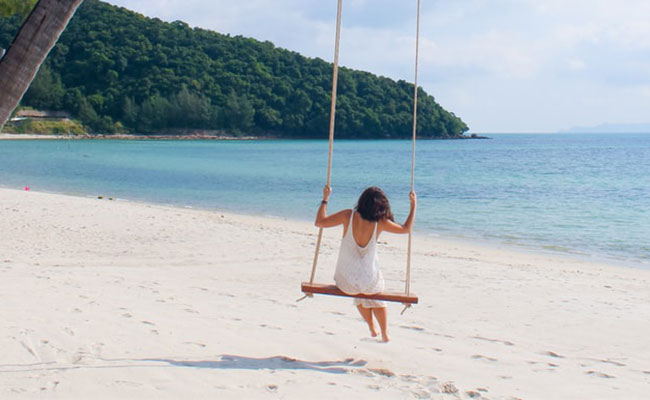
Where to Stay in Thailand
If you're visiting Thailand for two or three weeks, then you're probably torn over which parts of the country to visit.
There are so many islands to consider, and so many areas of the country that boast beautiful scenery and interesting culture.
The key is to strike a balance between not staying in one place too long and not visiting places too quickly – otherwise you don't get to really explore and appreciate them.
My general advice for a holiday would be to visit three areas of the country:
Some might say you should avoid Bangkok because it's really busy, hot, and doesn't have a beach.
In my opinion, if you're going to visit Thailand, then you should experience Bangkok.
It's actually a good place to arrive and spend a few days.
Because if you've had a long haul flight, then you will most likely be landing in Bangkok, so you can catch a taxi to your hotel and get some rest, rather than waiting around for a connecting flight.
Moreover, if you're flying across a couple of time zones, then you will be jet-lagged.
I'd rather get over my jet lag in Bangkok and be fully refreshed for visiting the beaches and islands, than sleeping half the day away at a beautiful beach location.
So two or three nights in Bangkok is ideal.
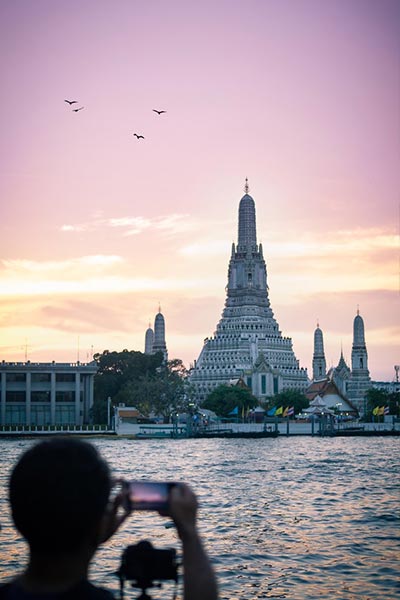
Wat Arun is a Buddhist temple in Bangkok Yai district of Bangkok.
If you arrive in the afternoon on the first day, then you can hang out at the hotel, maybe visit a market and grab something to eat, and then get some sleep.
You're probably going to sleep in late, or wake up early the next day and then want to sleep again in the afternoon to get over your jet lag.
You'll then have one more full day where you feel more energetic and can visit the Grand Palace , maybe a floating market, and do a bit of shopping .
Another option is to spend a couple of days in Bangkok when you arrive, and then come back to Bangkok for a day before you leave.
The reasoning behind this is that you might want to do some shopping before you go home, but you might not want to do that shopping when you arrive because you would have to carry the stuff around with you for the rest of your holiday.
This really depends on how much shopping you plan on taking home.
If you have more time on your hands in Bangkok, check out my list of things to do in the Big Mango.
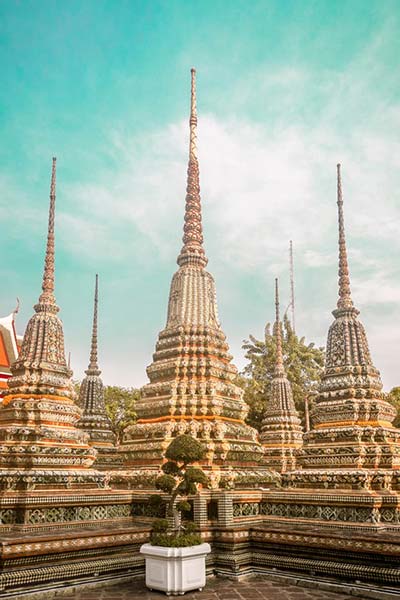
At the Grand Palace, Bangkok
Staying on Thailand's Islands
It goes without saying that the Southern islands have the best beaches.
There are some good beaches that you can get to in a couple of hours from Bangkok, such as on Koh Larn and Koh Samet.
However, if you choose to go to Phuket or Koh Samui, from that base you will be able to visit a number of other islands too.
You also have a good selection of beaches on those islands.
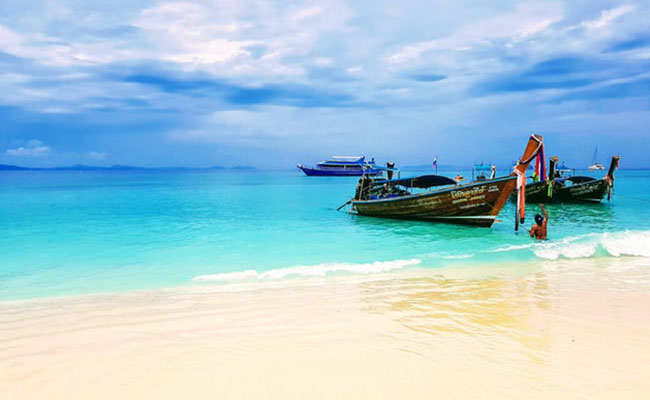
The Phi Phi Islands are an island group in Thailand, between the large island of Phuket and the Straits of Malacca coast of Thailand.
Yes, these are the more commercial islands, and while there are more intimate and less touristy islands, pretty much all of the best beach locations have a lot of visitor traffic in high season.
Furthermore, the more remote islands aren't always that practical for families, and some lack good accommodation and things to do, particularly for kids.
If you come for a second or third holiday, then you might want to explore some of the less popular but more beautiful islands.
But if this is your first and potentially your only trip, then I recommend going to Phuket or Koh Samui, and from these islands taking boat trips to see other beautiful islands and beaches.
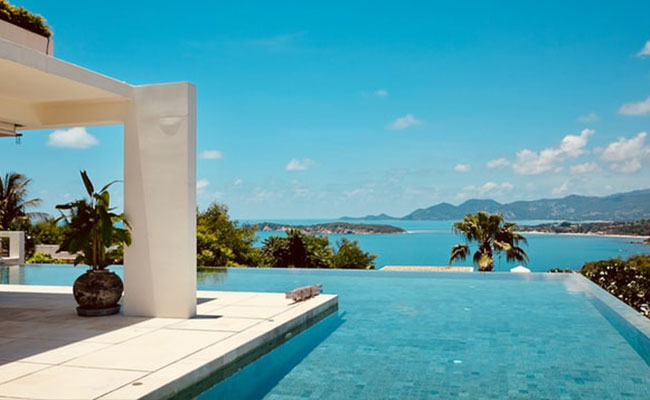
Located a short drive from Choeng Mon Beach in Koh Samui, Samujana boast luxurious villas.
The North (Chiang Mai)
You might choose to simply stay down south and enjoy the beaches, and I wouldn't blame you. I'd happily sit on a deckchair for the entire holiday, to'ing and fro'ing from the massage spot, gym, and bar.
But if you want a deeper insight to the country and to see another side to Thailand, then the North is a good place to visit.
Chang Mai in particular is very popular, Westerner-friendly city – surrounded by beautiful nature.
You can base yourself in Chang Mai for a few days and go off for trips to Doi Intanon National Park, Doi Suthep Temple, the Elephant Nature Park , and enjoy the good food and night markets of the North.
Again, like Bangkok, a few nights here will be adequate.
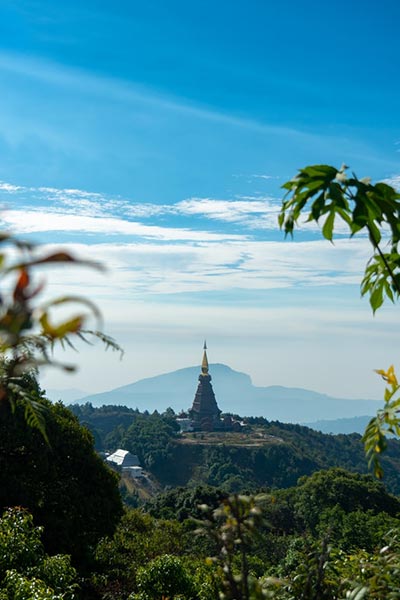
Doi Inthanon, in Chiang Mai, is the highest mountain in Thailand.
Got an Extra Few Days?
If you find yourself back in Bangkok and you've got an extra few days to spare, then you might go to Koh Samet for a couple of nights, which is three hours from Bangkok and a 30-minute ferry.
Samet is not far from the aptly named Sin City of Pattaya. Indeed, if you are a single man or with a group of friends, you might like to see the bright lights of Pattaya, which is a beach resort too, and only a couple of hours drive from Bangkok.
Probably not the smartest idea to take your wife or girlfriend there. Unless they aren't bothered by go-go bars and hookers.
Visiting, in Summary
Those who have lived in Thailand for a while, or visited on holiday a number of times, may poo-poo my suggestions and give you recommendations of places to go that are off the beaten track.
But that's because the more time you spend in Thailand the more you want to get away from the touristy areas and find more isolated places.
But generally, for a first holiday, you want to be in the thick of it and see the main attractions of the things other people have seen.
You want easy access and plenty of options. Trust me, I've been there, done it, and worn the t-shirt.
That being said, if you are traveling for three months or more and spending a month in Thailand, then you can visit these popular hotspots and then go off and visit some more remote places like these.
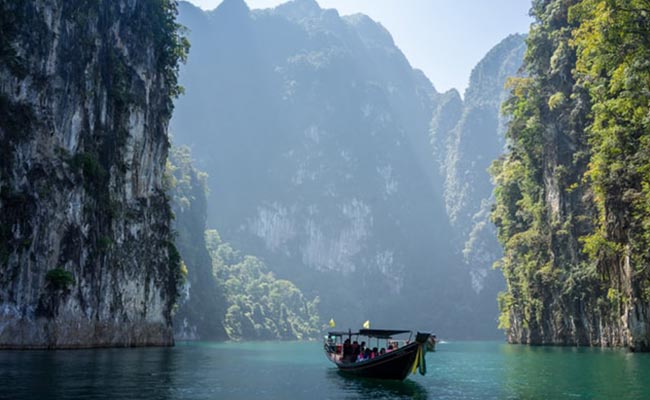
Khao Sok is situated on the mainland between Phuket, Krabi, Khao Lak and Koh Samui.
When to Visit Thailand – Weather
The weather in Thailand does vary by region at different times of the year.
Generally speaking, you can follow this guide:
- Dry Season: March-May
- Rainy Season: May-October
- Cool Season: November-February
For a place by place breakdown, check out my extensive weather guide.
Accommodation for Different Budgets
Depending on whether you're a solo backpacker or a family of 4 on the holiday of a lifetime, accommodation requirements vary for different types of traveler.
Luckily, Thailand generally has something for everyone in all corners of the country.
From package holidays to hostels and mid-range hotels, check out my booking recommendations here.
Also consider that if you aren't too fussed about plush accommodation, you can rock up and book in at what's available.
During high season you won't be able to be too picky, as the nicer rooms and bungalows get booked up in advance.
But let me just say that I have never not been able to get a room somewhere in any of Asia.
And you're planning on catching a train or a bus, check out 12GO here.
Pre-Holiday To-Do List
The large majority of countries are subject to a visa exemption. This means that when their citizens enter Thailand they get a stamp that permits a stay of 30 days.
If you are coming towards the end of your trip and you think you might want to stay longer, you can visit an immigration office and extend this stay by another 30 days for 1,900 Baht.
However, in the interest of good planning, if you think that extending your stay is a good possibility, you should consider getting a single entry tourist visa, which gives you a 60-day stay in the country.
A multiple entry tourist visa is a six month visa, but you can only stay for 60 days at a time. You then have to leave the country and come back into activate a further 60 days.
Again, the multiple entry option can be extended for 30 days by going to immigration and paying the aforementioned fee.
Generally speaking, those coming for a two or three week holiday won't need to worry about a visa.
2. Travel Insurance
It goes without saying that you will need travel insurance.
Not only does travel insurance protects you against hospital bills if you fall ill or have an accident, but some policies will also cover you against cancellation of your flights or lost baggage and stolen goods.
Travel insurance is one of those things that many people forget to do in the midst of all the excitement of planning.
So I suggest this is something that you do early on in your trip planning process to make sure that you are covered from the moment you leave your house.
I don't want to make you fear going on holiday, but at the end of the day it gives you peace of mind.
See my travel insurance recommendations here.
3. Suitable Backpack/Holdall
Another thing that people often don't consider until the last minute, mainly because they have an old suitcase or holdall in the attic that they always use, is suitable luggage.
Consider what type of holiday you are taking:
- Are you going to be traveling on trains and buses?
- Are you going to be trekking or diving?
- Or are you going to be staying in luxury hotels and taking private cars everywhere and having someone to hold your back?
You won't want a big clunky suitcase if you are taking an overnight train from Bangkok to Chiang Mai .
And if you are going trekking , then you may need to consider a second bag in addition to your main backpack; one that is detachable and can be taken with your essentials on the trek.
In fact, a second, smaller backpack is advisable for everyone visiting Thailand.
You will need something practical to carry around with you during the daytime.
Although, when out shopping and in crowds you should wear backpacks on your front so that you can't be pick-pocketed, particularly in Bangkok.
I'm not trying to scare you here, the same goes for any major city you are visiting, including my hometown, London.
4. Mosquito Spray
You can find mosquito spray in Thailand at pretty much every convenience store, and is likely to be cheaper than in your home country.
However, if you have sensitive skin, you may want to look for a higher quality brand in your home country before you leave.
Your mosquito spray should contain DEET.
Note that the higher percentage of DEET does not represent how effective it is but how long it lasts:
Products containing lower concentrations of DEET are as effective as those with higher concentrations, but for shorter periods of time. On average, products containing 100% DEET will be effective for 9.5 hours, 30% DEET for 6.5 hours, 15% DEET for 5 hours, 10% DEET for 3 hours and 5% DEET for 2 hours ( source )
5. Vaccinations
There maybe some vaccinations for you to consider before you visit Thailand.
These can usually be done by your regular Doctor, and even at some pharmacies. There's a full list here.
6. Changing Money
People often change up lots of money before they go on holiday, thinking that they will run out quickly, but this is not a wise thing to do.
It isn't a good idea to travel with loads of money on you, just in case you lose it.
Moreover, I usually get a better exchange rate when I arrive in Bangkok than I do back home, anyway. You will find a number of exhange places in central Bangkok.
If you want to do it at the airport, don't do it at the exchange booth inside the arrivals area, do it when you come out into the main foyer, as you tend to get better rate there.
You might choose to change up to $300 before you leave, depending on how many people are traveling.
That being said, it is expensive to withdraw money in Thailand- because you get charged for the local withdrawal and charged by your bank back home for the international withdrawal.
This could end up costing you $5-6 dollars per withdrawal.
That said, this isn't really a big deal if you only make three withdrawals across the whole holiday.
Note that cash machines are generally limited to a withdrawal amount of 20,000 Baht per time.
If you do want to avoid fees, then consider finding a credit or debit card provider that doesn't charge for international transactions, and/or has low rates on withdrawals.
You might also want to consider something like the Revolut Card.
This is a multi-currency prepaid card, which allows you to pre-load money and spend abroad.
One I would recommend is making a plan before you leave, detailing how much money you plan to take in cash, both money changed into Thai Baht and money in your native currency to change up in Thailand.
And then consider a cost-effective strategy for withdrawing money and spending money on your cards.
7. Health Insurance
If you have travel insurance then you aren't likely to need this, but for those with specific conditions, or who want specific extra cover – perhaps for an extended period, health insurance may be a requirement.
Cigna is a reputable and reliable health insurer for those living and traveling in Thailand.
You can get a quote using their 2-minute quote page by clicking here.
Streaming & Secure Internet Browsing
If you want to watch Netflix, Amazon Prime, or Disney + on holiday, you will need to bypass GEO restrictions to watch some of the content.
You can do this with a VPN. A VPN is also a good idea when using WIFI in airports and cafes, particularly if you are going to be logging onto personal banking or accessing other sensitive information from your laptop, phone or tablet.
I have a post with more details on this. Read the VPN post here.
Planning Your Trip, In Summary
Bookmark this guide, or print it out and make planning your trip to Thailand easy.
If you follow along section-by-section and tick things off as you go, you'll have all the important bases covered.
Here's an overview of what we've covered in this guide:
- Decide where to stay: Bangkok, Islands, Chiang Mai (North) and places to visit
- Check the weather before deciding on your travel dates
- Research accommodation, based on your budget
- Do you need a visa?
- Get travel insurance
- Get a suitable backpack/holdall
- Get mosquito spray
- Get vaccinations
- Change money
- Consider health insurance
- Get a VPN to bypass GEO restrictions on Netflix, and safe browsing
Proper planning makes for a successful outcome, or at least so my mother said.
Have a great trip!
GET MY NEWSLETTER
Join thousands of others who receive my monthly roundup of content & insider tips on how to survive & thrive in Thailand.
Last Updated on May 28, 2020
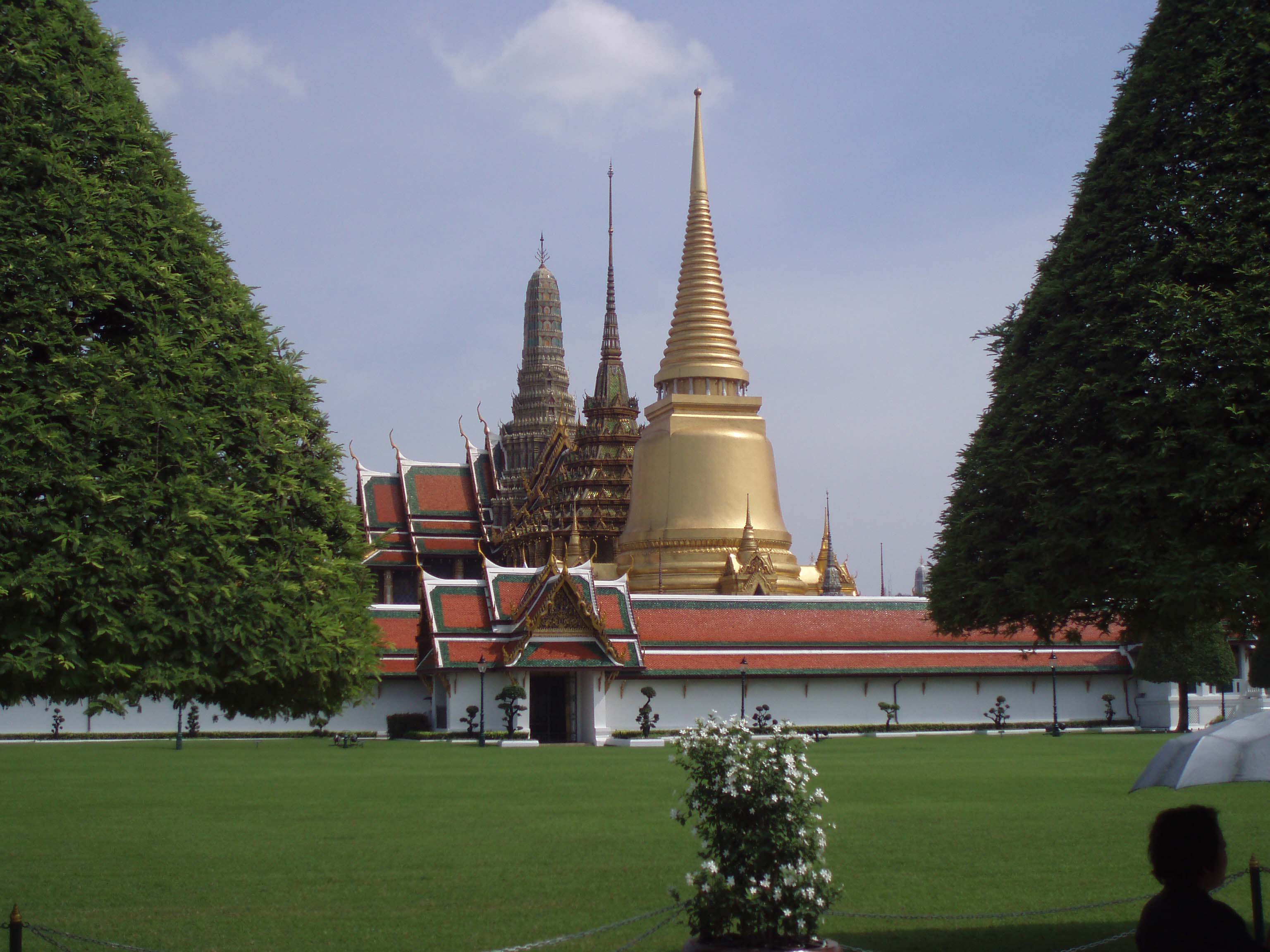
Comments Sort by : newest | oldest
Raymond Richards says
May 14, 2020 at 12:26 am
Claire says
May 14, 2020 at 11:25 pm
TheThailandLife says
May 15, 2020 at 8:23 pm
Leave a Reply Cancel reply
Your email address will not be published. Required fields are marked *
Notify me when new comments are added.
Finding the Universe
Travel tales, photography and a dash of humor
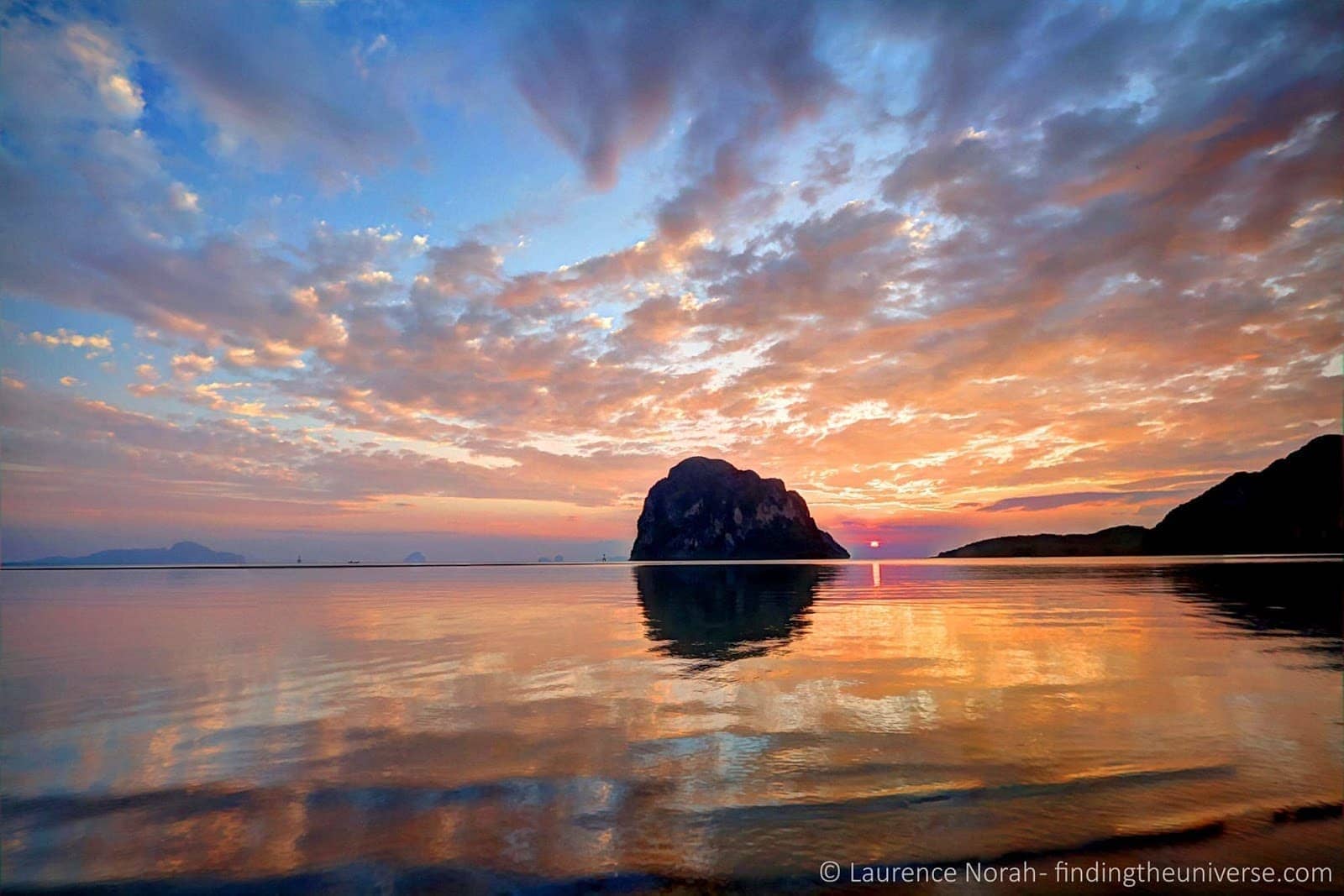
2 Weeks In Thailand: A Detailed Thailand Itinerary and Trip Planner
Last updated: July 15, 2022 . Written by Laurence Norah - 27 Comments
I’ve travelled extensively in Thailand, and it’s easily one of my favourite countries in Asia – the friendly people, the excellent food, the relaxed vibe all make for a fantastic country to travel in.
I’ve written a great deal on Thailand already , but haven’t put together a suggested Thailand itinerary post, as I’ve done for other many other countries like Sri Lanka , the UK and New Zealand .
Time to change that! Here’s everything you need to know for the perfect 2 weeks in Thailand, including information on getting around, the food, cultural considerations, budget, where to stay in Thailand – and lots more! Enjoy, and pop any questions in the comments at the end. Let’s get started.
2 Weeks in Thailand: A Detailed Thailand Itinerary
Days 1 – 3: bangkok.
Bangkok is one of those cities that seem to divide opinion. Personally, I love it . It’s vibrant, chaotic, and a feast for the senses. It’s a heck of an introduction to the country though, so prepare yourself. And, if you’re coming from somewhere a bit cooler, give yourself time to adjust to the humidity and heat, and be aware of the signs of dehydration .
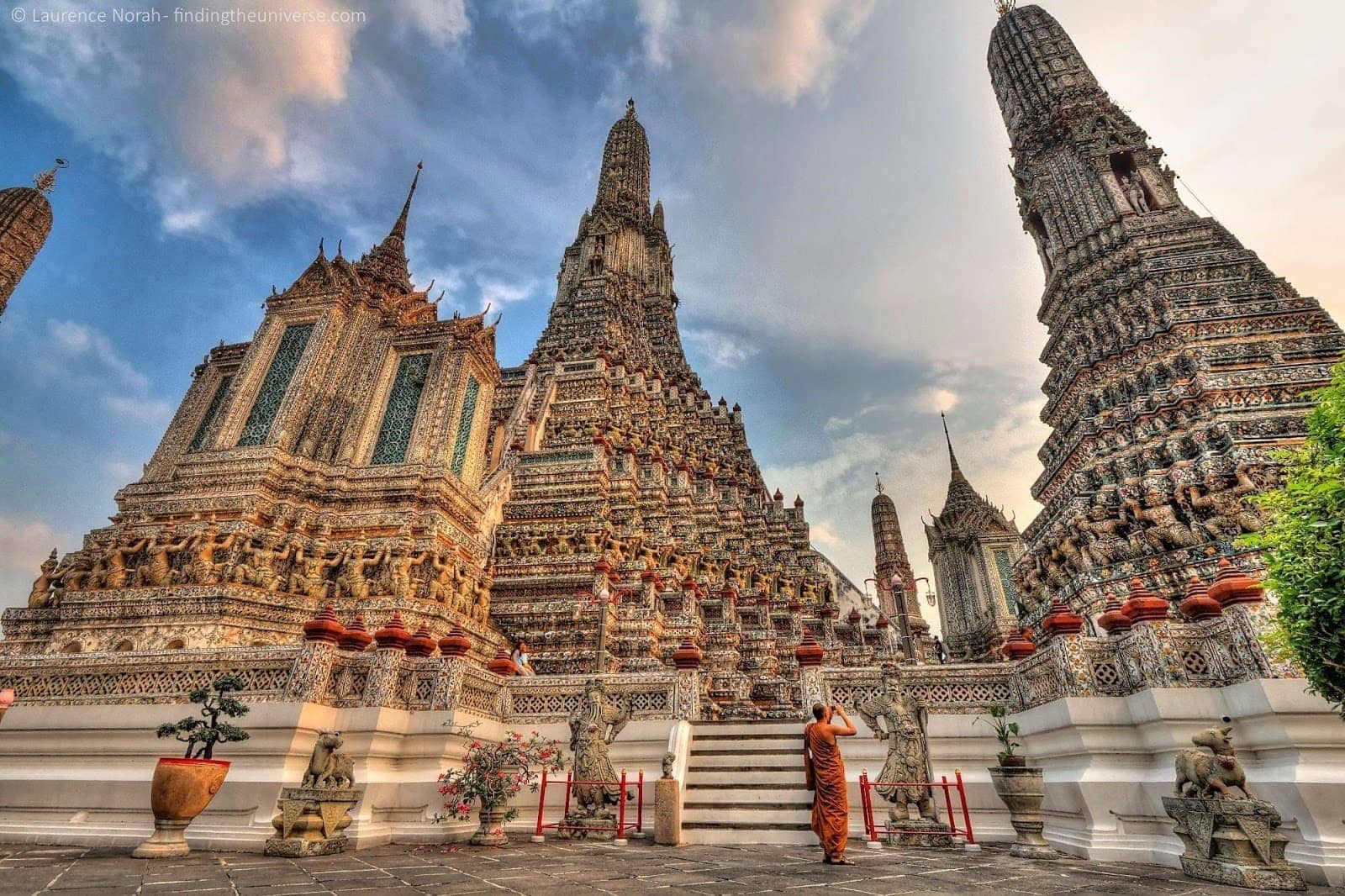
So, what to do in Bangkok? Well, lots! At the top of your list should be Wat Phra Kaeo and the Grand Palace . This is the number one sight in Bangkok, and for good reason. The walled compound contains both these sights, with the 19th century Grand Palace a fascinating mix of Western and Thai styles. Wat Phra Kaeo, which houses the Emerald Buddha, is generally regarded as the most important Buddhist temple in the country.
My favourite sight in Bangkok though is Wat Arun . Particularly beautiful at sunset, this temple consists of a huge prang, or tower, which soars to nearly 300ft in height – a part of which you can climb (although the stairs are fairly steep and terrifying!). It’s covered in porcelain and seashells, and is quite beautiful to behold.
There are many more temples in Bangkok, so you won’t be short of temples and Buddha statues. Some notable highlights include Wat Pho (the temple of the reclining Buddha) and Wat Saket (wonderfully situated on a mountain above the old city).
And, of course, there’s more to Bangkok than temples. Bangkok has fantastic nightlife and shopping, with some of the best rooftop bars in Thailand. I’m also a huge fan of the street food, which is plentiful, cheap, and generally safe to eat. If you’re want some tips on staying healthy when eating street food, check out this excellent guide to eating street food without getting sick from my friend Jodi.
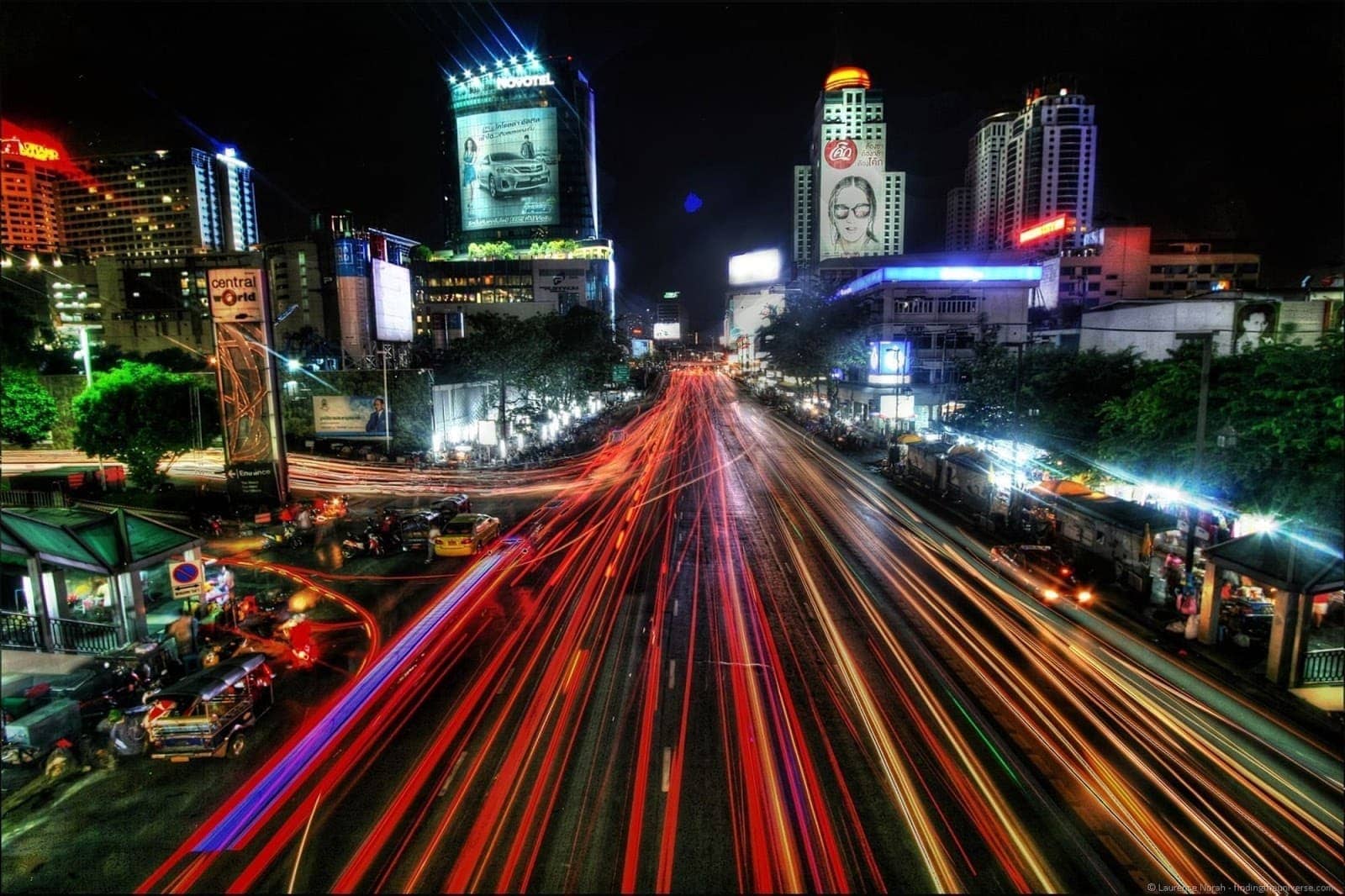
Another attraction in Bangkok is the floating market – which is basically a street market without the streets, held in the canals and rivers of the city, with vendors plying their wares from their boats. Many of these markets have become tourist traps now rather than a place that locals go to do their shopping, but there are still some worth visiting. There’s an excellent list here to some of the floating markets worth visiting in Bangkok .
Other than that, my advice for Bangkok is to spend some time getting acclimatized, meeting people, wandering the streets, checking out the street vendors, and immersing yourself in the vibrant chaos that is this city.
You might also want to check out the Go City Bangkok Pass . This includes a number of attractions in Bangkok, as well as a tour to Ayutthaya. Worth checking out to see if it might save you money.
One last tip for Bangkok – taxis are generally reliable and widely available, as well as cost effective. You need to insist on the meter being put on before you get in though, and don’t be upset if they drive off – just wait for another taxi to turn up. Finally, be aware of the classic cheap tuk-tuk scam – it IS too good to be true, I assure you. You can read more about avoiding the common Thailand scams at the end of the post.
Where to stay in Bangkok
Bangkok is a large city, and there are a huge range of accommodation options to choose from. These range from budget friendly backpacker hotels through to five star luxury hotels, and everything in between.
Here are some suggestions to get you started across a range of price points, which are approximately ordered from budget to high end.
- Baan U-Sabai Hostel – Less than a mile from the popular Khao San road, this highly rated hostel offers great value rooms with shared bathrooms.
- Siam Eco Hostel – Found in Bangkok’s Phaya Thai district, this is a very highly rated hostel with air conditioned rooms, a shared kitchen and a shared lounge. Free breakfast is included.
- Old Capital Bike Inn -a good value well rated 3* hotel with individually styled air conditioned en-suite rooms. Breakfast is included, and it’s close to the Khao San road area
- Inn a Day – this well rated 4* hotel offers river side views and is just 650 yards from the Grand Palace. Air-conditioned rooms feature balconies and en-suite facilities, and breakfast is included
- Siam Kempinski Hotel Bangkok – a luxurious and well located 5* hotel with pools, a range of restaurants and spacious en-suite rooms
- Mandarin Oriental Bangkok – a spectacular high end 5* hotel with beautiful river views, on-site spa, high end restaurants, and wonderful rooms.
Of course, there are a great many more options in Bangkok to choose from! You can see listings for Bangkok on Booking.com here , Hostelworld here , and Agoda here
Getting to Kanchanaburi from Bangkok
Your next stop on this 2 week tour of Thailand is the town of Kanchanaburi. This is around 100 miles west of Bangkok, and you have a few options for getting here.
First, you can take public transport. A train runs from Bangkok’s Thonburi station, and takes around 3 hours to Kanchanaburi. This was my preferred option as the scenery is lovely. Alternatively, you can take a public bus, with both minibuses and larger public buses making the route. These take around 2 hours, although it will vary depending on traffic.
You can also hire a private transfer that will take you from your accommodation in Bangkok to Kanchanaburi. This is obviously less hassle than navigating the public transport system and will save you time, with the downside that it will be slightly more expensive.
Another option is to take a tour from Bangkok. For example, this 2 day tour includes your transportation, overnight accommodation and visits all the major attractions in the area. A good option if you’d like everything to be arranged for you.
Finally, you might prefer to drive. It is possible to rent a car in Thailand, usually all you need is a valid driver’s license and an international driving permit. The traffic in and around the cities can be quite hectic, but outside of the cities the roads are usually pretty good, with road signs in both Thai and English.
For this itinerary though, I’d suggest that driving wouldn’t be my first choice, as the public transport system is easy to use and works well.
Days 4 – 6: Kanchanaburi
From Bangkok, my next recommended destination is Kanchanaburi . Whilst the name of the town might not instantly ring any bells, the river it sits on probably will, it’s the River Kwai, famous for its bridge, the story of which was turned into a film .
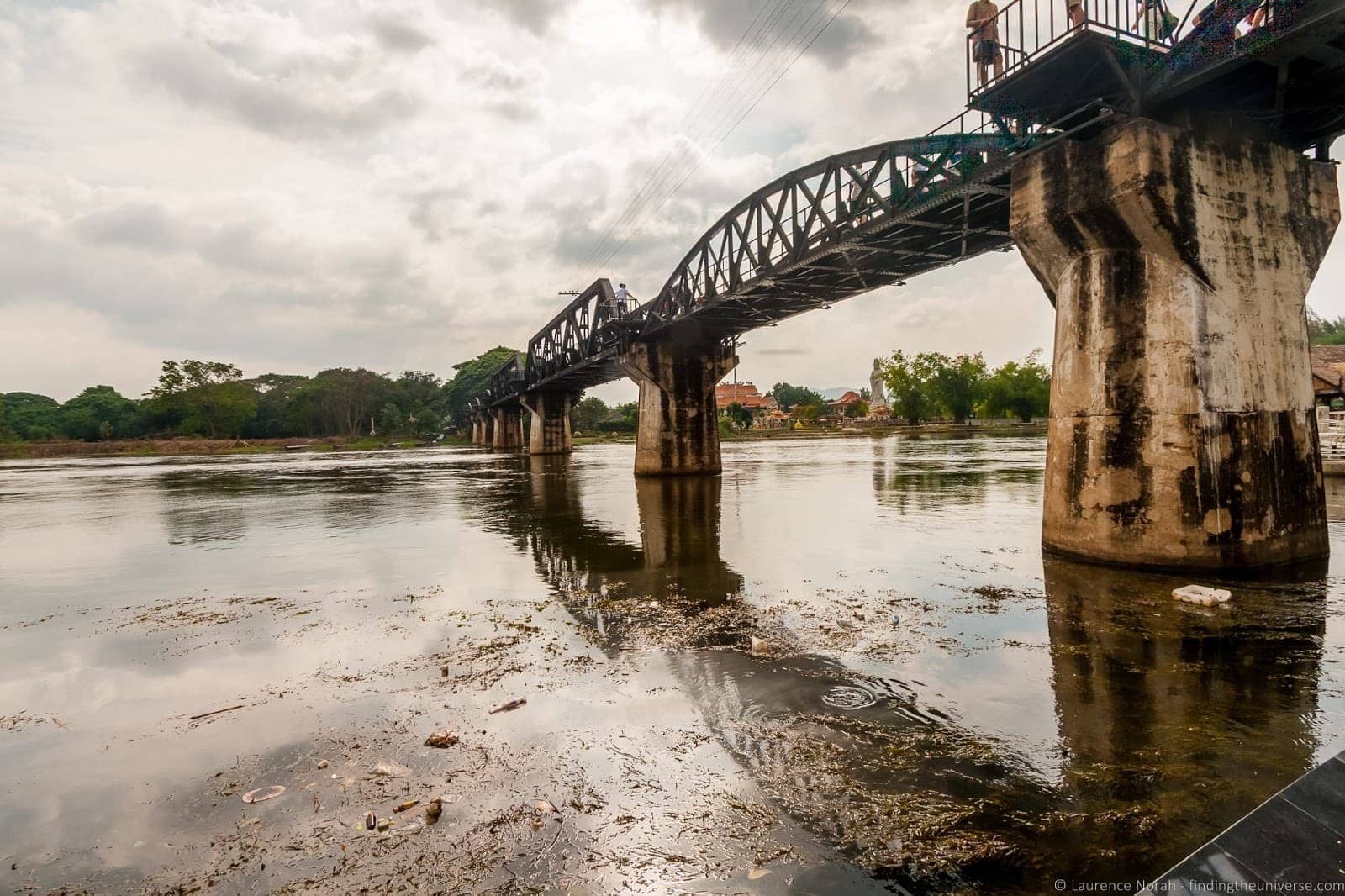
It was here during the second world war that thousands of allied prisoners of war were held by the Japanese and forced to construct a railway that was to link Thailand with Burma. This included the construction of the bridge and 415km of railway. The construction of the railway was very costly in terms of civilian life, both of Asian civilian labourers and Allied civil wars, with estimates of over 90,000 civilians and nearly 13,000 POW’s losing their lives.
Today there are a number of museums dedicated to the story of the railway, with the best in my opinion being the JEATH war museum, located in downtown Kanchanaburi, a few kilometres from the bridge itself. There are also the war cemeteries, home to the many who lost their lives here. Finally, you can also walk across the bridge itself, and take a ride on the death railway itself.
You might be wondering why I’ve scheduled three days in Kanchanaburi. Well, this was actually one of my favourite parts of Thailand, and one that is often overlooked – folks pop here for the Death Railway, but then don’t explore the other attractions. I’ve written a whole post to visiting Kanchanaburi , but in brief, make sure you take a day trip to the spectacular Erawan Falls, hit up the night market, visit the giant tree and visit a temple inside a cave.
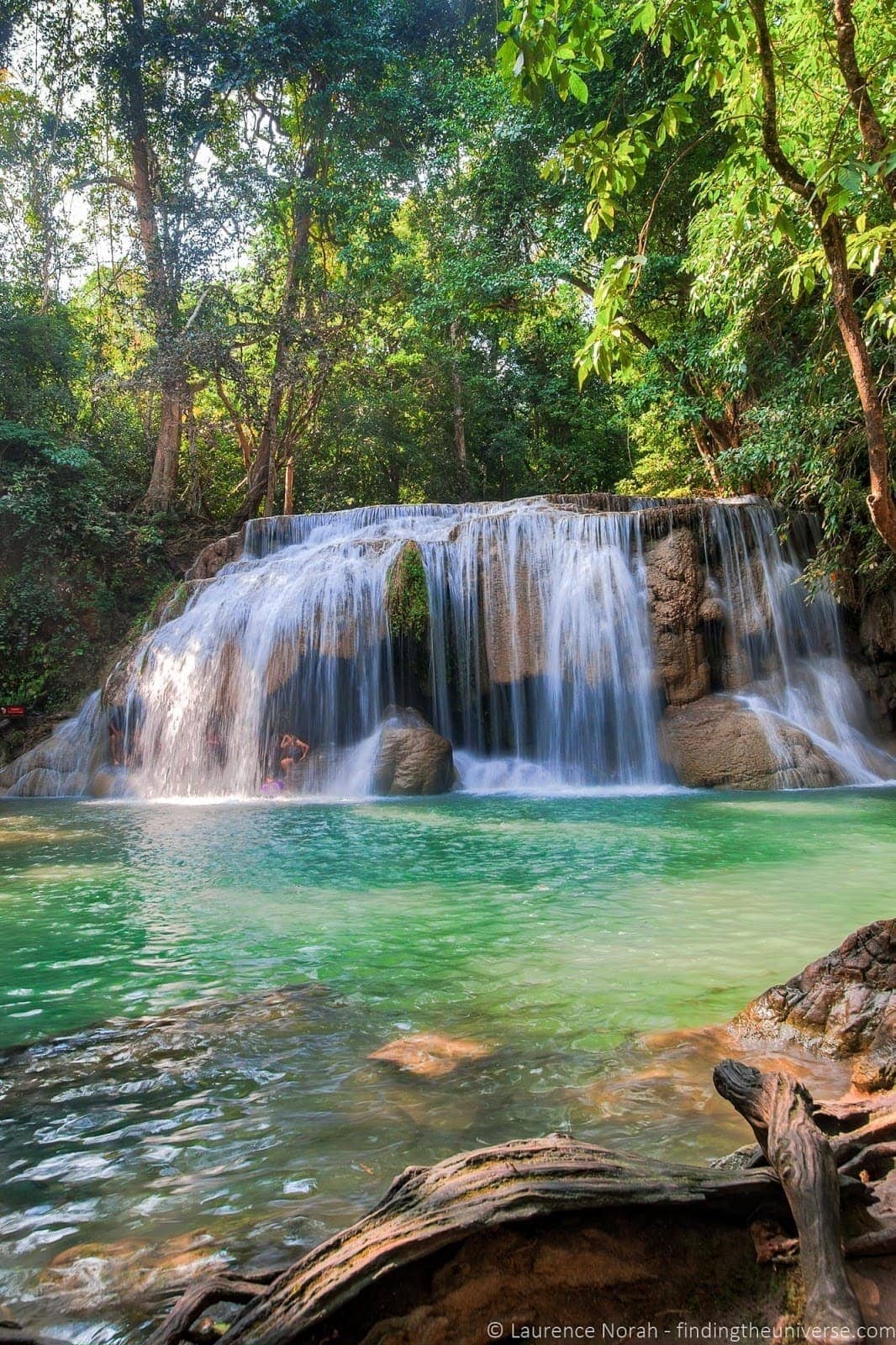
I’d also recommend staying at a guest house on the river. The sunsets are gorgeous, and as long as you’re not visiting over a weekend or other festival, it can be a very peaceful and relaxing experience.
Where to stay in Kanchanaburi
We stayed at the River Guesthouse ( here on Google Maps ) which was quiet, a short walk from the train station, and a bargain. We can’t find a website or a way to book this property online (we just turned up), although a phone number is listed on the Google Maps entry that you can try. It is quite “rustic” and definitely a budget option, but we enjoyed it.
Kanchanaburi is not a huge town in terms of population, but it is geographically spread out. There are three main locations – the northern area around the famous railway bridge, the area near the main train station which is around 1.5 miles along the bridge, and then the main part of the town which is 3 miles along the river from the bridge.
My recommendation is to stay in the area near the train station on the river. This puts you within an easy 30 minute walk (or short bike ride) of the main attractions, and you’ll also be near the night market that happens in the vicinity of the train station.
Here are some suggested accommodation options in this area, again ranging from budget to more expensive.
- T & T Hostel – this is a well reviewed and great value budget hostel location. It’s around a mile from the bridge and 750 yards from the train station, with a lovely riverside location. Both private and shared rooms are available.
- Sam’s House Kanchanaburi – this is a popular and well located great value three star property that features both raft house style accommodation and bungalows. There’s an on-site restaurant and a great value breakfast option is available.
- Natee The Riverfront Hotel – a very well reviewed 4* river front hotel around a mile from the famous bridge. Rooms are en-suite with tea/coffee making facilities, there are good river views and an on-site wellness centre with hot tub.
- River Kwai View Hotel – this 4* hotel is found 450 yards from the River Kwai bridge, making it a great option if you’d prefer to be close to this attraction. Rooms are air-conditioned, en-suite, and offer good views.
- Dheva Mantra Resort – if you’d prefer a resort option, this 5* property is a fantastic option. It’s a little way out of town, but features everything from a fitness centre through to on-site restaurants and a large landscaped pool.
Again, there are lots more options beyond the above. You can see listings for Kanchanaburi on Booking.com here , Hostelworld here , and Agoda here .
Getting to Ayutthaya from Kanchanaburi
There’s no direct connection from Kanchanaburi to Ayutthaya. Your best option is to return to Bangkok. From here, there are a number of bus and train options, which will take around 2 hours to reach Ayutthaya.
Days 7 & 8: Ayutthaya
From Kanchanaburi I’d suggest heading to one of Thailand’s old capital cities. There are two main options to choose from, Ayutthaya and Sukhothai, and on a shorter trip like this, I think picking just one of these two will suffice.
They are slightly different in style – Ayutthaya consists of a series of temples and structures which exist inside today’s city, which is still vibrant and bustling. Sukhothai is more of a preserved city complex, with the old city remains standing around 12km from where the new city is.
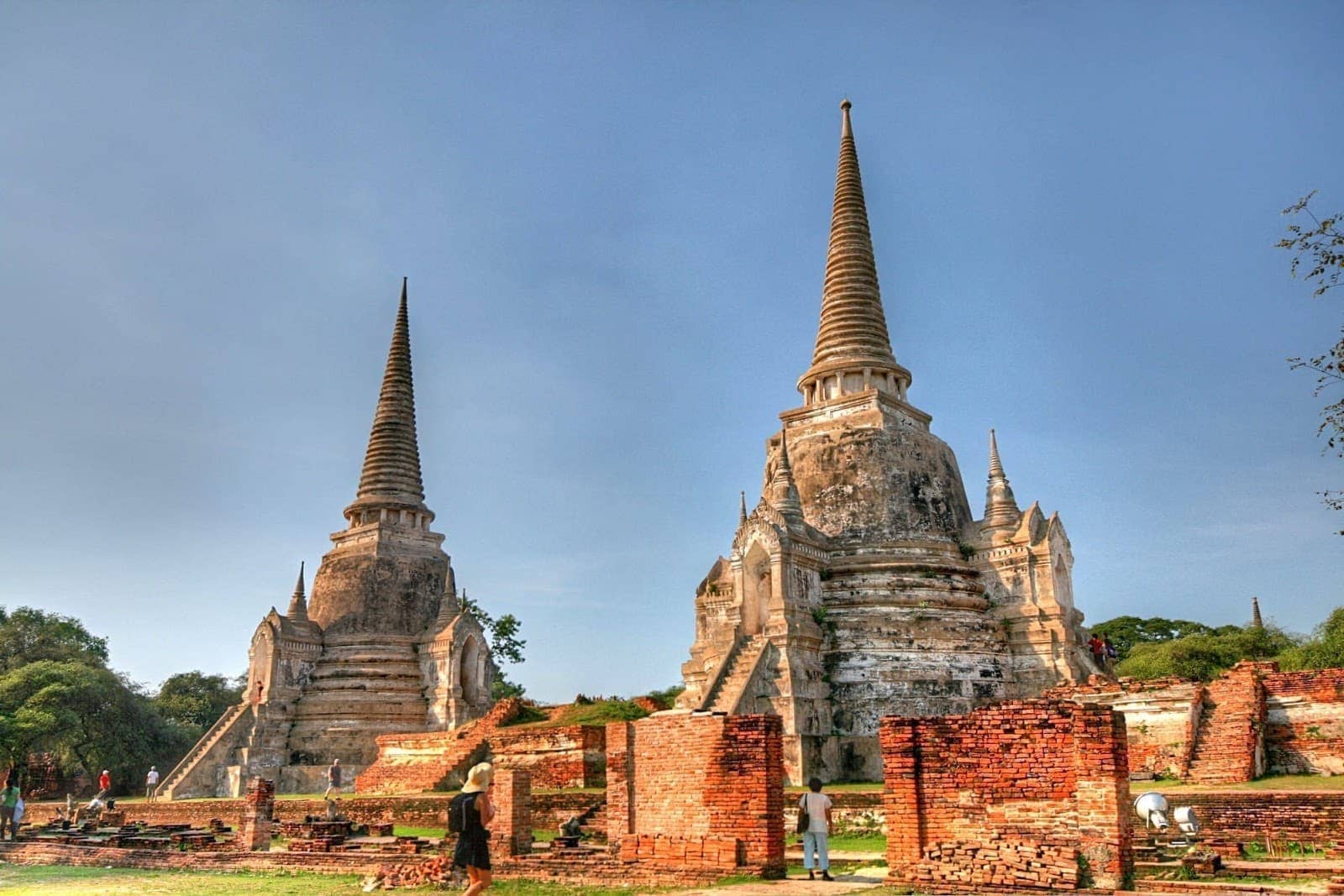
Ayutthaya is also closer to Bangkok, being only a couple of hours or so north, so it’s a little easier to get to, with frequent buses and trains. Sukhothai is a seven hour bus ride from Bangkok, so requires a bit more effort. That’s why, for this itinerary, I’m recommending Ayutthaya.
There is a lot to see in Ayutthaya. At a time, this was the largest city in the world, with over a million inhabitants, and despite the city being burnt to the ground by the Burmese in the 18th century, a lot has survived.
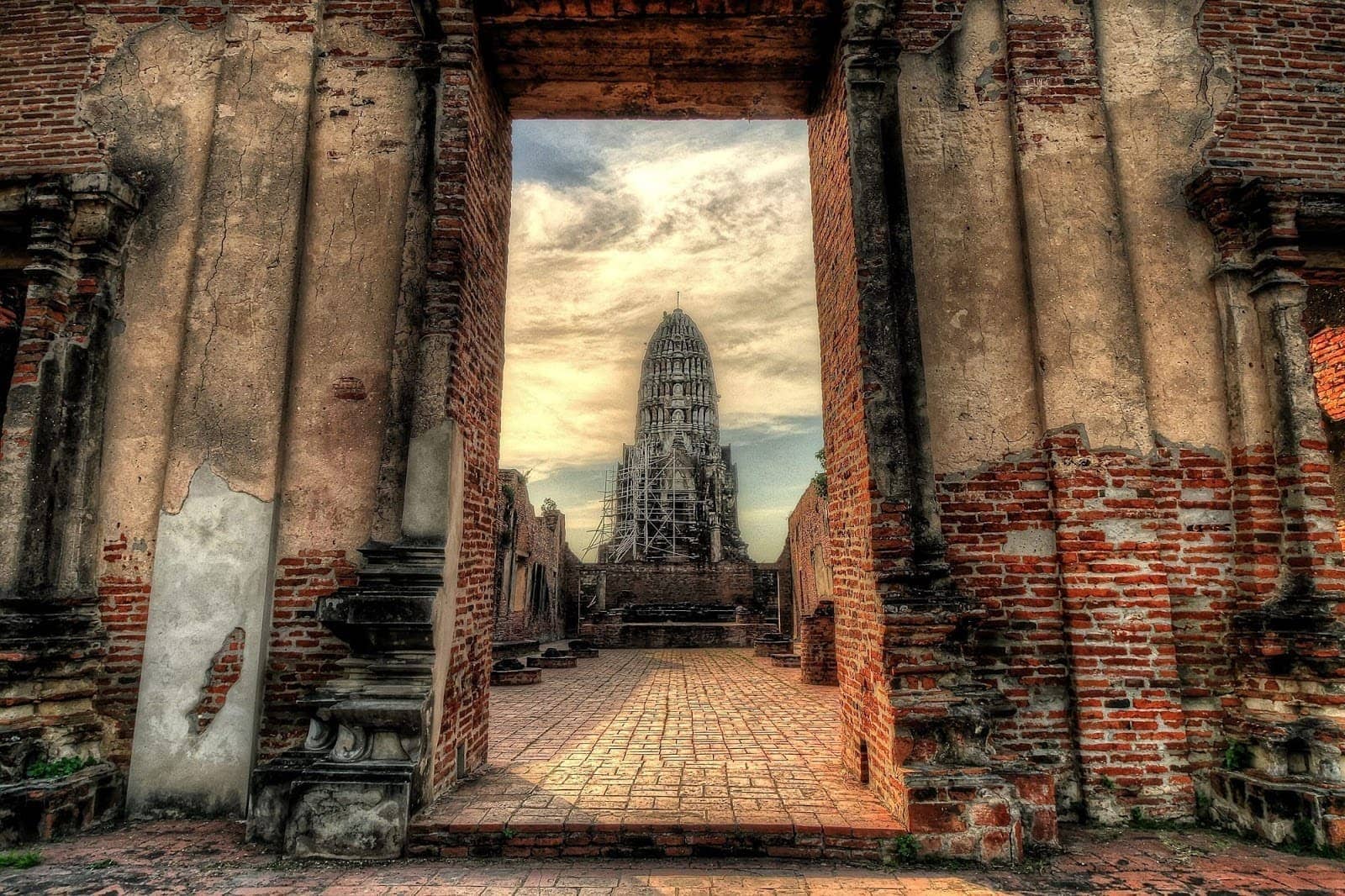
Again, I have a whole post on the highlights of Ayutthaya , which should give you plenty of ideas for your visit as well as tips on accommodation and getting around. As a quick summary though, be sure to visit Wat Phra Mahathat, Wat Phra Si Sanphet, Wat Chaiwatthanaram and Wat Buddhaisawan.
For your accommodation in Ayutthaya, see listings on booking.com here .
Days 9 & 10: Khao Sok
Now it’s time to head south, to one of my favourite spots in Thailand – Khao Sok National Park. This place is, for some reason, not well visited, but it is truly unlike anywhere else I visited in the country.
Set up in 1980, the park consists of a large man made lake, surrounded by Thailand’s largest virgin rainforest.
This forest is home to all sorts of creatures, from elephant to bear – although sighting them in the wild is quite the challenge! It’s also famously home to the Raffelsia Kerrii, one of the largest flowers in the world, which can have flowers up to a meter in diameter! They also smell absolutely terrible in order to attract flies, which carry the pollen.
Sighting one of these flowers is a definite highlight of a visit, although as they only flower for a week or so, you have to be fairly lucky.
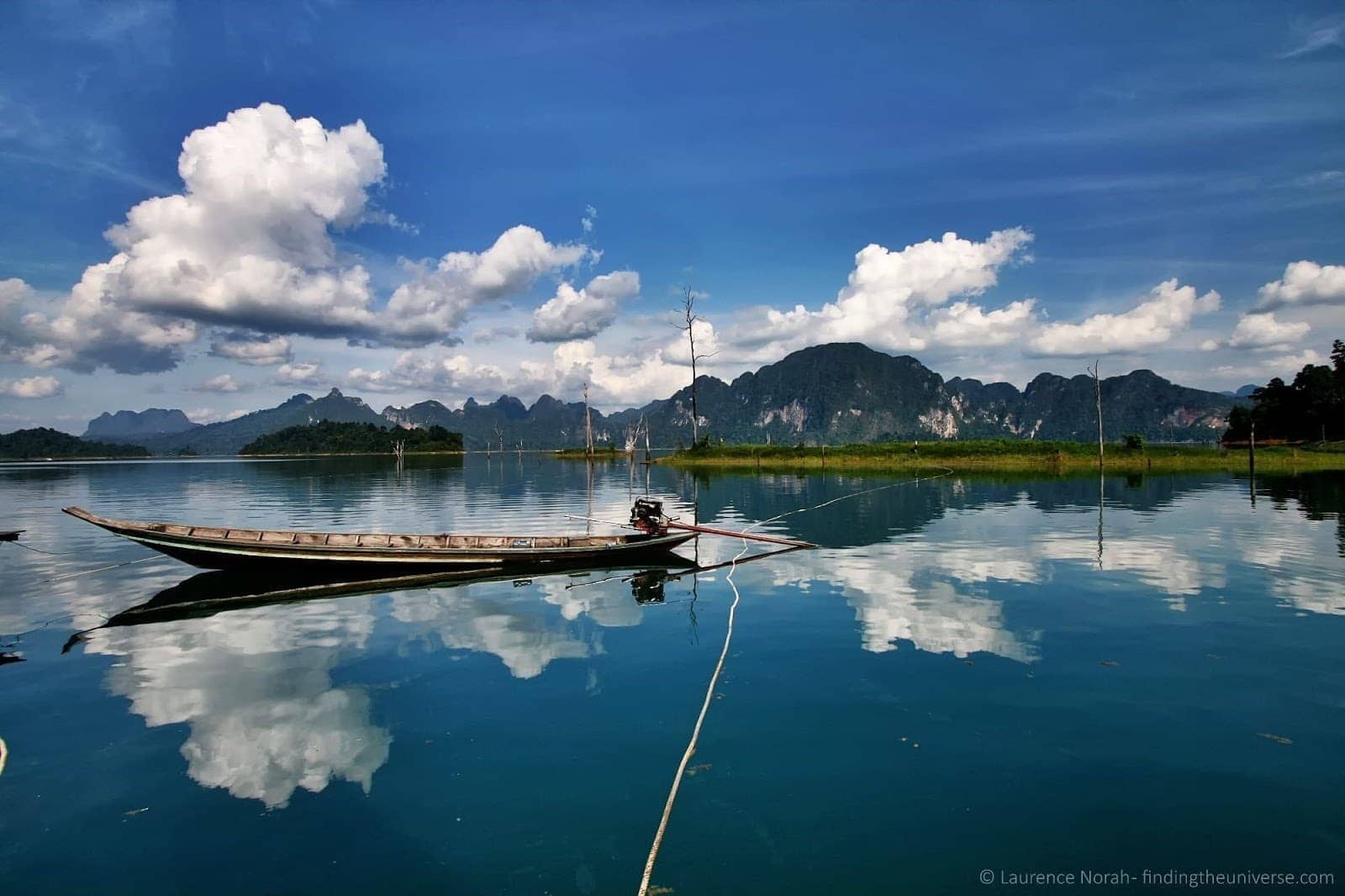
My highlight of Khao Sok National Park though was the visit to the lakehouse. At time of writing, there are around 16 properties to choose from, all of which offer roughly the same sort of thing – a series of floating bungalows on the gorgeous Cheow Lan lake, where you’ll be surrounded by limestone karsts and beautiful jungles, with the lake being the perfect temperature for a swim.
I’d say that Cheow Lan lake should be the number one priority for any visitor to Thailand, that’s how much I enjoyed it there. To visit, you need to book in advance as you need to get a boat to the lakehouse. We stayed at Smiley’s Lakehouse which offered reasonable accommodation including en-suite facilities. There are quite a few lake house options to choose from depending on your budget, so take a look and see what works for you.
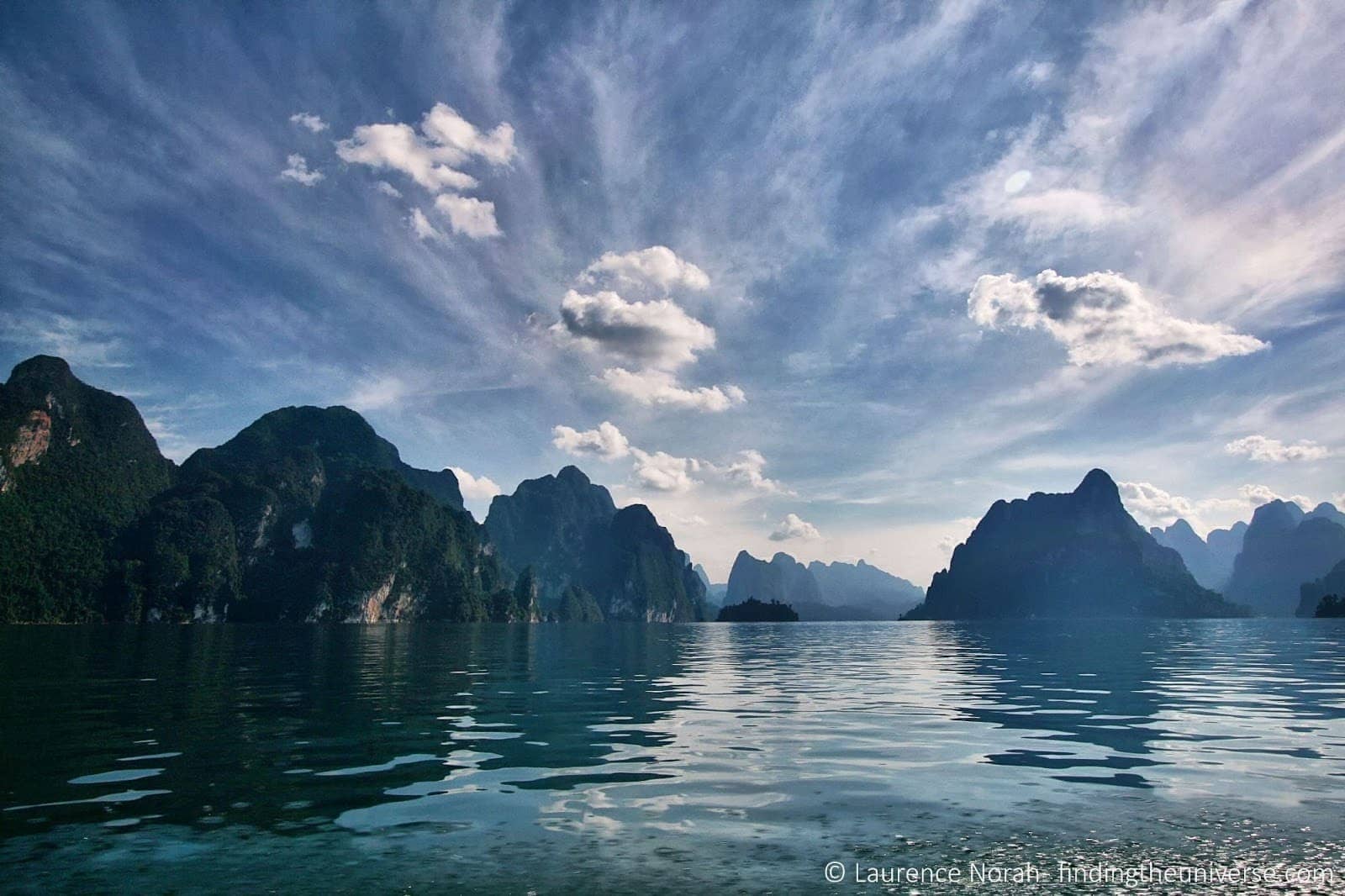
We also stayed in the jungle, at Smiley’s Bungalows , who arranged the lake house and transfers. Here we went trekking in the jungle, learnt all about leeches, and relaxed. Also, when at Smiley’s Bungalows, do try the Jungle Massaman curry – it’s excellent!
Getting to Khao Sok can be a bit tricky – the train line can get very busy so you definitely need to book in advance. Many guest houses will pick you up from the nearest station (Surat Thani). There are also minibuses here from various locations around Thailand, and both a bus and plane service from Bangkok. Read more on the options from around Thailand here , and be sure to book in advance for whichever option you choose.
You can read more about my thoughts on visiting both the Cheow Lan Lake in Khao Sok National Park and Khao Sok jungle .
Where to stay in Khao Sok National Park
There are two main locations for accommodation in Khao Sok National Park. There’s Khao Sok village, which is home to a range of hotels, guesthouses and restaurants. This is also where you’ll find the Khao Sok National Park headquarters. Here are some options in Khao Sok.
- Sunshine Khao Sok Hostel – at the budget end of the spectrum is this highly rated and great value hostel. Rooms are air-conditioned and feature mountains views, with shared facilities. Breakfast is also available.
- Khaosok Good View Resort – this is a great value well rated hotel with private en-suite rooms that feature balconies and jungle views. There’s also a pool and on-site restaurant.
- The Bliss Khao Sok Boutique Lodge – this boutique hotel features comfortable en-suite rooms with air-conditioning and terraces. There’s also a restaurant and bar.
- Khao Sok Jasmine Garden Resort – this 3* resort features a pool and restaurant. Accommodation is in en-suite air-conditioned bungalows.
The other main area where you can stay is around Cheow Lan Lake, where you’ll find the lake house resorts. This would be my recommended place to stay. The scenery is beautiful, staying in a floating lake house is a unique experience, and it’s a wonderful opportunity to disconnect from the world.
There are around 15 lake hotels where you can stay the night and these need to be booked in advance. Here are some options to choose from.
They vary from very basic through to more luxurious options, and as always, we’d advise reading reviews before booking to avoid disappointment. It’s also worth being aware that many properties do not have cell coverage or WiFi reception, and might require payments in cash.
- Keereetara – this is one of the lakehouses which is closer to the pier. It offers good value accommodation with breakfast included.
- Keereewarin – comfortable cabins at a reasonable price with good reviews. Breakfast is included
- Panvaree Resort – this lake house resort offers a number of accommodation options, which include individual floating cabins. All rooms are air-conditioned, breakfast is included, and the reviews are good
- 500 Rai Floating Resort – if you’re looking for the best, this is the lake house to go for. The air-conditioned floating bungalows are large and spacious and some come with hot tubs! It is the most expensive option, but reviews suggest it is worth it.
Days 11 – 14: Beaches
Ok, from Khao Sok it’s time to hit up the gorgeous beaches of Thailand for your last four days. Where you go next is really up to the sort of style of beach you’re looking for. If you’re into resorts, people, and partying, then hop on the four hour minibus down to Phuket and go nuts.
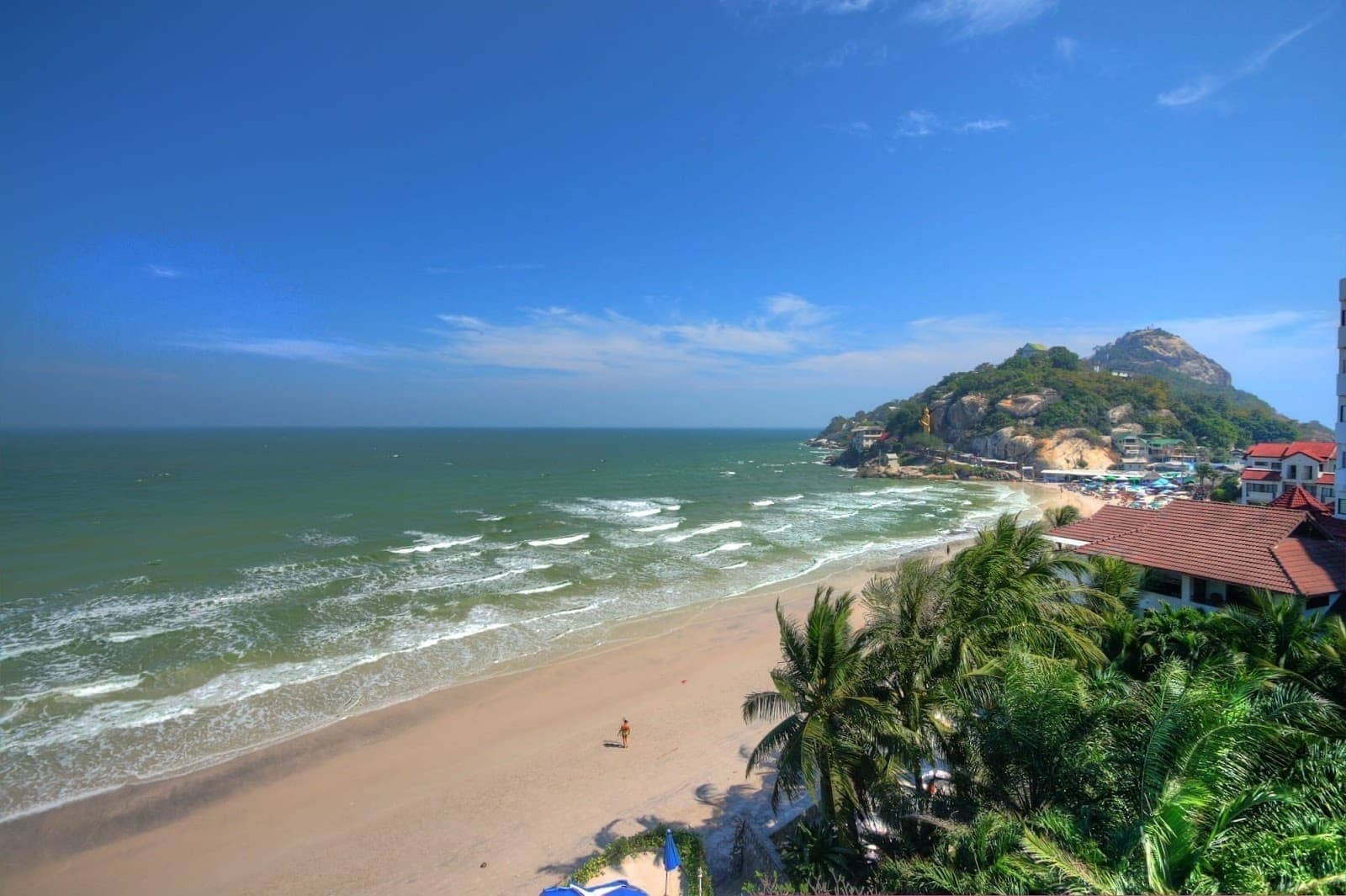
Or, for a quieter experience, head to Thai Mueang, about an hour north of Phuket, where the beaches are generally silent and the guesthouses quiet.
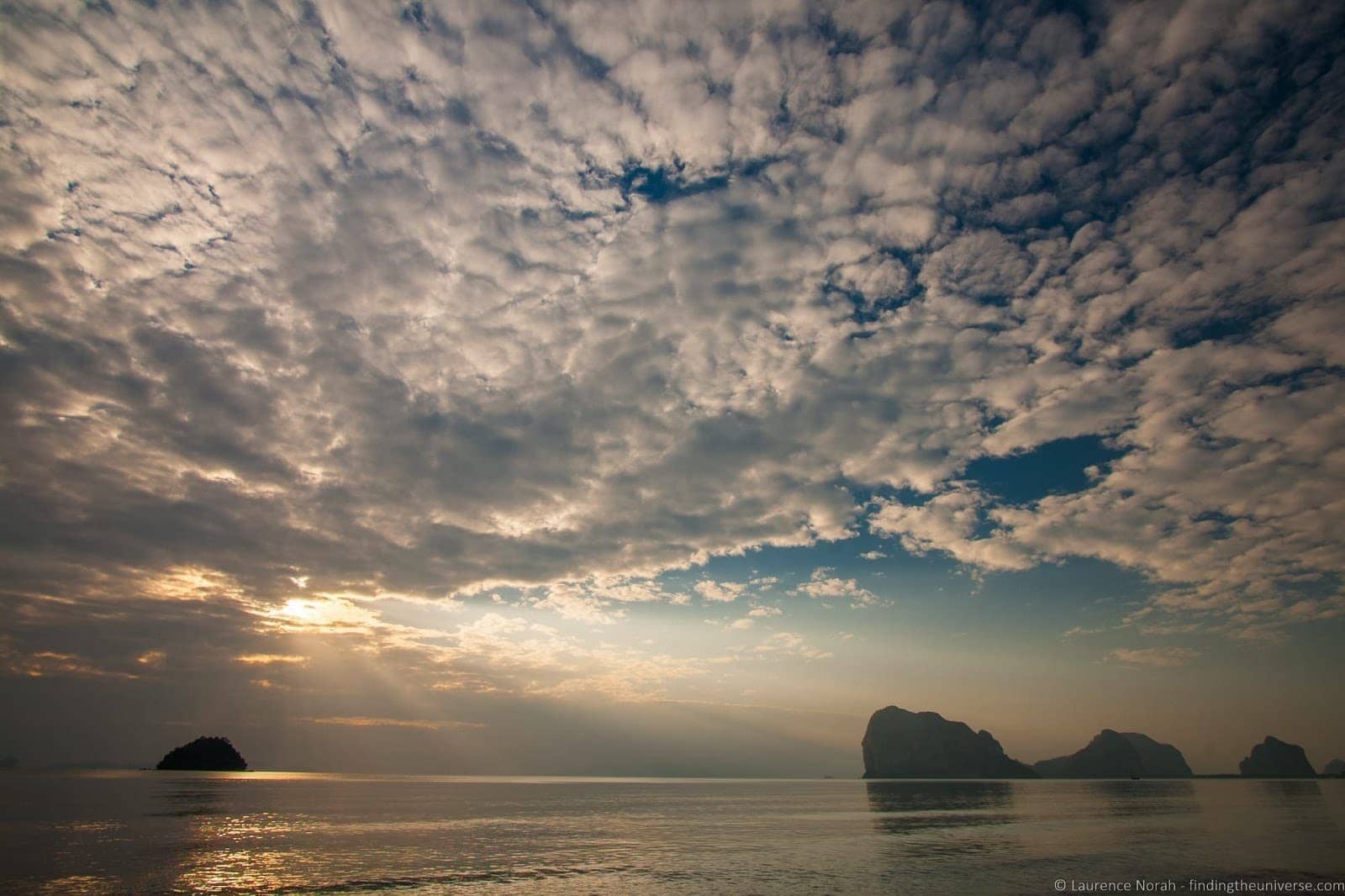
You could also head further down the coast, either to somewhere like Krabi or Ko Lanta, or head even further down to Trang, which is more popular with Thai tourists and offers gorgeous beaches, easy access to quieter islands and fantastic sunsets. Read more about my Trang experiences here.
As you can see, plenty of options, and something to suit everyone!
2 Week Thailand Itinerary Map
Here’s a map of the destinations visited for reference, which you can see on Google Maps here.
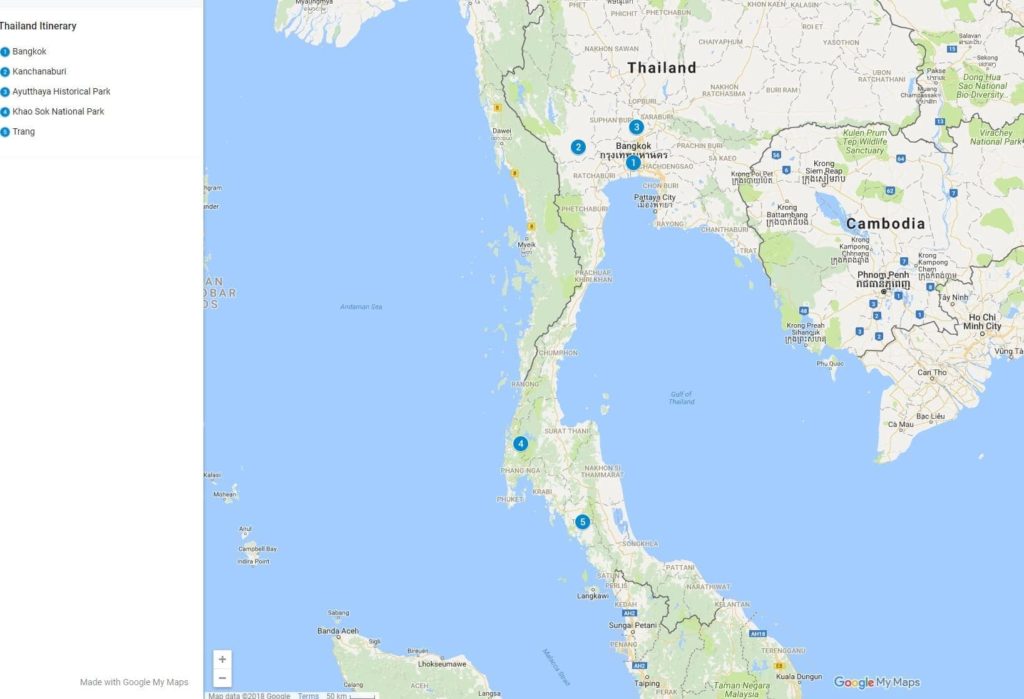
Thailand Itinerary Summary
- 3 Days : Bangkok
- 2 Days: Kanchanaburi
- 2 Days: Ayutthaya
- 2 Days: Khao Sok
- 4 Days: Beaches in the south
Locations to consider adding to your Thailand Itinerary
There is a lot to do and see in Thailand, even if most folks do seem to gravitate towards Phuket and surrounds. Not that there’s anything wrong with this – Thailand has fantastic beaches and gorgeous weather – but there is a lot more to the country than many see.
In case the above Thailand itinerary doesn’t check all your boxes, or you were looking for a longer itinerary (or you just want to try and pack more in!), here are some more of my favourite Thailand destinations for you to think about adding to your itinerary.
Chiang Mai, Chiang Rai and Pai
If you’re looking for less of a beach experience and more mountains, forests and temples, then head north to Thailand’s hill country. Here you’ll find the town of Chiang Mai, where many foreigners base themselves long term thanks to the nice climate, sizeable community, fast internet and low cost of living. There’s a fantastic night market here, arguably the best smoothie cart in the world , a gorgeous temple on the hill, and if you like national parks, Doi Inthanon isn’t far away.
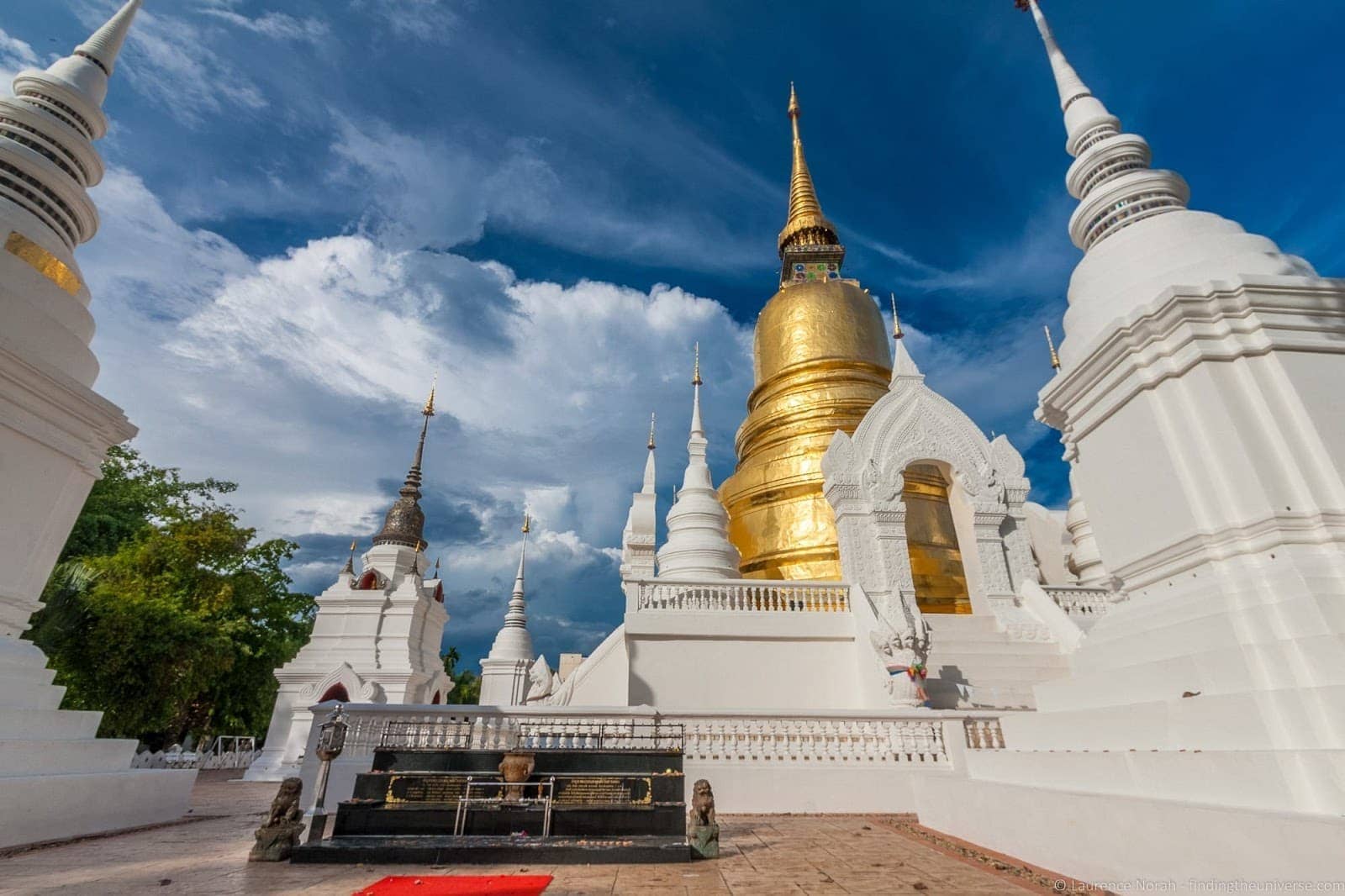
Head even further north and you’ll find Pai. This is a gorgeous little mountain town that many a traveller has fallen deeply in love with .
Finally, right near the top of the country is Chiang Rai, inside the infamous golden triangle. Chiang Rai is particularly noteworthy – as well as for the opium trade – for two temples: the White Temple of Chiang Rai , and the Black Temple of Chiang Rai . These are two different but entirely epic temples / art installations, both of which are very much worth the journey north alone.
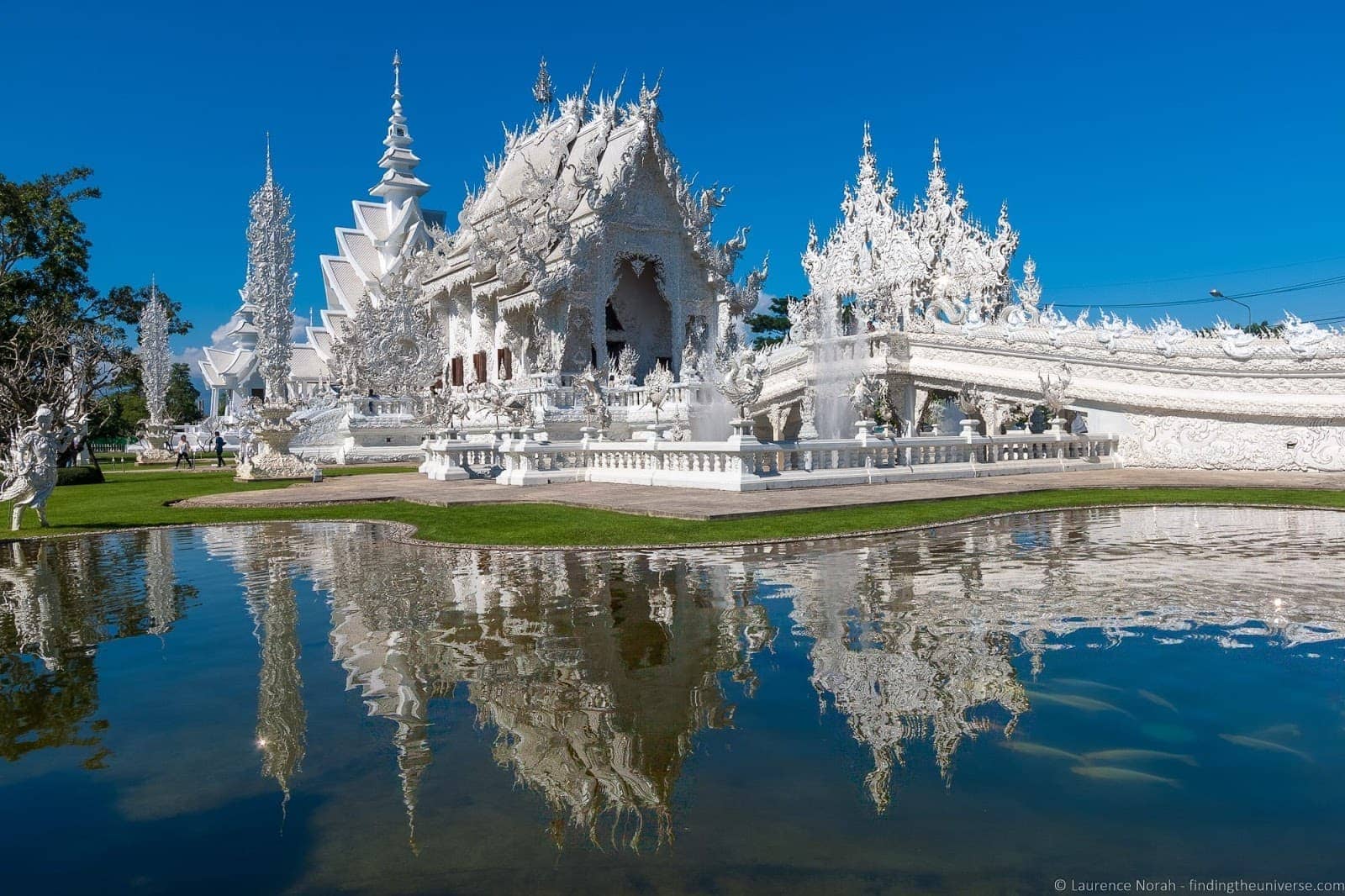
This one is going to take you to the East of Thailand, where far fewer visitors head. It’s worth the effort though, because this part of Thailand is quite different, with more influence from the Khmer empire, meaning the temples here have more in common with places like Angkor Wat than the rest of Thailand. In fact, Phanom Rung , my favourite of all the temples in Thailand, was built by the Khmer empire before they built Angkor Wat.
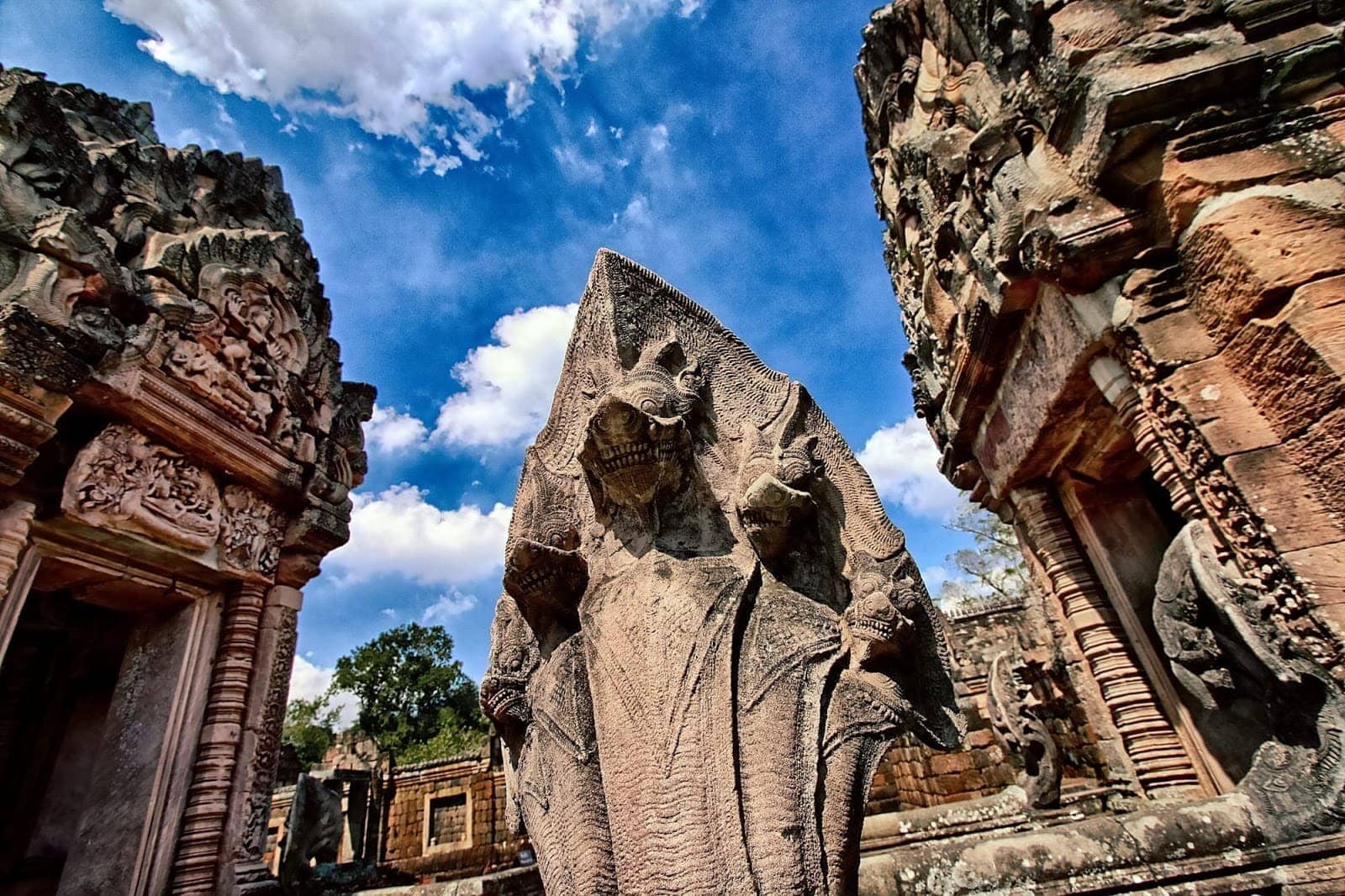
There’s more to do than visit a temple on a volcano though. There’s the lotus pond enclosed Prasat Muang Tam, the silk weaving village of Amphoe Na Pho and the Lower Northeastern Cultural Centre, where you can learn all about the history of the region.
You can read more about visiting this part of Thailand in my post on Buriram , plus you should read about Khao Yai National Park , which is in a similar direction and is one of the better places in Thailand to see elephant in the wild.
As I mentioned earlier, Sukhothai is one of Thailand’s ancient capital cities, and a UNESCO world heritage site. The old city is separate from the new city, and you can wander the ruins and explore the temples, trying to imagine what it must have been like in its heyday.
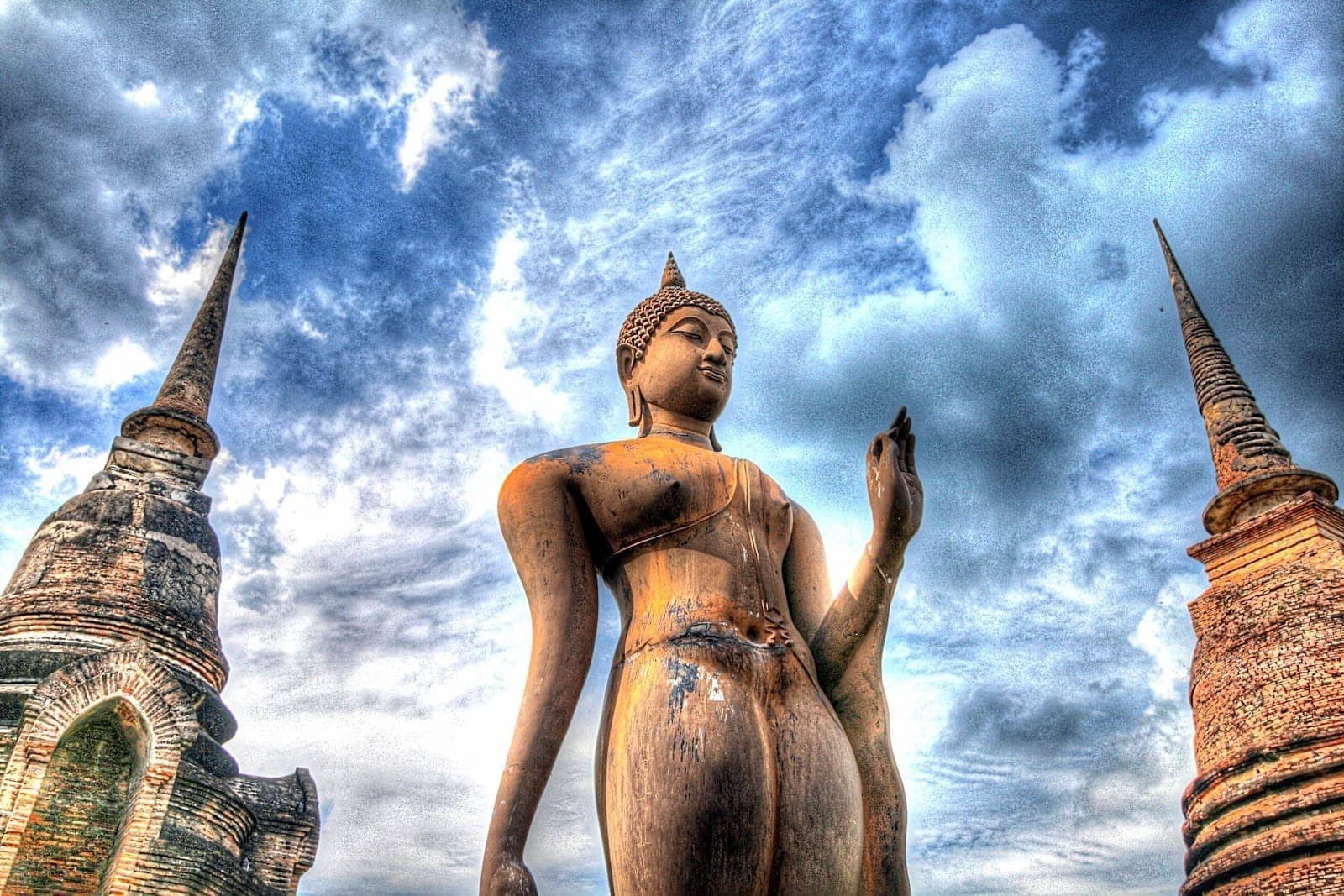
The complex is large, so you can easily spend at least a day here, and as it’s quite a way north of Bangkok (7 hours by train), is worth adding to your itinerary only if you’re already heading to somewhere like Chiang Mai – it makes a handy stopping point on the way.
Sukhothai is particularly popular during the Loi Krathong festival, when thousands of people come to see the city in all its splendour. We visited during Loi Krathong, so check out the post on visiting Sukhothai during Loi Krathong for more information.
Similan Islands
Thailand is famous for its islands, and rightly so, with an overwhelming collection of paradise like palm fringed options to choose from.
So, to say that the Similan Islands are arguably some of the best islands that Thailand has to offer is high praise indeed. Rated as one of the best dive sites in the world, the real draw here is the snorkelling and diving. The water has unbelievable visibility, is lovely and warm, and there’s a plethora of marine life to see.
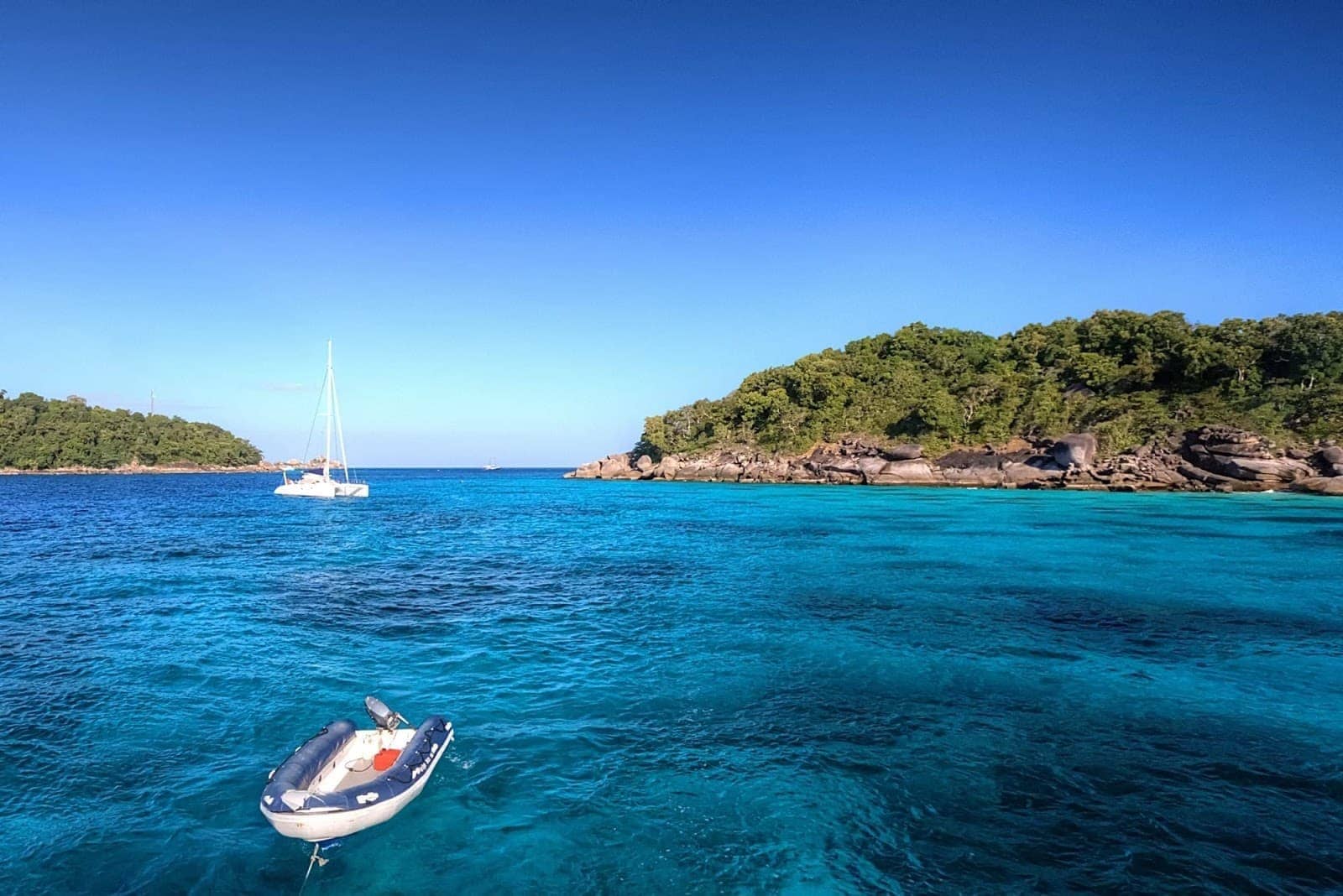
You can also stay on the islands, which is what we did, meaning you can experience them when they are a little quieter and the day trippers have left. Or, you can do a live aboard option on a boat, which tends to be more suited to divers. Read a fellow bloggers experience of diving the Similar Islands here , and check out my thoughts on our two day Similan Islands visit here , which includes tips on getting there, where to stay, and approximate costs.
Last but not least in my list of options to consider is the city of Songkhla. This was my favourite of all the cities we visited in Thailand, despite it not being that well known to tourists. It’s on the south east coastline of Thailand, around 1000km from Bangkok, and has strong Malay and Chinese influences.
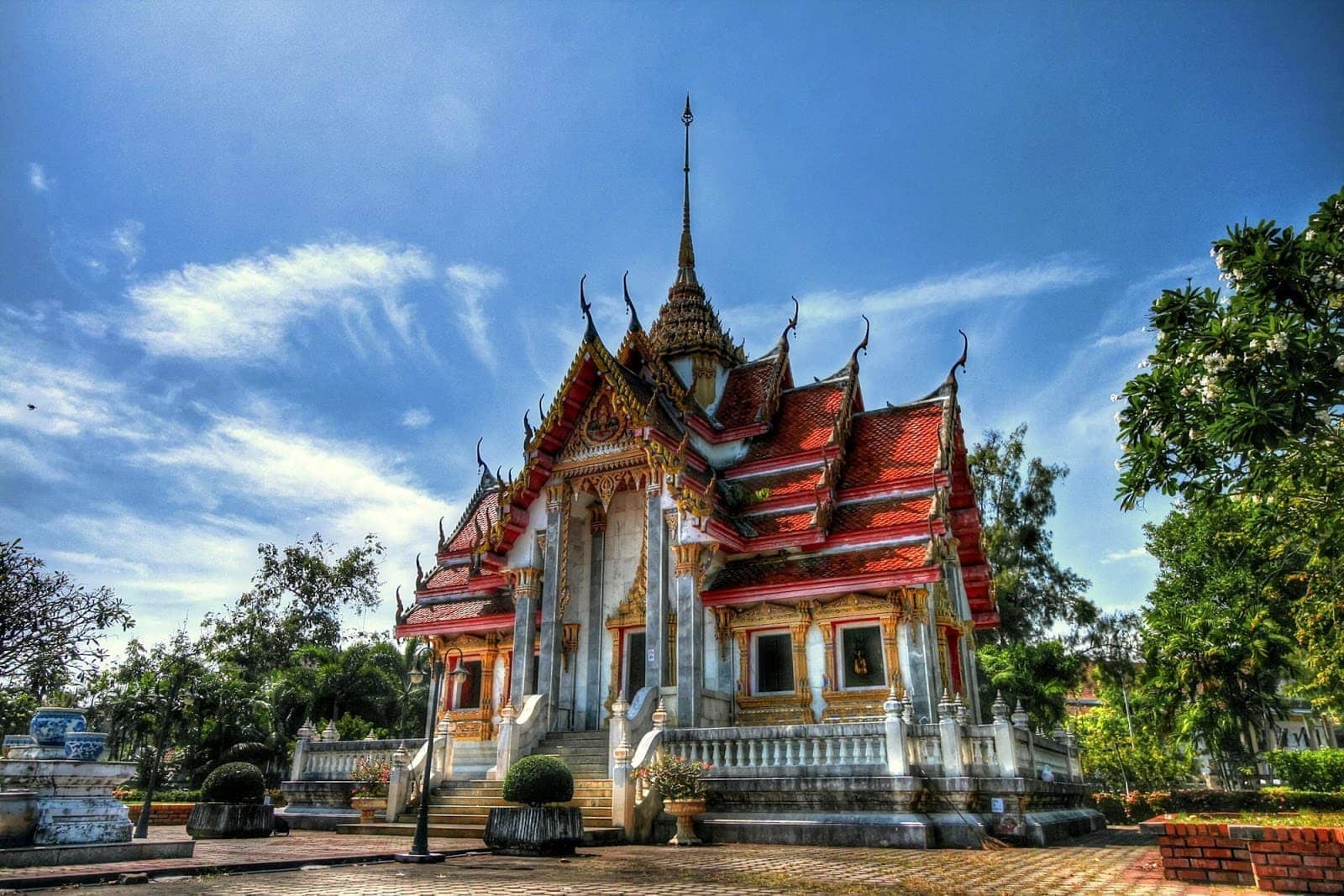
It has gorgeous beaches, a free tram tour of the town, giant statues of a mouse and a cat, an excellent night market and a really laid back vibe. If you’re looking for somewhere a bit different, away from the well trodden path, then Songkhla is definitely worth a visit. You can read in detail my experiences and advice for visiting Songkhla in this post .
How Much Does it Cost to Travel in Thailand?
Thailand really is a country where you can spend as much or as little as you like. It’s not the cheapest of the countries in the region, but it certainly isn’t expensive by any stretch of the imagination. You can get a private room in the region of $5 – $10 per day, food shouldn’t cost more than $1 – $3 a meal, and then you’ve got transportation, water, sight-seeing and beer (around $1 – $2 a beer generally).
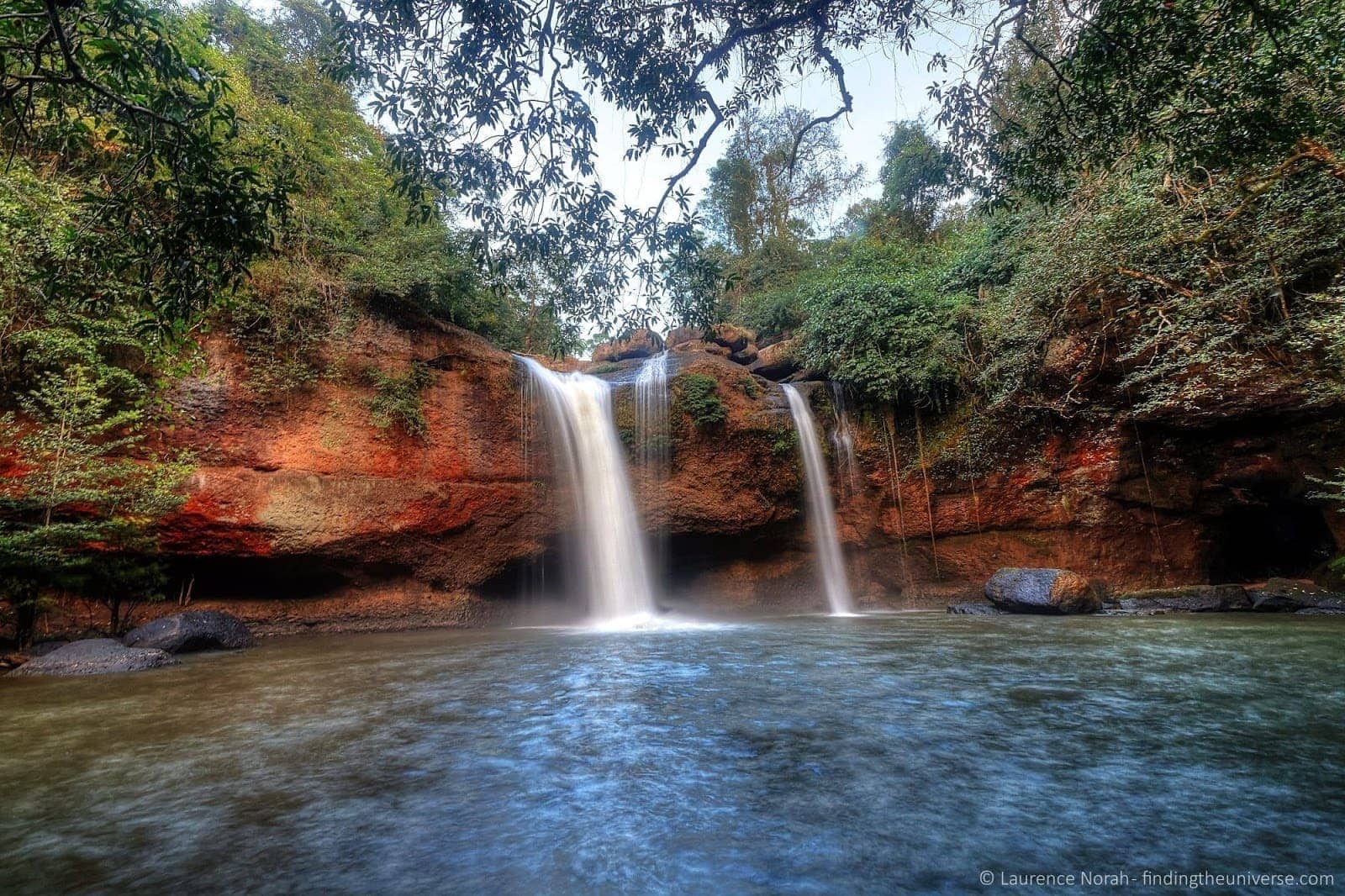
Of course, you can go crazy and spend a lot more, and if you’re on a tighter timetable, you might find yourself flying rather than using slower buses, but overall, Thailand can easily be achieved on a budget of $30 – $50 per day. I could go on, but my friend Matt has put together an incredibly detailed guide to budgeting for Thailand , which you should definitely read.
Why Should You Visit Thailand?
Thailand is a fantastic country to visit, particularly if this is your first trip to Asia. It’s an easy country to travel in, with friendly and welcoming people. It’s also relatively easy on the wallet – perhaps not as cheap as other parts of Asia, but certainly very much in the budget category.
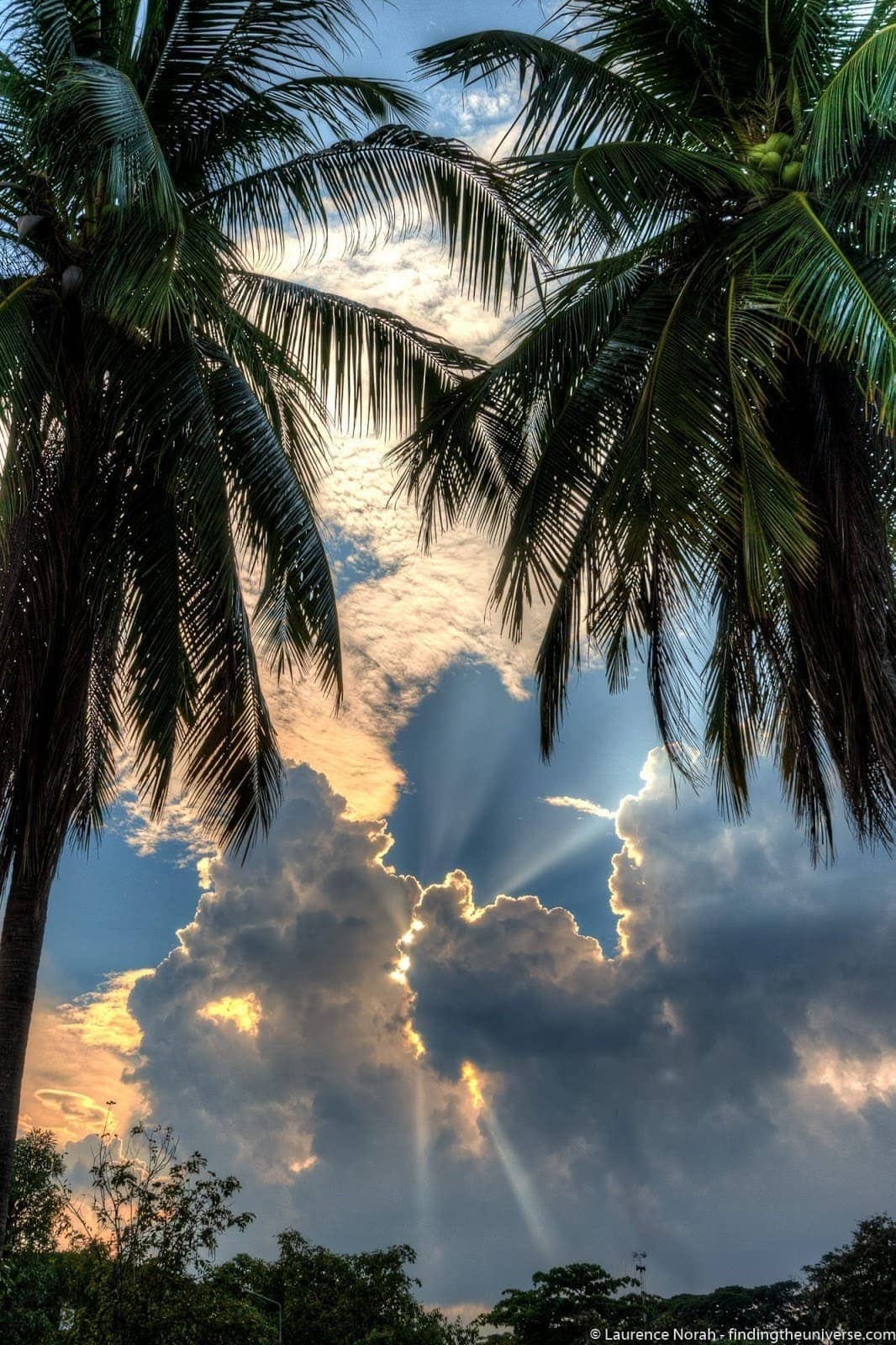
In terms of sight-seeing, Thailand has attractions to suit all manner of tastes. There’s everything from jungles and lake houses , through to snorkelling opportunities , extinct volcanoes, wild elephants , mountainous national parks , war memorials , incredible temples , and of course, unbelievable beaches and islands .
And I’ve not even mentioned the food!
The other thing about Thailand is that despite it being a very popular destination, the majority of tourists tend to visit a small number of hotspots, like Krabi, Phuket, and a few of the islands. This means that you can still visit Thailand and not feel overwhelmed by visitors if you pick your locations wisely. I’ll be going through a host of options in this post to give you ideas for your trip, but first:
When Should You Visit Thailand?
Whilst Thailand can be visited year round, there are times of year where the climate is more pleasant than others.
Thailand has a tropical climate, with a wet season and a dry season. The dry season is between November and March. Temperatures will be pleasant at this time of year, and it won’t rain so much. The rainy season is April through October, with the hottest part of the year between March and May, when the rain can make rural areas more inaccessible, and the temperatures can be hot and humid.
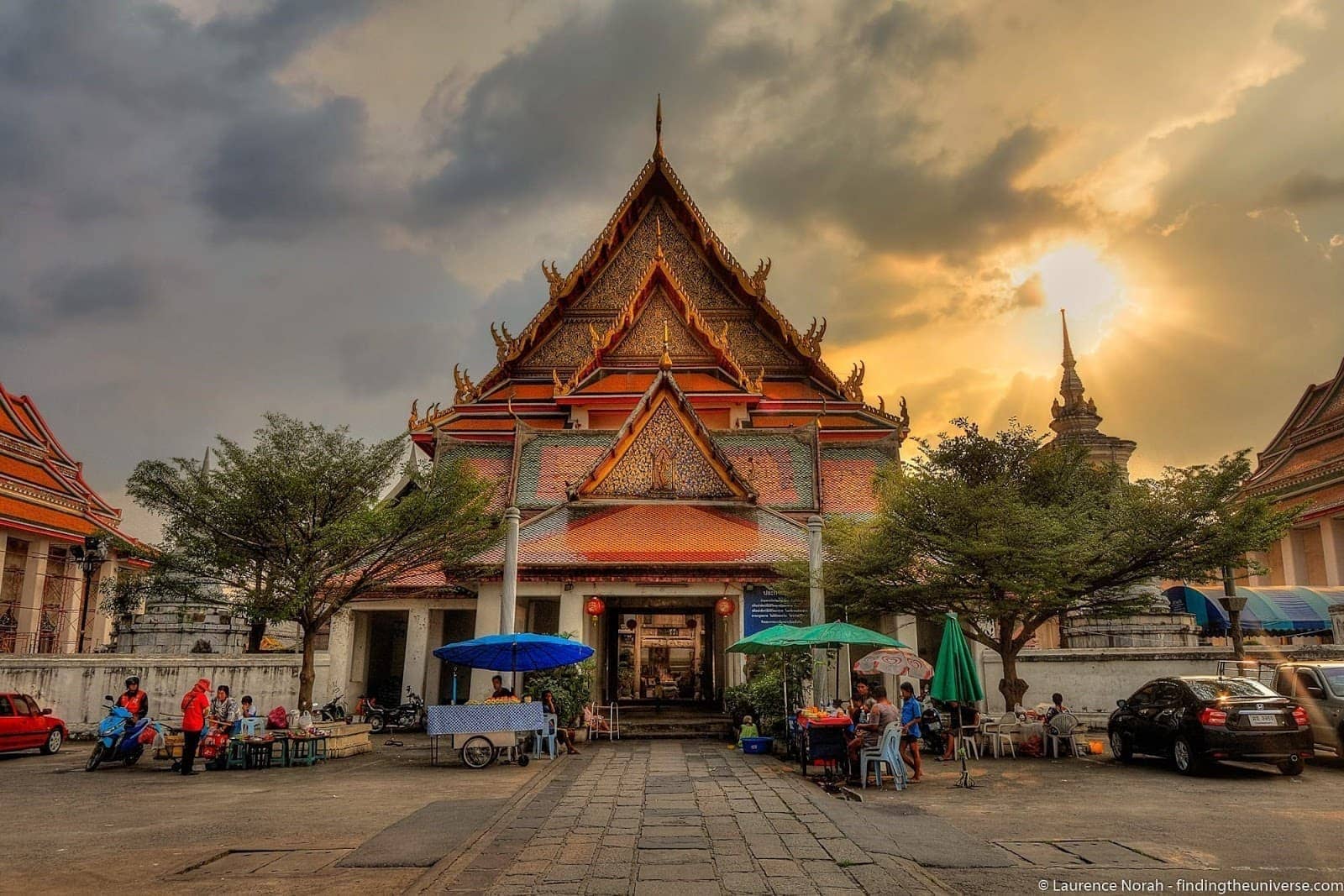
If you’re travelling more on a budget, then be aware the prices will be higher in the November – March time as this is the most popular time to visit, and prices will be a little lower in the off-season.
How To Get Around Thailand
There are a number of options for getting around Thailand. I predominantly travelled on long distance buses , which are very reasonable priced and often end up being faster than the train. These go from major transport hubs in cities and towns around the country, and usually run to a schedule.
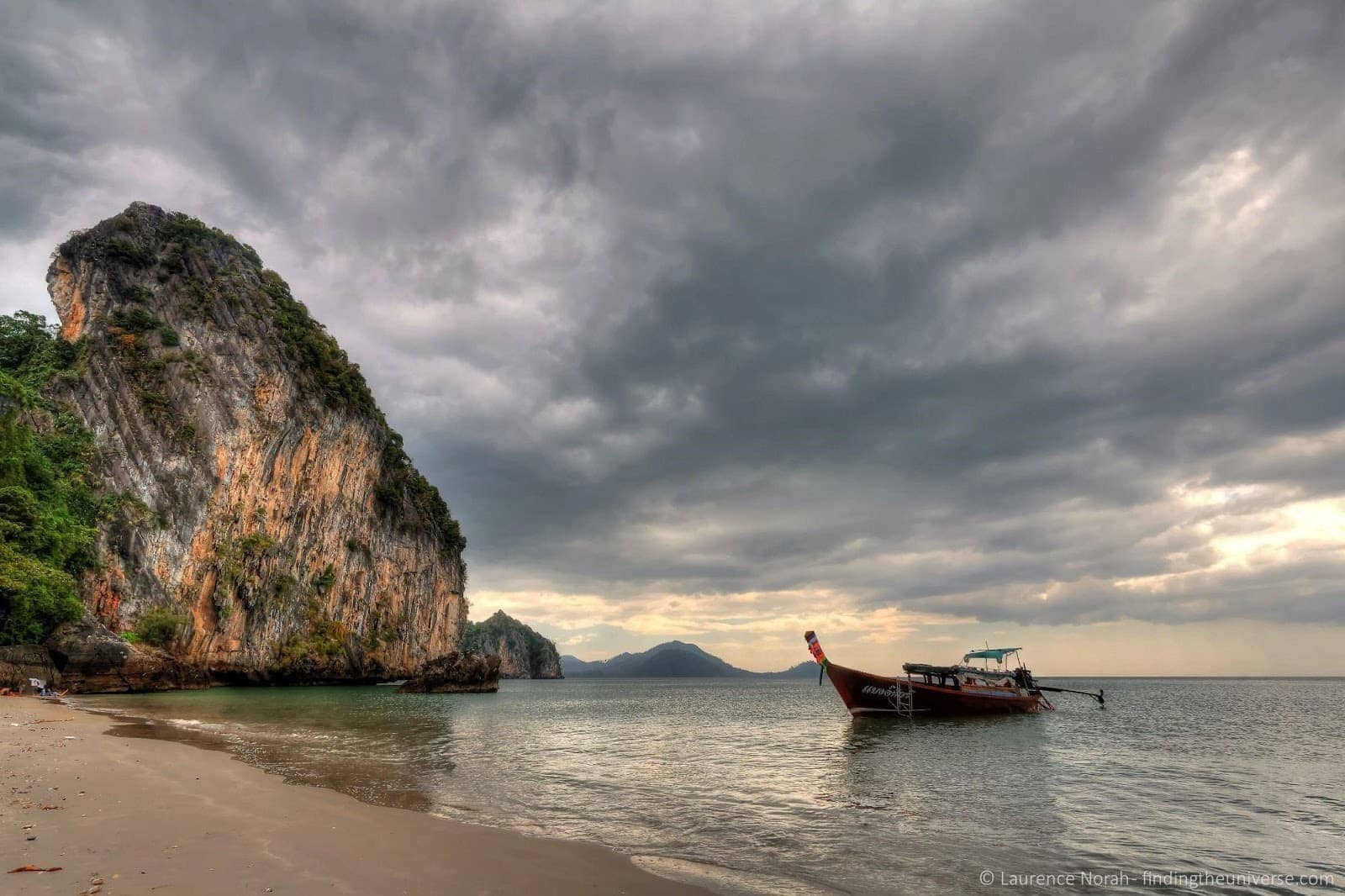
There are also minibuses. These can be faster than the scheduled buses, but can also be more cramped, so I’d suggest using these for shorter journeys. Do be careful when at transport hubs as the minivan companies keep an eye out for tourists looking lost and will try to “help” you by selling you a ticket on their service rather than the long distance bus you were looking for.
This happened to me on the way north from Trang to Phuket, and whilst I didn’t pay any more, and I suspect it was quicker, the journey wasn’t very comfortable. If you want to take a long distance bus, go to a ticket counter at a bus station to be sure!
Trains also run throughout the country, with the overnight trains up to Chiang Mai, and down the east coast to Hat Yai and beyond being particularly popular. Trains are generally reliable and good value, with various classes available – check out this excellent guide to train travel in Thailand for more information.
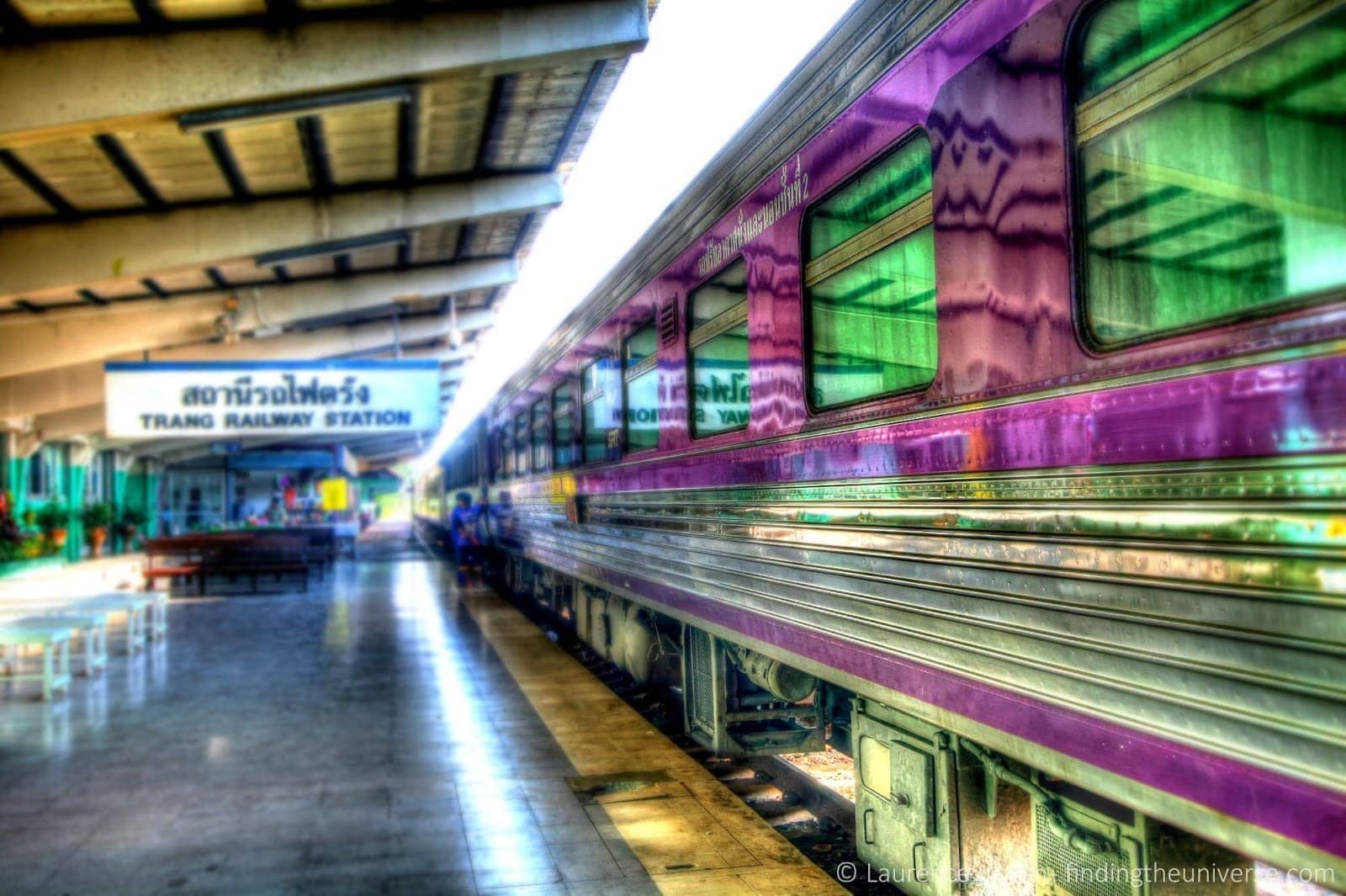
You can also fly around Thailand, which is particularly suitable if you’re on a tight timetable and want to see as much as possible with minimal travel downtime. It’s obviously the more expensive option, but if your time is important, is definitely going to get you places quicker. Options include AirAsia, Bangkok Airways, Nok Air, Thai Airways and Thai Smile. You can check and compare prices on flights in Thailand here .
If you’re looking to plan your travel around Thailand, I’ve found that the planning tool Rome2Rio does a great job of comparing all the options available to give you ideas of times and costs.
What to Eat in Thailand
Ok, to be honest, this would be a whole post in itself. Thai food is seriously amazing, and varies wildly across the country. In my experience, the further south I went, the spicier the food became, with the Yellow curry in the far south being eye wateringly hot.
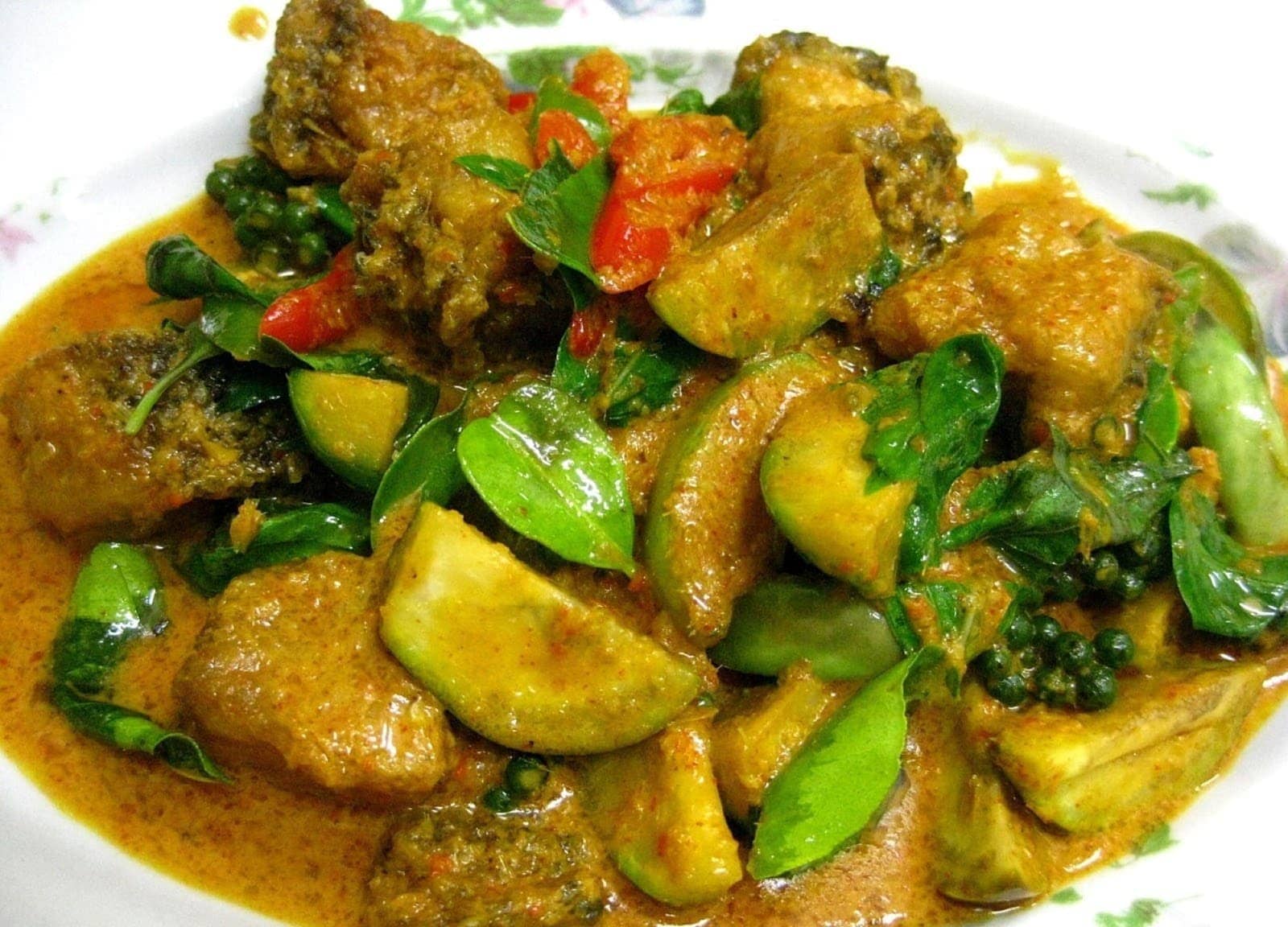
Some highlights of Thai cuisine include Pad Thai, Khao Soi (unique to the north), green, red and yellow curries, som thai and my absolute favourite, Mango Sticky Rice. In reality though, it’s hard to go wrong, pretty much all Thai food is fantastic.
Here’s a bit more reading to give you some more ideas (I told you the food of Thailand would be a post in itself!).
- Nomadic Matt’s Guide to the Best Thai Food You Can Eat
- Migrationology’s guide to 100 Thai Dishes to Eat in Bangkok
- The BBC Good Food guide to the Top 10 Dishes in Thailand
- Awesomewave’s 23 Weird and Wonderful Foods to Eat in Thailand
Those should give you some ideas of what lies ahead!
Where to Stay in Thailand
Thailand has accommodation options to suit everyone, from swish luxury hotels through to backpacker hostels – and everything in between. Prices vary depending on the popularity of the location, with Bangkok generally being more expensive than the rest of the country. You can start your property search here .
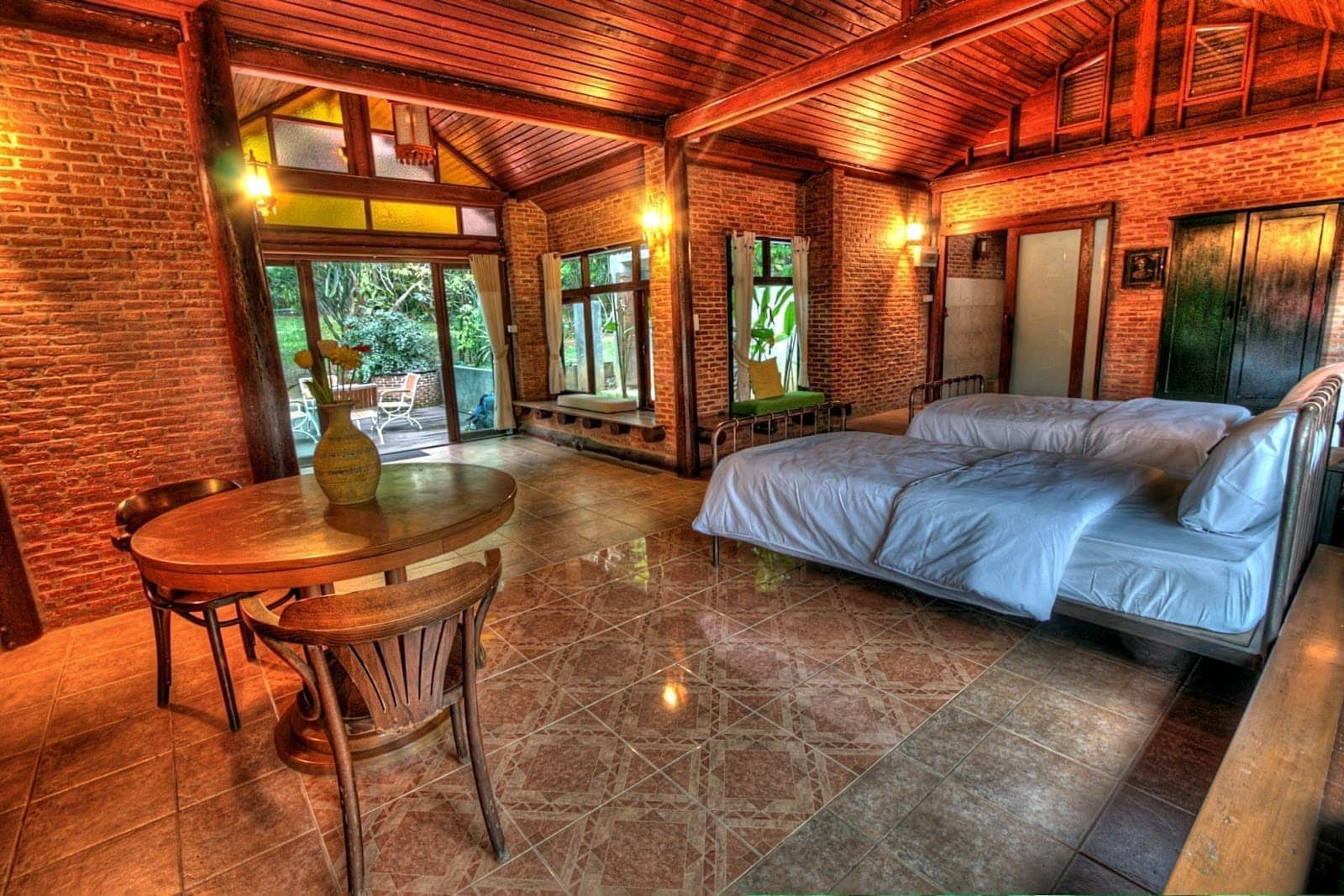
In Bangkok, we enjoyed the private rooms and atmosphere at the Lub D hostels, and tried out both their Siam Square and Silom locations. These aren’t the cheapest options in Bangkok, but they are both excellent. Across the rest of the country we stayed in everything from river houses to resorts , to homestays to more upmarket properties . Generally, prices were excellent, and the quality was high.
If you’re looking for accommodation in Thailand, you will have plenty of choice, whatever your budget. Here are our tips for getting the best prices:
- We usually use booking.com when travelling to get the best deals – they have a wide range of listings and usually have great prices. You can see listings for Thailand here .
- If you can’t find what you want on booking.com, or you want some new options to try out, we have a post to help you find the best alternatives to AirBnB .
Between these options, you should find the best prices and places to stay for your trip, as well as a good selection of reviews and feedback to help you make an informed decision.
Plenty of ways to save money right there. Now, let’s look at some:
Other Practicalities for Travelling in Thailand
Cultural considerations in thailand.
Thailand is not a particularly tough country to travel in, and the people are very friendly, but there are a few cultural considerations to bear in mind.
Firstly, feet are considered very dirty, and you should never put your feet up on something, move objects with your feet, or touch anyone with your feet.
On the flip side, the head is considered the most sacred part of someone’s body, so touching someone’s head is also not considered polite.
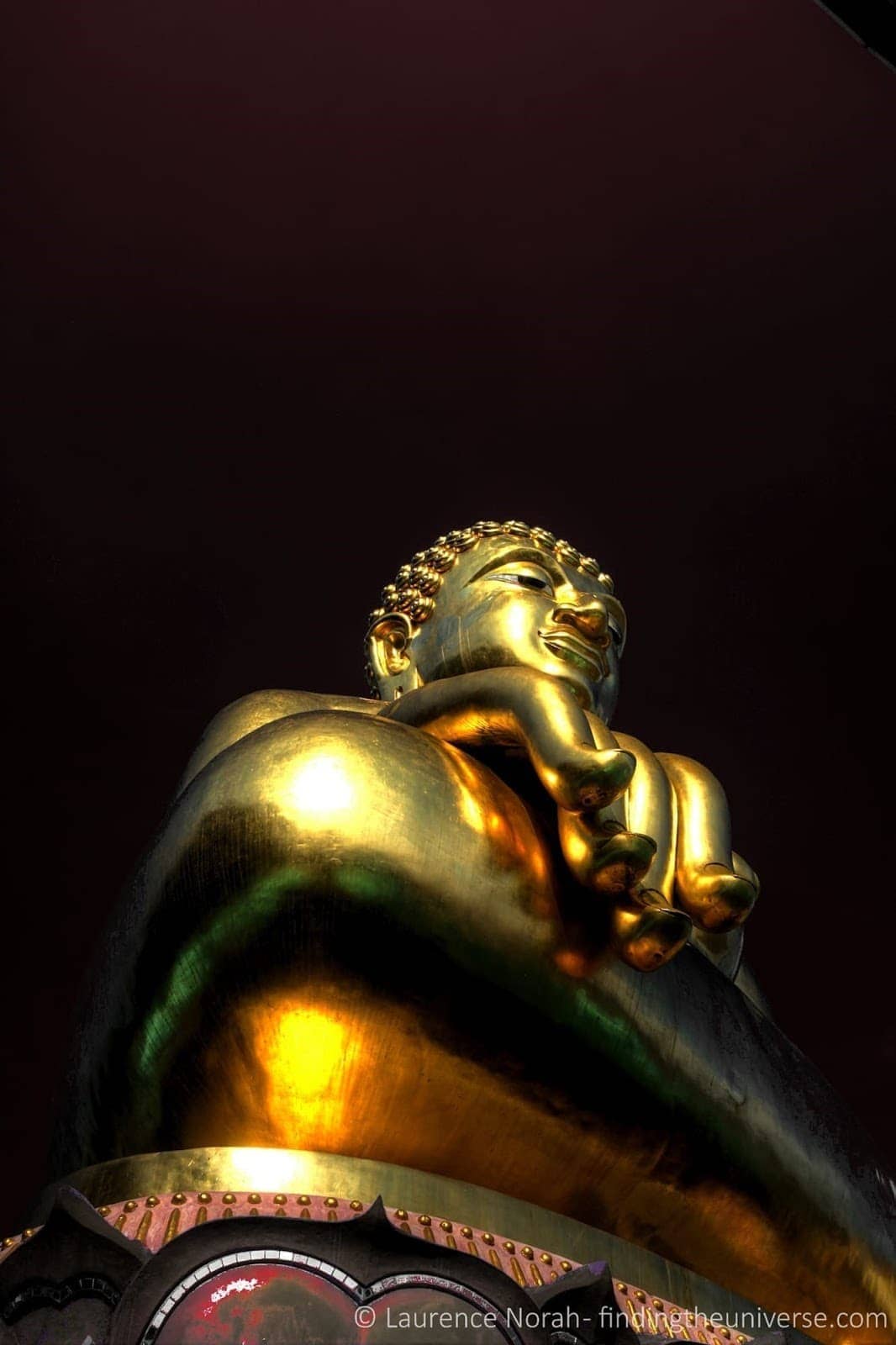
Speaking of bodies, Thai people are generally quite modest. If you visit a beach popular with Thai people, it’s not unusual to see them swimming in jeans and a t-shirt – western swimwear is considered fairly immodest, and going topless or nude is definitely frowned upon.
The Royal family is almost a taboo subject in Thailand, as insulting the King or the family of the King is a reason to be jailed. Overall I found it was best not to bring up the royal family at all. In addition, as with icons of the Buddha, imagery of the King is also to be treated with respect. Don’t forget that the Thai currency has images of the King on it, so you have to treat it with care as well.
In terms of handling situations when things go wrong, it is considered seriously impolite to cause a Thai person to lose face, and aggressiveness is not welcomed. So if you have any problems, you need to try to stay calm and polite throughout – this will likely get you a much more positive result.
I’ve only ever experienced one incident of a Thai person losing their cool, and that nearly ended quite badly. You can read all about that experience here . Overall though, we had a fantastic time in Thailand, found the people friendly and welcoming, and didn’t have any negative experiences. For more do’s and don’t in Thailand, check out this excellent article .
Internet Access in Thailand
Thailand has ubiquitous internet access, with good WiFi hotspots available throughout the country, usually at blazing fast speeds. There’s also excellent 3G and 4G coverage across the country, with pay as you go SIM cards available for very reasonable prices.
To get an idea of what’s available, take a look at this page, which lists all the pay as you go options for Thailand , with a focus on data prices. For more on information on connecting to the web when you travel, see my guide to getting online when travelling .
Power Outlets in Thailand
Thailand uses a 220v system, so if you are travelling from the US you need to be sure your devices support this standard. Most chargers these days automatically switch voltages and you don’t need to buy new chargers, just check it’s rated for 220v on the label.
Socket wise, Thailand confusingly has two types of socket, one with round holes that matches most European style plugs, and a two pin flat plug that will match a US two pin plug.
Your best bet is to pick up a universal travel adaptor and a power strip , thus ensuring you don’t have any power issues.
Vaccinations and Health in Thailand
Thailand is a generally safe country to travel in, but there are a few vaccination requirements you should be aware of. The majority of tourist illnesses in Thailand tend to be from contaminated water, so it’s generally wise to only drink bottled or sterilized water, and to avoid salad and ice cubes (either of which may have been washed or made with tap water).
Rabies is present in Thailand, although mostly only in remote areas. It exists in bats and dogs, and Thailand has no shortage of street dogs. Check out our guide to keeping safe around street dogs in Thailand , but generally, you should have no reason to be vaccinated against rabies unless you’re travelling or working in a high risk area.
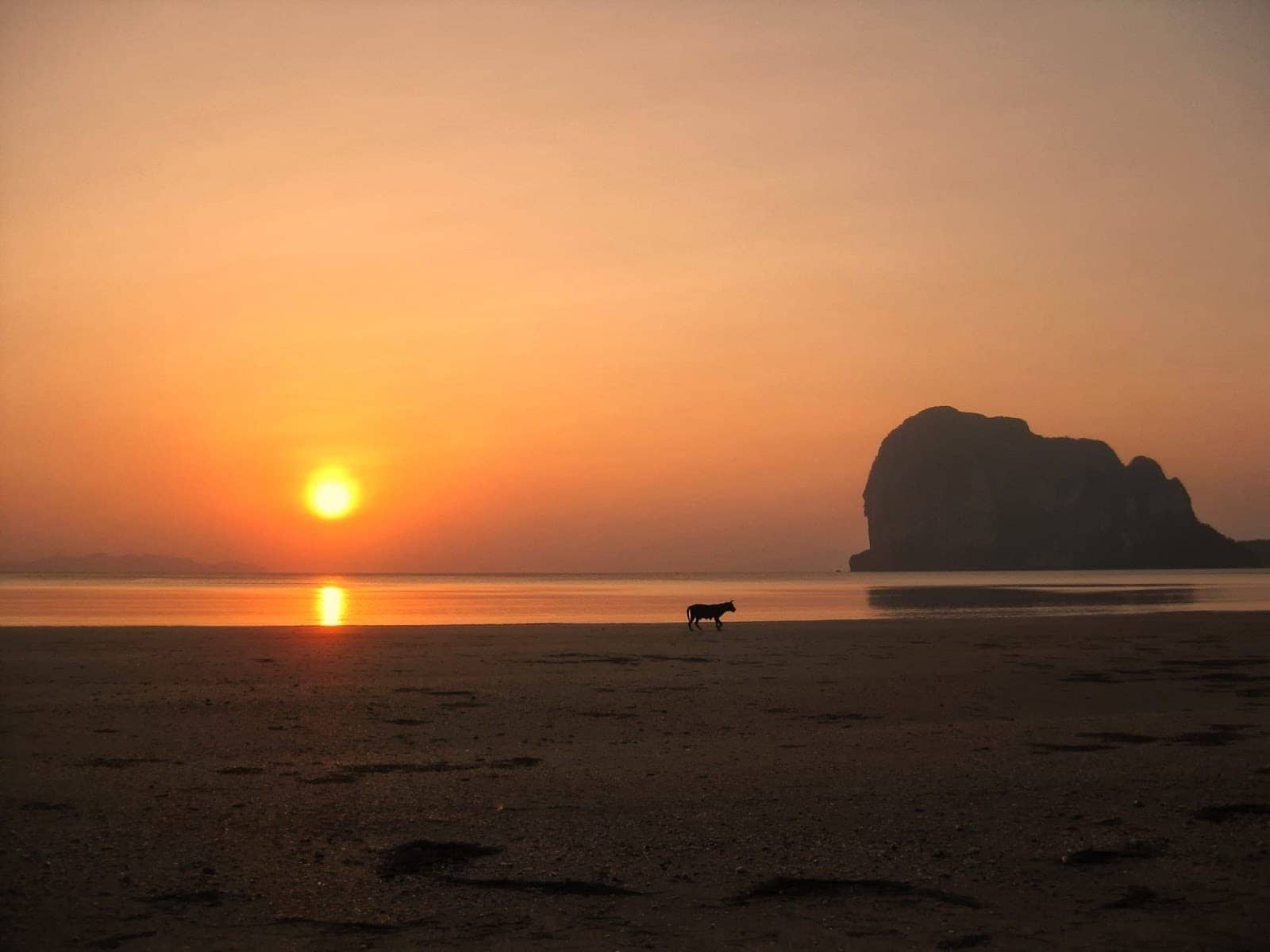
Malaria and other insect borne diseases like Zika and Dengue Fever also exist in Thailand. The best way to avoid getting these diseases is to use bug spray, and to cover up at dusk and dawn when mosquitoes are likely to be present. You should also consult with a doctor as to whether or not your trip will warrant taking anti-malarials.
For more health advice on Thailand, including a run down of the vaccinations you should require, take a look at the UK’s health service guidance , and the US CDC guidance . And finally, don’t trust a blog post as the definitive guide for your health advice – go to a qualified medical practitioner and get them to advise you!
Common scams in Thailand
Like every country in the world , Thailand has a few common tourist scams to watch our for. These aren’t particularly complicated, and are mostly in Bangkok or other major tourist destinations.
The two most popular scams are the tuk tuk scam and the closed temple scam.
The tuk-tuk scam will involve a tuk tuk driver offering to take you anywhere you want to go for a mind bogglingly low price, say 20 baht. After you get in, you’ll find yourself being taken on a tour of all sorts of second-rate temples, jewellery shops, tour companies, clothing shops and so on, where various sales tactics will be used to try and sell you generally overpriced and poor quality goods and services.
In a worst case scenario, you’ll find yourself left far away from where you started, with a challenging route home, and a day of your time wasted. This is an easy one to avoid – just don’t take a tuk tuk offering you some incredible deal!
The other regular trick attempted on tourists is for someone to stand outside of a perfectly open temple or other attraction, and tell tourists that it’s closed. Conveniently, the person will know another temple, a short tuk-tuk ride away, that is open! Once on the tuk tuk, you’ll find yourself taking a familiar sounding tour of various jewellery shops, clothing shops.. well, you’ve heard this all before. Yes, attractions close, but be sure it’s actually closed by going to the entrance before believing the helpful local.
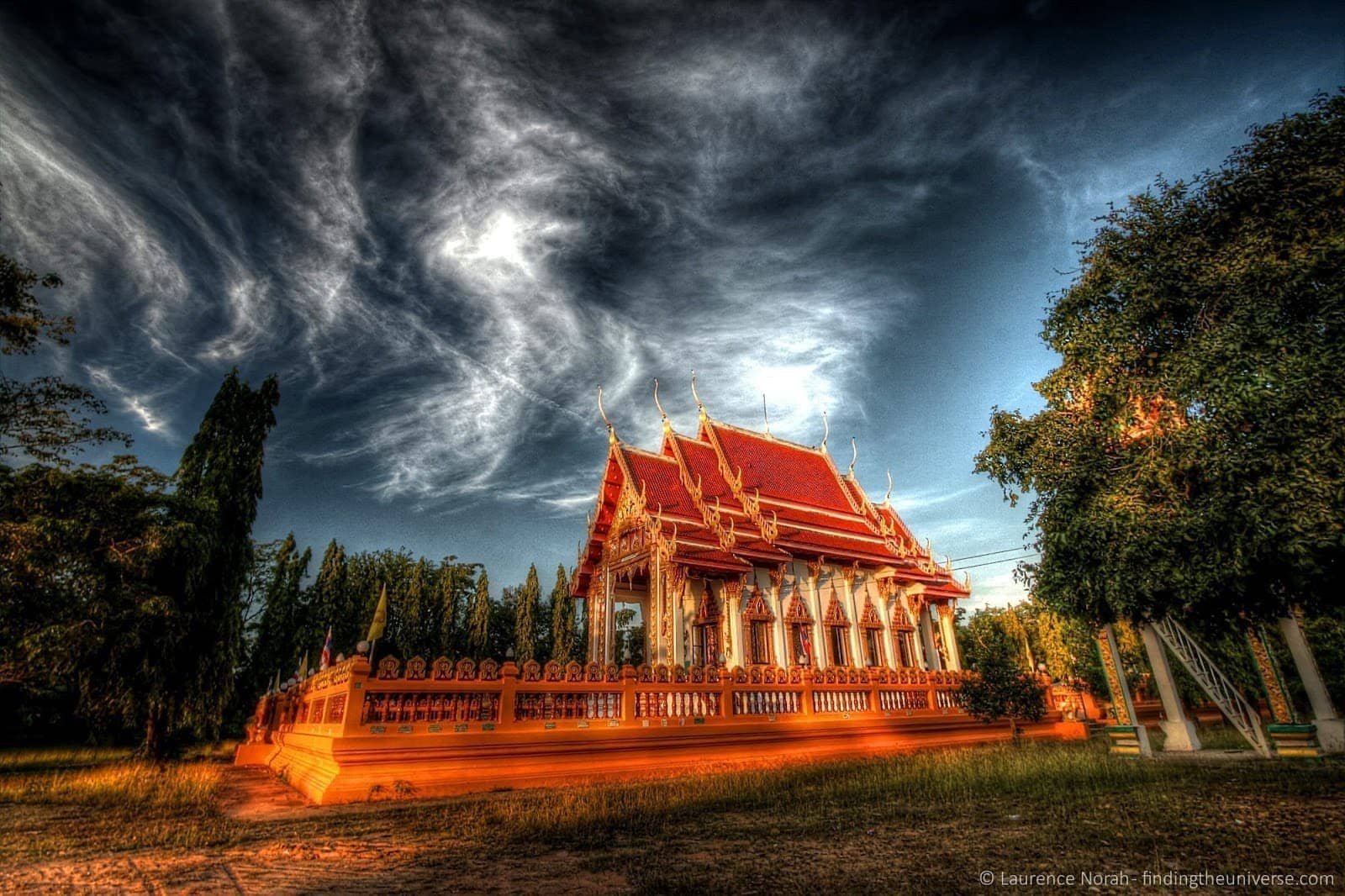
For more on a scam like this, how it works and what to look out for read this fellow bloggers account of being scammed in Thailand , which should give you all the information you need to stay safe.
Overall though, Thailand is a very safe country to travel in, and despite my best efforts, I was never scammed . Just apply some common sense, and remember, if it seems too good to be true, it probably is.
Further Reading and Information for your Thailand Itinerary Planning
There’s a wealth of information on visiting Thailand on our site . Here are some of our more relevant posts to check out.
- A guide to dealing with street dogs in Thailand
- A guide to visiting Ayutthaya
- A guide to what to do in Kanchanaburi
- A guide to the beautiful Khao Sok National Park
And that just about sums up my guide to visiting Thailand for two weeks, as well as everything you might need to know to make the best of your trip! If you’ve got any thoughts on feedback on this post, or ideas for where you’d recommend, do pop them in the comments below!
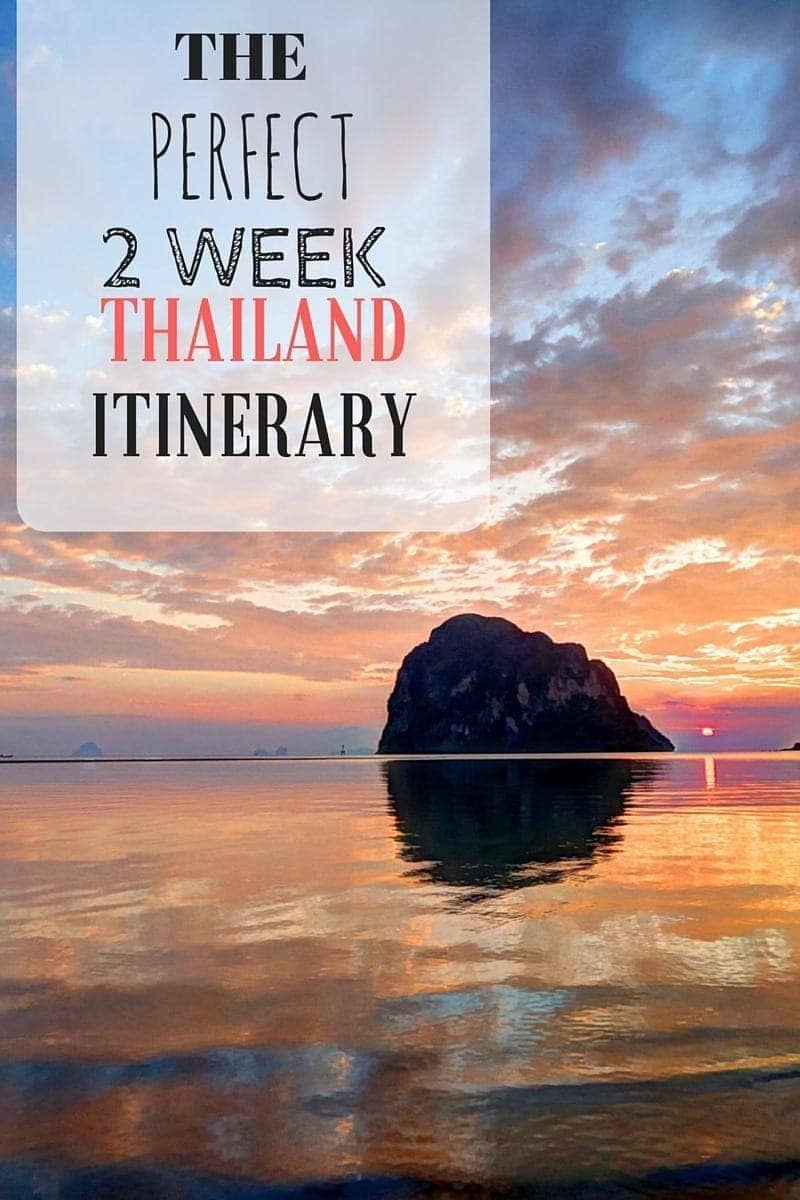
Enjoyed this post? Why not share it!
There are 27 comments on this post
Please scroll to the end to leave a comment
17th September 2019 at 9:54 am
Hi! Great post, I was actually deciding which Asian country I should visit next and your itinerary and its description made me choose Thailand. Now I’m working out the fine details to make sure the trip goes well and I’m curious about one thing – you recommend going from Bangkok to Kanchanaburi, which seems pretty easy. And then from Kanchanaburi to Ayutthaya, that’s a bit more confusing for me. How did you travel between the two? Did you go back to Bangkok and then to Ayutthaya? Or is there some direct bus/train/whatever I’m missing? I sincerely hope you haven’t written it anywhere yet – if you did, feel free to call me a blind idiot and just direct me kindly to it.
Laurence Norah says
17th September 2019 at 11:07 am
Yep, back to Bangkok and then up was the easiest way – most connections are easiest through Bangkok. It’s also possible you might be able to find a direct bus between the two locations at the bus stop, but my experience finding accurate bus timetables for Thailand is that it’s hard to do so online, personally I just prefer to ask locally at the bus station 🙂
Have a great trip!
10th June 2019 at 6:25 pm
Hi Laurence and Jessica,
Thank you for sharing your experiences here – so informative and inspiring!
We (family x4, 2 kids aged 7 & 11) are heading to Thailand for 2 weeks in August this year. Itinerary plans at the moment are: Bangkok for 2 nights; night train to Surat Thani; 1-2 nights at Khao Sok (including 1 night in a lake house); 6-7 nights island hopping Koh Samui/Koh Phangan/Koh Tao; fly to Chiang Mai for 2 nights there, then; night train back to Bangkok before heading home. As we’re there during the wet/monsoon season, we wanted to be able to plan around the weather so I had been thinking we’d just book the first couple of nights in Bangkok from home, then book everything up once we got there (that’s the way we did it when I was last backpacking in SE Asia, 20 years ago!) But I’ve been more and more thinking that the internet and sites like booking.com may mean places get booked up, and that you don’t necessarily get a better price on foot? As we’re only there for a couple of weeks, we won’t be able to afford to wait for a few days if transport/lake houses are fully booked…
As you can see, I’m in a bit of a quandry, so any advice you have would be very gratefully received!
with thanks in advance,
10th June 2019 at 6:38 pm
So, it’s a question of balancing peace of mind against cost 😉 Thailand is certainly a popular destination, and you will find that lots of places will book up online. Costs in person might end up being slightly cheaper, but then you can lose time trying to find a place if it’s not available. Given the relatively small saving that you are likely talking about, it’s probably worth just booking in advance.
My advice for the popular destinations, or those where you don’t necessarily have the time to tramp around finding somewhere, like Khao Sok, would be to definitely book in advance. If you use something like booking.com, it will often come with free cancellation. Then you have the option to cancel closer to the time, if you discover that places are much cheaper in person when you are on the ground.
I hope this helps! As someone who used to play everything by ear, and now books in advance as a rule, I certainly know the shift in mindset this takes. But I decided I preferred to know I have somewhere to stay, and also not to have to waste time on my trip looking for accommodation – it’s a lot easier to do the research ahead of the fact these days, instead of relying on a dog-eared Lonely Planet 😉
10th June 2019 at 6:52 pm
Hi Laurence,
An amazingly speedy reply – thank you! And thank you too, for your advice. I’ve a couple more questions if that’s OK? 1. Are the buses safe these days? From memory they used to be quite dicey! 2. Can you recommend a site for booking bus/train tickets from the UK in advance?
Many thanks again,
10th June 2019 at 7:26 pm
I do my best to reply quickly depending on our travel schedule 😉
So, to your first point, well, it depends how you define safe! I would say they are generally safe, although of course individual drivers may be more or less cautious on the roads. In terms of being safe on the bus, I’d say yes, just keep your valuables with you, don’t accept drinks from strangers, etc.
I’d also say to try to book your tickets in the actual bus stations from the ticket counters for the formal buses, rather than the slightly less formal minivans. Of course, for some routes you may have no choice but to take a minivan, and whilst they can be quicker, in my experience they are a lot less comfortable, there’s limited luggage space, and the drivers are definitely something else 🙂
I’ve never used a site for booking bus tickets online in advance. I am aware of some, such as Bookaway or 12goasia, but I can’t personally recommend them having not used them. I never had a problem turning up and getting a ticket to be honest, and if you have any issues your hotel or hostel will likely be able to handle the booking for you as well.
I hope this helps!
11th June 2019 at 6:39 pm
Really helpful, thank you Laurence!
Agness says
1st January 2019 at 12:16 pm
Hi Laurence, this article is really the best. The detailed itinerary is very helpful. Thanks
1st January 2019 at 6:04 pm
Hey Agness, my pleasure 🙂 I hope you have fun in Thailand!
Paul Leiboviz says
5th November 2018 at 4:47 pm
Can you recommend any travel agents/outfitters that would build a travel package following the itinerary/route that you experienced, if the traveller does not want to spend the time to make all the ground logistics such as lodgings, tour operators, transfers etc. ??? Thanks I Advance
5th November 2018 at 8:49 pm
We don’t personally know any operators in Thailand who will build custom itineraries, although I’m sure they exist! For a group tour you could try someone like Intrepid Travel , but we’re not sure about private tours. Sorry not to be of more help!
Kate Lubinski says
30th October 2018 at 3:32 pm
your article really makes me put Thailand in my top 3 destinations for next year! I have a friend who recently went diving there, she absolutely loved Koh Tao and its Sail Rock and generally the whole country – she spent three weeks there, so jealous! can’t wait so see all these gorgeous places myself, your photos give me so much wanderlust!!!!
30th October 2018 at 3:34 pm
Thanks Kate – I hope you get out there next year!
13th November 2018 at 3:52 pm
thank you! I’m already working out a potential budget, you can never start too early with planning a trip to some gorgeous, but faraway places.
8th August 2018 at 4:29 pm
Hey Laurence and Jessica, thank you for this post! I’m planning to visit Thailand next year and will be travelling by train only. I was just wondering, did you just travel by bus all the time or bus and train?
8th August 2018 at 4:31 pm
Thanks Liz! We did a mix of the two. To be honest, bus is easier as there are more roads than train lines, but you should be able to do most of the country by train quite easily still 🙂 Have a great trip!
Lisa Campy says
4th April 2018 at 2:06 am
Laurence and Jessica, Thank you for your post. I’ve been ruminating on a Thailand itinerary for several weeks now and when I found your site, it really helped me narrow down my plans. I can’t wait to dig in a little more to your hyperlinks. I’m planning the vacation for a family of four, all adults and all very active. I think I’ve landed on an itinerary of Bangkok, Chiang May, and Khao Sok. Although we have two weeks, when I consider the time we will lose in travel, it really amounts to around 11 days. I am currently working with some tour operators to get some pricing. I’m a little hesitant because as I’ve shopped around, I’ve read on a few sites how you don’t really need to book everything in advance and will get much better pricing if I wait………however, the responsibility of the trip will really fall on my shoulders, I’m a planner, and I’d prefer not to have worry about figuring out what do when I get there. My question is that the pricing that I am getting for my itinerary is around $3500 per person including local flights but not the international. For the most part it includes most meals, guides, hotel etc. Does this seem reasonable?
4th April 2018 at 10:21 am
Hi Lisa! It’s hard to say exactly because I don’t know what your travel style is (luxury or budget), but I’d say that either way, that does seem somewhat high for Thailand. You can get accommodation from $15-30 a night for a double with en-suite, and $100 would be pretty high end. Meals are really cheap, like $5 – $10 per person. I haven’t flown internally, but again, I don’t think flights are that expensive. So given your costs are per person, I think that is somewhat high.
My advice is definitely just to do everything yourself, you can book pretty much everything in advance online yourself if you want to, but yes, for the most part you are unlikely to need to book much in advance. But if you do, the links in my post, or on the travel resources page ( https://www.findingtheuniverse.com/travel-resources/ ) should cover everything you want to know.
My tip would be to use those tools initially to get a feel for pricing, then you can see how much the tour agents are adding on!
Have a wonderful trip, and if you’ve not been to Thailand before, please read up on the more common scams so you can identify and avoid them 🙂
20th March 2018 at 9:28 am
Thanks for this well articulated post Norah.. can’t wait to go there!!
21st March 2018 at 11:26 am
My pleasure – have a great time in Thailand!
Sue Horton-Smith says
21st January 2018 at 10:35 am
When I was planning two weeks in Thailand, I came upon your blog and, now that I have returned from my travels, I am writing to thank you for the excellent recommendations you made! I found your blog both inspiring and helpful and I appreciated the information you shared about yourselves and your interests; finding that your interests were similar to mine suggested that I could trust your recommendations, which turned out to be the case. I was travelling with my daughter and her partner. We read your blog, did further research and then booked our holiday. Shortly before setting off, I re-read your blog and realised the extent to which we had taken up your suggestions – I worried that we’d placed too much trust in you! But I didn’t need to worry! We followed your advice about staying in Ayutthaya and loved it! We stayed in Khao Sok and went hiking in the rainforest (day and night time hikes), spent a night on a floating raft house on Cheow Lan Lake, and then we headed to the beach on the far south of Ko Lanta, where we stayed in bungalows practically on the beach. The whole holiday was amazing, and gave us opportunities to explore history, culture and the natural world, to be active on land and in the water and to capture some of the beauty on camera. I’m writing this to reassure other readers that your recommendations are spot on! I also want to add one or two pieces of information that I would have found helpful. The Thai people I encountered were incredibly helpful and we managed to get to and from even fairly hard-to-get-to places without too much difficulty. Mosquitoes were far less of a problem than I expected, both in the rainforest and at the lake. I was a little concerned to find that our lake house had no mosquito nets and that the windows didn’t close, until our guide explained that there were no mosquitoes at the lake. Smiley’s Raft Houses are fairly basic, but do have en suite facilities; I’d imagined having to pick my way to dry land by torchlight if I had to go to the loo in the night, but there was no need. In addition, the food provided at Smiley’s was plentiful and delicious. We did need decent trainers or walking sandals to hike up the river and through the cave, but it was possible to borrow some suitable rubber plimsolls at Smiley’s. We also needed dry bags for the hike (just for camera, phone etc., because we’d left our overnight bags at the raft house) and these needed to have a shoulder strap so both hands were free for negotiating difficult bits of the hike. However, we were able to borrow these from Morning Mist and they were also available to buy in Khao Sok. I was a bit unsure about going through the cave and decided to take a shorter hike, where we went about 100 metres into the cave rather than going through it for 800 metres. This meant we were only wading through water up to our crotch, rather than up to our neck, and we still got a good sense of the cave. The whole raft house experience was utterly amazing – swimming in the lake right from your raft house was blissful – but grab the opportunity – the itinerary is pretty packed! And be sure to take a phone and set an early alarm – I got some great photos of dawn light over the lake, and then more photos of sunrise over the lake as we set off on a morning boat ride. Final tip – the slightest hint of a breeze sends masses of spray into the boat, so quick-drying walking gear is the best bet and a cover for your rucksack. If you’re reading Laurence and Jessica’s blog and are feeling tempted to follow in their footsteps, go for it!
21st January 2018 at 11:09 am
First, thanks so much for leaving such a detailed comment, and also for letting us know that the itinerary was helpful for your trip- this kind of feedback really makes us so happy and makes it all worth it! I love that you stayed at Smiley’s in Khao Sok, that was one of our absolute favourite spots in all of Thailand, such a peaceful place. Thanks also for your additional information, it’s awesome to have input from people who have done this as well. Pleased to hear the mosquitoes weren’t too much trouble 😀
Safe travels, and thanks again for stopping by – it means a lot to us 🙂
Laurence & Jessica
Shimona @ Sidecar Photo says
10th August 2016 at 2:34 am
Can’t wait to go there and now I know where to go 🙂 Beautiful photos by the way.
Jhon jaka says
3rd August 2016 at 8:44 am
Wonderful view
Maria Han says
28th July 2016 at 6:40 am
Wonderful post. Thailand is in our list and we are going there because of those enigmatic beaches and Thai food, obviously. 🙂
Laurence says
28th July 2016 at 8:59 am
Perfect reasons if you ask me 🙂
Katie @ Tea Break Project says
17th July 2016 at 9:52 pm
Super useful – thanks! Thailand is on my ‘to visit’ list, so pinned this for reference. I always find it really difficult to start off planning a trip, because the possibilities always seem so endless – so this will definitely come in handy 🙂
Leave a Reply Cancel reply
Your email address will not be published. Required fields are marked *
Let me know when there's a reply to my comment (just replies to your comment, no other e-mails, we promise!)
Subscribe to our monthly Newsletter where we share our latest travel news and tips. This also makes you eligible to enter our monthly giveaways!
We only ask for your e-mail so we can verify you are human and if requested notify you of a reply. To do this, we store your data as outlined in our privacy policy . Your e-mail will not be published or used for any other reason other than those outlined above.

The Perfect 1, 2 and 3 Week Thailand Itinerary
- Last Updated: January 20, 2024
How to make the most of your Thailand itinerary, whether you have 1 week, 2 weeks or 3 weeks, written by an expert!
Thailand is an incredibly diverse country in Southeast Asia that can be explored in any sort of time frame.
But of course, the longer you have to visit Thailand, the better.
From cities like Bangkok and Chiang Mai in the north to stunning islands like Koh Phi Phi in the south, any trip to Thailand could be jam-packed.
But having more time to explore means you aren’t rushing around, constantly hopping on flights and buses, and you have more time to stay in one spot and soak it all in before moving on.
Thankfully, Thailand is pretty small, very affordable, and easy to get around.
So if you have one week, two weeks, three weeks, or more, you can easily see different parts of the country without sacrificing too much time and money on travelling around.
You can explore both northern Thailand and the islands of the south easily in just one week, though of course, you can see more exciting things in two or three weeks.
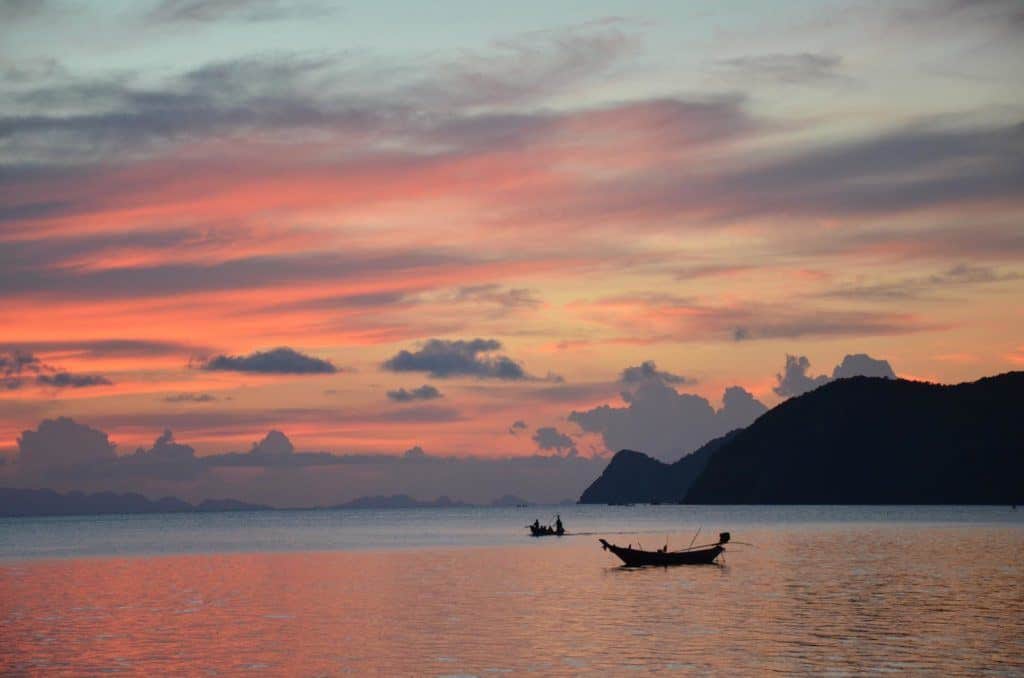
Budget airlines make it very cheap and easy to fly around Thailand, and flights are often only an hour or two.
So even in just one week, you can explore the culture and cuisine of the mainland before jumping on a quick flight down to the islands for some swimming, snorkelling, and kayaking.
In this article, you’ll find three samples for a possible Thailand itinerary.
Of course, these can be modified depending on what you want to see and how much time you actually have.
For example, you could spend all of your time hopping around the islands if you want, or you could spend all of your time up in the mountains and cities of the mainland if you’re not much of a beach person.
You could even spend your entire Thailand trip in one place, or you might feel intrigued to visit places not mentioned in these itineraries.
This article serves more as a guide for those who are visiting Thailand for the first time and are unsure of what they want.
These itineraries will combine a bit of culture in the mainland with a bit of beach time in the islands, so travellers can get a taste of the different parts of Thailand.
Make sure you get your travel insurance before you embark on your Thailand trip. It is pretty much essential.
Table of Contents
2 Days in Chiang Mai
2 days in phuket, 1 day in koh phi phi, 2 days in bangkok, 3 days in chiang mai, the white temple (wat rong khun), the blue temple (wat rong suea ten), 2 days in koh lanta, 2 days in ao nang, octave rooftop bar, scarlett rooftop bar, red sky rooftop bar, 4 days in chiang mai, 2 days in pai, 2 days in chiang rai, 2 days in khao sok national park, 1 day spent travelling from khao sok national park to koh samui., 3 days in koh samui, 7-day thailand itinerary.
This Thailand itinerary is for those who have one week in this beautiful corner of Southeast Asia.
Though a week goes by quickly, it is definitely enough time to dabble in the culture and natural beauty of Thailand.
You’ll most likely fly in and out of Bangkok for any Thailand trip, as this is where most international flights go.
READ MORE: Here’s our guide to the best places to visit in Thailand . You’ll find all these destinations in our Thailand itinerary in there.
As the capital city of Thailand, Bangkok is crazy and crowded but absolutely packed with culture and things to do.
No Thailand itinerary would be complete without at least 2 days in Bangkok .
Some fun activities you can fill your days with include tasting street food on Khao San Road , checking out the massive government buildings in the Dusit District , taking a riverboat tour along the Chao Phraya River , and exploring the local temples.
Here are some notable temples to visit in Bangkok during your Thailand trip.
Wat Pho temple is famous for its giant reclining Buddha.
- Location: 2 Sanam Chai Rd, Phra Borom Maha Ratchawang
- Hours: 8 am to 6 pm
- Cost: 200 Baht
Located in a scenic spot right on the river bank, this temple has a mix of Buddhist and Hindu influences.
- Location: 158 Thanon Wang Doem, Bangkok Yai
- Cost: 100 Baht
This temple has a massive golden pagoda and is located on top of a man-made hill known as the Golden Mountain
- Location: 344 Boriphat Rd, off Ratchadamnoen Klang
- Hours: 9 am to 7 pm
- Cost: 50 Baht
Probably the most beautiful landmark in Bangkok is the Grand Palace, a huge property filled with glittering temples, incredible statues, towering pagodas, and overall fascinating architecture.
Located inside the Grand Palace is Wat Phra Kaew , one of the most sacred temples in Thailand and home to the Emerald Buddha.
Built in only 1782, the Grand Palace is a true work of art, so travellers should brave the crowds to check out this famous attraction.
- Grand Palace Location: Na Phra Lan Road, Phra Borom Maha Ratchawang
- Hours: 8:30 am to 3:30 pm
- Cost: 500 Baht
After two days of exploring the highlights of Bangkok like Wat Pho and the Grand Palace, fly north to Chiang Mai.
READ MORE: 10 awesome things to do while travelling in Bangkok
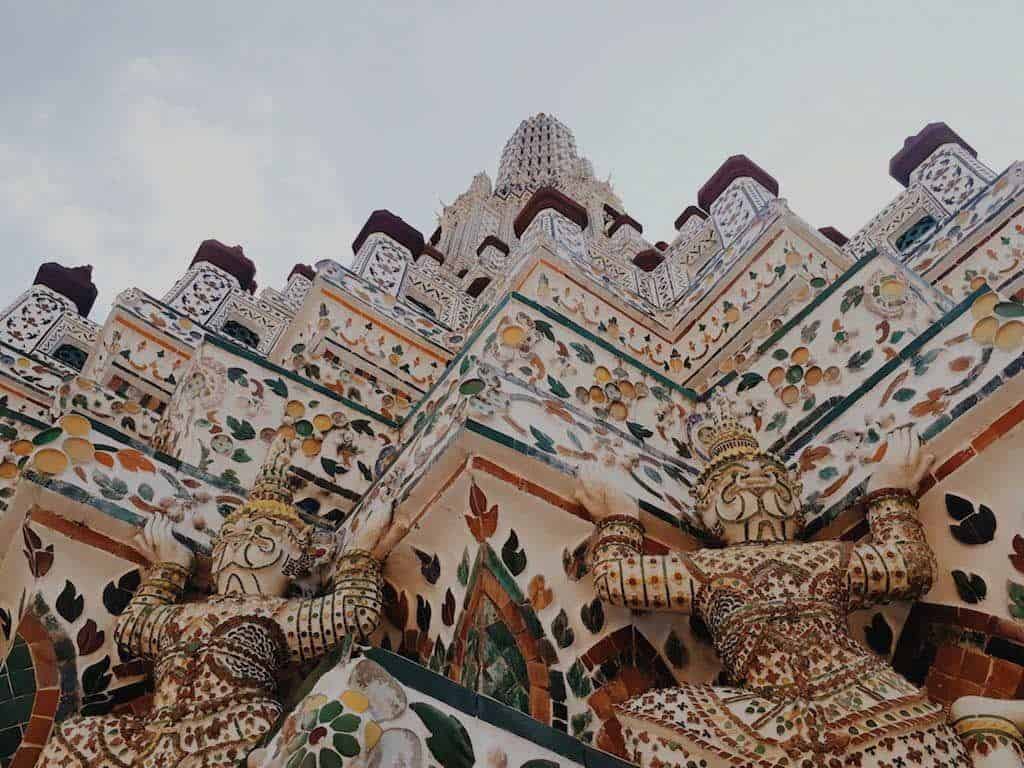
Chiang Mai is a bit more relaxed than Bangkok, but there are still plenty of things to do.
This city in northern Thailand has over 300 Buddhist temples and is surrounded by lush jungles.
You can take a Thai cooking class, get a Thai massage, or watch a Muay Thai Boxing match to immerse yourself in the culture of Chiang Mai.
Make sure you taste a traditional Khao Soi, which is a creamy curry and egg noodle dish famous in northern Thailand.
Khao Soi Khun Yai in a cheap and authentic local restaurant in Chiang Mai where you can try a delicious Khao Soi.
If you’re looking for a nice place to stay in Chiang Mai, check out the Floral Hotel at Thapae Gate .
Located right in the Old City and close to all Chiang Mai’s attractions this gorgeous hotel has comfortable rooms, a nice swimming pool, and only costs between 50 and 70 USD per night.
For exactly what there is to see and do there, check out our list of what to do in Chiang Mai .
Once you’re finished with your time in the city, fly from Chiang Mai to Phuket.
After arriving at the Phuket airport on the north of the island, catch a taxi down to the beautiful white sands of Karon Beach.
All-Star Guesthouse is a great place to stay near Karon Beach, as it is a small, cozy, family-run place that is centrally located and very affordable.
For more accommodation options in Phuket, check out this article on all the best places to stay in Phuket for every budget.
Here’s a more detailed article we wrote on how to make the most of your Phuket itinerary .
During your two days in Phuket, you can visit the Big Buddha, go sightseeing in Phuket Old Town, go parasailing at Patong Beach, and watch the sunset from one of the island’s many viewpoints.
Head over to Rassada Pier to take the ferry to Koh Phi Phi, a gem of any Thailand trip.
READ MORE: Add these to your list of things to do in Phuket .
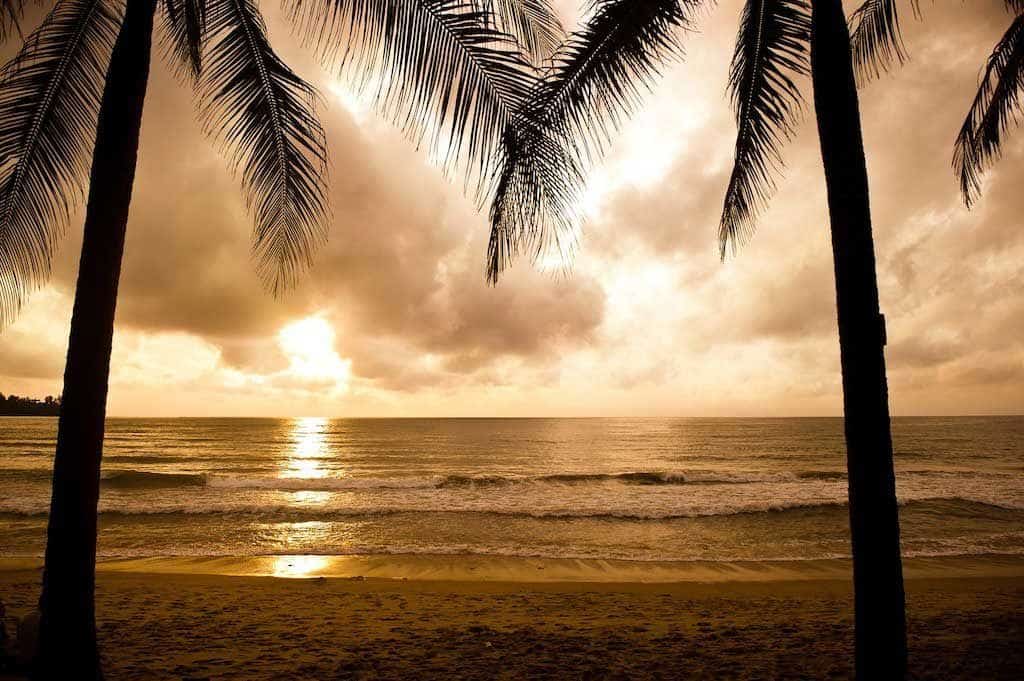
For the last day in your 7 day Thailand itinerary, soak in the picturesque views at Koh Phi Phi.
Koh Phi Phi is actually a chain of three tiny islands, though only one of them, Phi Phi Don , is inhabited.
On Phi Phi Don you can find lots of cheap backpacker hostels, bars, clubs, clothing stores, and souvenir shops.
Make sure you save time for sunbathing next to the turquoise waters of Loh Dalam Bay, and for hiking up to the viewpoint that looks over the whole island.
Koh Phi Phi doesn’t have an airport, so you can either take the ferry back to Phuket and fly out of there, or take the ferry to Krabi on the mainland and fly out of there.
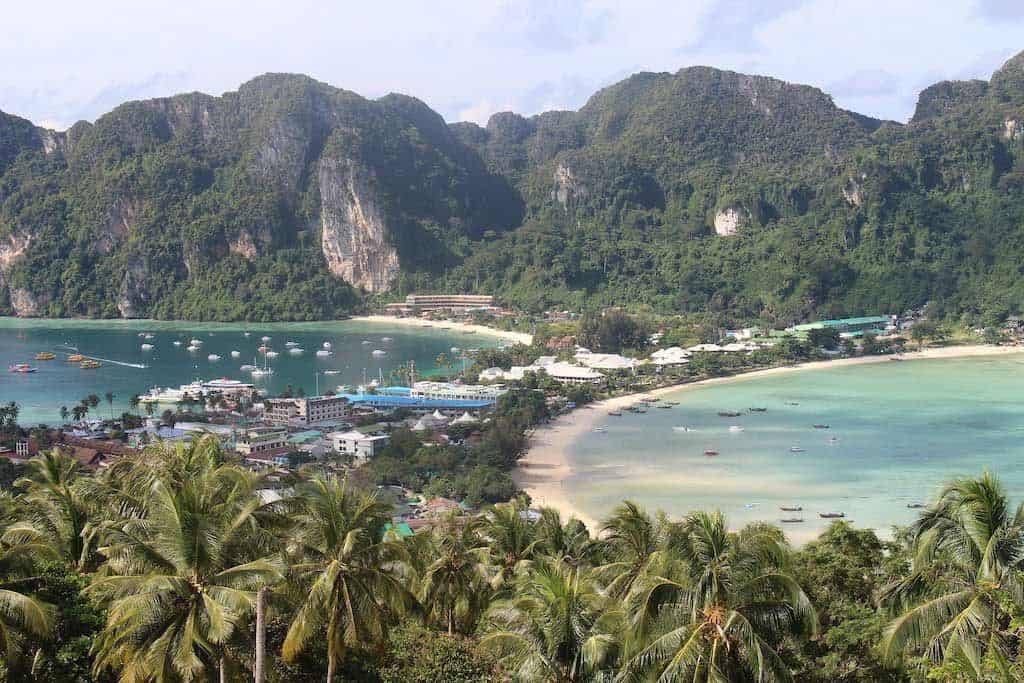
2 Week Thailand Itinerary
This 2 weeks in Thailand itinerary is great for those who can’t take loads of time off work but still want to get a good feel for the country.
Start your 2 weeks in Thailand in Bangkok. If you’ve seen enough during your first day in Bangkok, you can switch things up by taking a day trip out of the city.
The best day trip from Bangkok is visiting Ayutthaya , the former capital of the Siamese Empire.
This ancient city is about 85 km north of Bangkok and was founded in the 14th century.
Ayutthaya is a UNESCO World Heritage Site and is full of old but well-preserved temples, monuments, and national parks.
Next on the agenda for 2 weeks in Thailand, fly from Bangkok to Chiang Mai.
READ MORE: 12 awesome things to do while travelling in Bangkok
No 2 weeks in Thailand itinerary is complete without stopping in Chiang Mai.
If you’d like to make a day trip for one of your 3 days in Chiang Mai, Doi Inthanon National Park is a great place to go nearby.
Located about 70 km away from Chiang Mai, Doi Inthanon National Park is a massive green space filled with temples, local villages, gardens, hiking trails, waterfalls, and lots of peaceful forests.
You can take a songtaew to reach the park from Chiang Mai, which is a red pick-up truck that serves as a collective taxi.
Try and find other travellers to share the ride with you so the overall price becomes cheaper!
Another option is visiting Elephant Nature Park , an elephant rescue sanctuary near Chiang Mai. If you are tempted to see elephants on your Thailand trip, just remember to visit somewhere ethical that protects the animals and forbids riding. Elephant Nature Park is a great place to visit elephants ethically!
Check out this Chiang Mai 3 Day Itinerary for more inspiration on things to do in this charming northern Thai city.
Chiang Rai is next on your 2 weeks in Thailand trip. Take a minibus from Chiang Mai to Chiang Rai. We recommend booking this on the 12go.asia website .
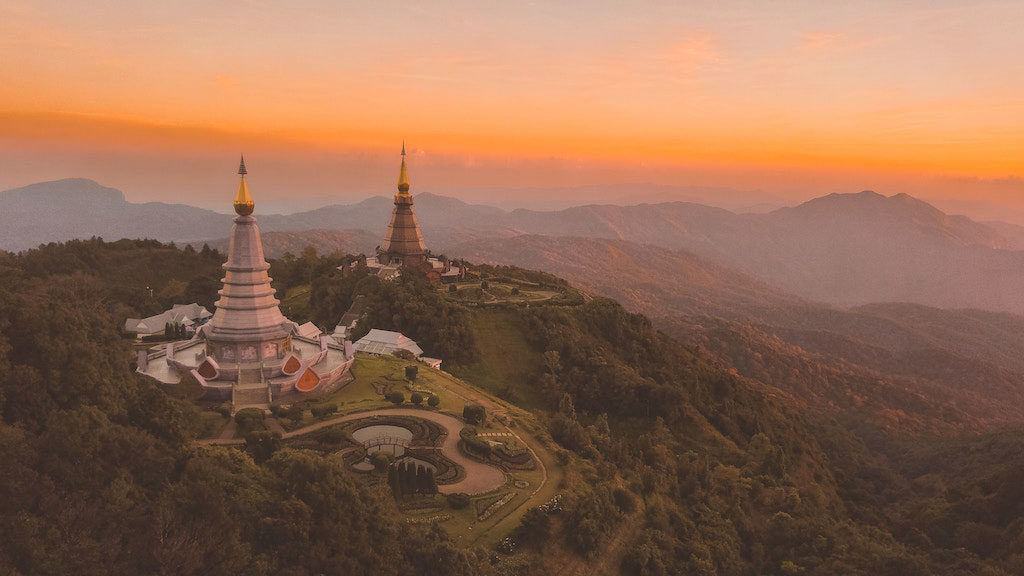
Chiang Rai is a quiet and beautiful city in the north of Thailand. If you have time to visit it on your Thailand trip, definitely do so!
Stroll through the small town centre and chat with friendly locals, or drive up to the northernmost tip of Thailand which is connected to Myanmar by a bridge.
The breathtaking temples are definitely the highlights of Chiang Rai. Make sure you check them out during your 2 weeks in Thailand.
Probably the most visited temple in Chiang Rai, the unique decoration and detail of this whitewashed temple will blow your mind.
- Location: 1 Phahonyothin Rd
Slathered in deep blue colours and adorned with Buddhist relics, the Blue Temple is a feast for the eyes.
- Location: 306 Maekok Rd
- Hours: 7 am to 8 pm
If you’re travelling on a budget, Chiang Rai has lots of really nice and affordable accommodation options.
Connect Hostel has high ratings from travellers and costs only 8-9 USD per night for a dorm room or 37 USD per night for a private room.
Fly from Chiang Rai to Phuket so you can enjoy some of the island destinations during 2 weeks in Thailand!
READ MORE: Learn all about these incredible things to do in Chiang Rai .
Because Phuket is such a mountainous island, there are lots of hilltop restaurants with open views where you can look over the beautiful scenery while you dine.
Head to Heaven Restaurant & Bar for a view over Kata Noi Beach, the Palace Restaurant and Sky Lounge for a view over Patong Beach, or Tung Ka Café for a view over Phuket Town.
Or take a day trip to the James Bond Island, located in Phanga Nga Bay.
Next on your 2 weeks in Thailand itinerary, take the ferry from Phuket’s Rassada Pier down to Koh Lanta.
Koh Lanta is an island in the Andaman Sea that is far less touristy than some of Thailand’s other islands.
Snorkelling, swimming, kayaking, diving and sunbathing are all incredible here as there are few crowds to distract from the tropical scenery.
Explore the natural phenomenon of the Emerald Cave, stroll through the tiny and rustic Old Town, or go hiking in the Mu Ko Lanta National Park.
A gorgeous place to stay in Koh Lanta during 2 weeks in Thailand is the Crown Lanta Resort and Spa (has recently been renamed to Avani Plus Koh Lanta Krabi Resort).
Read the full, NOMADasaurus detailed review of this luxury hotel here .
Take the ferry from Koh Lanta to Ao Nang to finish off 2 weeks in Thailand.
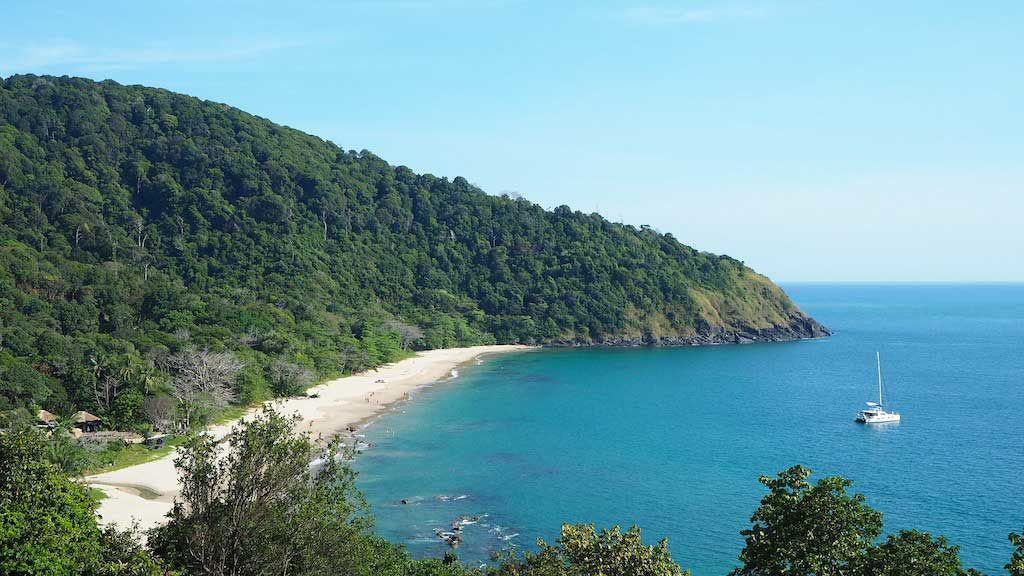
Ao Nang is relaxing and quaint, but still leaves travellers awestruck with its towering limestone cliffs and postcard-worthy beaches.
Railay Beach is the most popular attraction here, and you can hop on a cheap long tail boat from Ao Nang Beach to reach this little cove of cliffs and turquoise water.
Ao Nang is ideal for rock climbing enthusiasts, as the abundance of massive, jagged rocks makes for challenging but rewarding climbing spots.
You can also hike Hang Mak Mountain or go zip lining over the jungle for a bit of excitement.
Any 2 week Thailand itinerary must include a day of snorkelling or diving.
Ao Nang is an amazing place for snorkelling or diving as the water is warm and clean and there is lots of wildlife thriving in the area.
After an action-packed 2 days in Ao Nang and 2 weeks in Thailand fly from Krabi back to Bangkok to catch your departing international flight.
READ MORE: Add these to your list of things to do in Ao Nang .
3 Week Thailand Itinerary
A 3 week Thailand itinerary is great for those who really want to explore the stunning country Thailand.
Aside from the big cities, you’ll get to visit small towns, national parks, and islands in the Andaman Sea and the Gulf of Thailand. A 3 week itinerary is ideal!
3 Days in Bangkok
Between checking out the tourist attractions and taking a day trip to Ayutthaya, you’ll have an incredible 3 days in Thailand’s capital city.
An awesome activity in Bangkok is visiting a rooftop bar in a giant skyscraper, with a panoramic view of the city.
Outside of the Old Town, Bangkok is super modern and cosmopolitan, so it can be fun to treat yourself to a nice cocktail or meal overlooking the metropolis.
Keep in mind that most rooftop bars are classy and have a dress code, so try to dress fancier than usual.
Here are some of the best rooftop bars in Bangkok, all of which sell high-quality food and beverages and have a crazy view of the city sprawled below.
- Location: 45th floor, Bangkok Marriott Hotel Sukhumvit, 2 Ban Kluai Nuea Alley, Khlong Tan Nuea, Watthana, Bangkok 10110
- Hours: 5 pm to 1:30 am
- Location: 37th floor, Pullman Bangkok Hotel G, 188 Silom Rd, Khwaeng Suriya Wong, Khet Bang Rak, Krung Thep Maha Nakhon 10500
- Hours: 5 pm to 12 am
- Location: 55th floor, Centara Grand at CentralWorld, 999/99 Rama 1 Road, Pathumwan, Bangkok 10330
- Hours: 5 pm to 1 am
For additional things to do in Bangkok, consider checking out the Airplane Graveyard or celebrating Songkran , the Buddhist New Year, in the city.
Next on your 3 week itinerary, fly from Bangkok to Chiang Mai.
With an extra day in Chiang Mai, you have time to take another day trip out of the city to explore the surrounding nature.
One of the coolest places to visit near Chiang Mai is the Sticky Waterfall, or “Bua Tong Waterfall” located in the Jedsee Fountain Forest Park.
Here you can climb the vertical waterfall using just your hands and feet because the rocks are coated with rough mineral deposits so they aren’t slippery. It’s one of the most amazing day trips from Chiang Mai.
Spend a few hours here swimming, splashing, climbing, and having a picnic (there aren’t any shops in this remote area near Chiang Mai so bring your own food and drinks!).
After your 4 days in Chiang Mai, take a minibus to Pai.
Pai is a relaxing jungle paradise where backpackers love to chill out and spend quality time with nature.
There are so many natural wonders to explore near Pai, such as the Pambok Waterfall, the Tham Lod Caves full of stalactites and stalagmites, the soothing Tha Pai Hot Springs, and the massive Pai Canyon.
Rent a scooter for a couple of days and enjoy the freedom of zooming through the jungle, and stroll through the local walking street market at night for some cheap local street food.
Spend your two nights in Pai at one of the local backpacker hostels.
Tribal Pai Backpackers is a great choice for accommodation because it is social and fun, but a bit less crazy than a party hostel.
A dorm here costs as little as 4 USD per night, and private rooms are about 33 USD per night. Accommodation can be super cheap when you visit Thailand!
Catch a minibus from Pai to Chiang Rai .
READ MORE: Add these to your list of things to do in Pai .
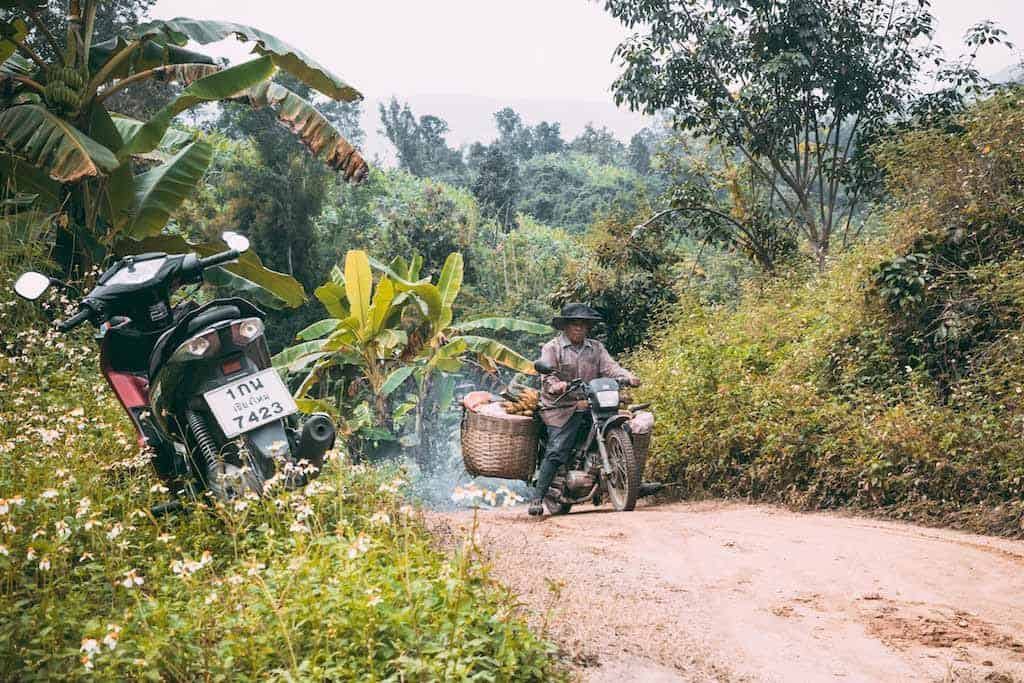
If you haven’t yet taken a cooking class in Thailand, Chiang Rai is a great place to do it.
You can book a full-day cooking class that starts with a tour of the local market to pick up fresh ingredients.
Then you can learn all about the rich flavours and simple techniques of Thai cuisine and eat all the delicious food you cook.
This is a great insight into the culture of Thailand, so you should definitely try and squeeze a cooking class into a 3 week Thailand itinerary.
Fly from Chiang Rai to Phuket.
After spending a decent amount of time soaking in the sun on Phuket’s pristine beaches, entertain yourself by watching a famous ladyboy cabaret show.
A ladyboy performance is a must-see when you visit Thailand.
Phuket’s Simon Cabaret was established in 1991, and now hosts some of the best cabarets in the country.
Ladyboy cabarets consist of drag queens wearing fantastic costumes and putting on a show full of dancing, acting, lip-syncing, sometimes real singing, and a whole lot of energy and pizazz.
Take the ferry from Phuket to Ao Nang .
In addition to the outdoor activities mentioned in the 2 week Thailand itinerary, you can try to explore a little more of the islands surrounding Ao Nang by doing an island hopping tour.
A 3 week Thailand itinerary still can’t cover all of the country’s stunning islands, so a guided day tour by speedboat is a great way to pack lots of cool places into a short time.
On a day tour, you’ll see gorgeous beaches, huge cliffs, snorkelling sights, and just a lot of mind-blowing natural beauty.
Then, add another epic place to your 3 week itinerary and take a shuttle from Ao Nang to Khao Sok National Park .
Khao Sok National Park is an oasis of serenity and scenery that looks like it came out of a fairy tale. It’s often a highlight for those who visit Thailand.
Dense jungle, hanging vines, limestone cliffs, caves, rivers, lakes, animals and insects are just a few of the things you’ll find here.
You can go hiking and kayaking, or take a boat tour through the park, or just relax and soak in the serenity from your lakeside wooden bungalow.
Cheow Lan Lake is the most beautiful area to stay in, but you can also stay in the Khao Son Riverside if you don’t want to be so deep in the jungle.
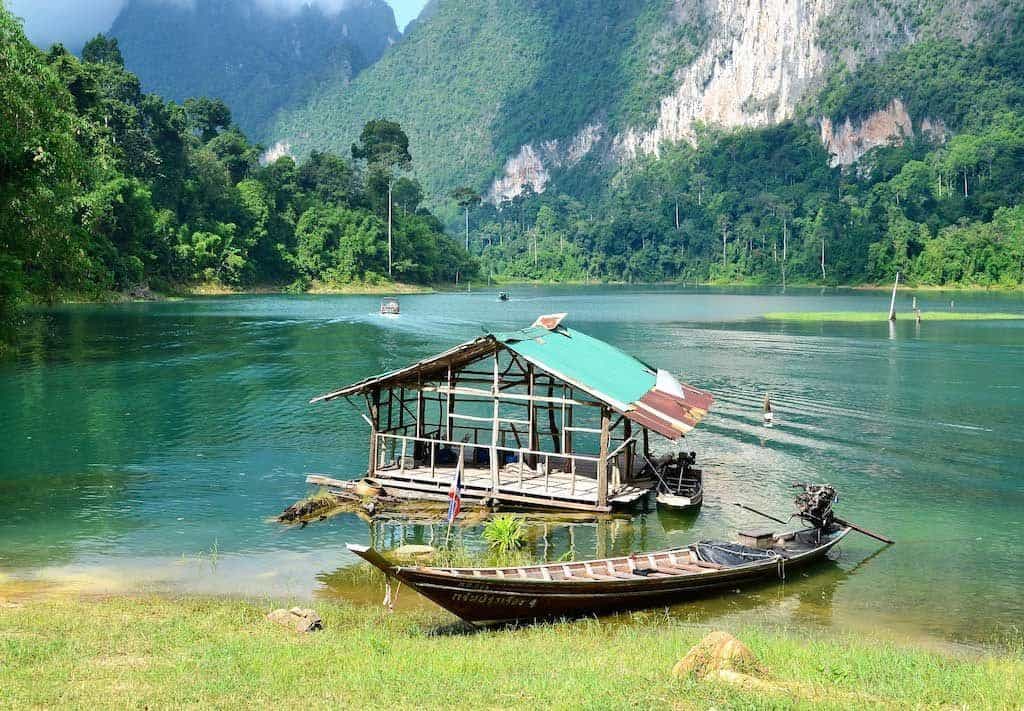
Travelling from Khao Sok National Park over to Koh Samui in the Gulf of Thailand can be done by some combination of shuttle and minibus, but you’ll have to dedicate one full day to the trip.
The transport prices are usually very cheap, but it will take quite a while since you have to cross the Malay Peninsula.
After reaching the ferry port on the eastern side of the peninsula, just hop on a ferry and make your way to Koh Samui!
Check out this website for planning your trip.
Spend the last 3 days of your 3 week Thailand itinerary relaxing on the white sands of Koh Samui .
Chaweng Beach, Lamai Beach, and Choeng Mon Beach are the three most popular beaches on Koh Samui and they all offer beautiful scenery and turquoise water for swimming.
Koh Samui is the second-largest island in Thailand, so there is plenty to do here in addition to just being a beach bum.
Head to the north of the island to check out the Big Buddha and the night markets, including Fisherman’s Village Street Market, held every Friday from 5 pm to 11 pm.
Take a fruit carving class or visit the Secret Buddha Garden, full of mysterious statues and peaceful forest.
Definitely spend one of your days in Koh Samui taking a day trip to Ang Thong National Marine Park.
This protected area consists of 42 little islands, and you can only visit by government approved tour boat.
There are lots of affordable day tours that can bring you into the park and take you hiking, snorkelling, kayaking, and exploring throughout the diverse and impressive national marine park.
Other things to do in Koh Samui include visiting Koh Tao for snorkeling or Koh Phangan for the Full Moon Party. Both Koh Tao and Koh Phangan can be visited as day trips via local boat.
If you have even more than 3 weeks in Thailand, you can continue exploring Koh Tao and Koh Phangan for even longer, as there are plenty of fun things to do here.
If your Thailand trip is coming to a close after Koh Samui, fly back to Bangkok to catch your departing international flight.
DISCLAIMER: Some of the links in this article are affiliate links, which means if you book accommodation, tours or buy a product, we will receive a small commission at no extra cost to you. These commissions help us keep creating more free travel content to help people plan their holidays and adventures. We only recommend the best accommodations, tours and products that ourselves or our fantastic editorial team have personally experienced, and regularly review these. Thanks for your support, kind friend!
Gabby Boucher
Hi, We’re Alesha and Jarryd!

We’ve been traveling the world together since 2008, searching for the planet’s best destinations and adventures.
Love Travel?
Sign up for our free weekly newsletter for the best travel tips, ideas and deals!
We respect your privacy. Unsubscribe at any time.
READ MORE...
How to Get a Sak Yant in Chiang Mai (Hygienically and Safely in 2024)
Cape Kudu Hotel Review – Best Place to Stay on Koh Yao Noi
17 EPIC Things to Do in Pai, Thailand [2024 Guide]
Related Posts
The perfect 3 days in bangkok itinerary (2024 guide), thailand packing list – what to pack for a perfect holiday, the perfect 3 days in koh samui itinerary, 10 best things to do in ao nang, thailand [2024], 4 thoughts on “the perfect 1, 2 and 3 week thailand itinerary”.
I’m absolutely hooked on your Thailand itinerary! Week 1’s cultural immersion, Week 2’s adrenaline-packed activities, and Week 3’s idyllic relaxation—what a well-rounded adventure. Your blog is a goldmine for anyone planning a trip. I’ll be sure to share this valuable resource with my fellow travel enthusiasts!
This trip blog truly captures the essence of wanderlust and adventure. The stories shared here evoke a sense of curiosity and make me yearn to explore the world. It’s the perfect escape for those moments when you can’t physically travel but still want to be transported to new horizons.
Wonderful itinerary! Thanks for the tips!
I’ve been to Thailand several times, and I loved all of these places. I have yet to visit Khao Sok — it is on my list.
Thank you for stopping by. Definitely check Koh Sok out next time you are in Thailand. 🙂
Leave a comment Cancel reply
Save my name, email, and website in this browser for the next time I comment.

Navigate forward to interact with the calendar and select a date. Press the question mark key to get the keyboard shortcuts for changing dates.
Navigate backward to interact with the calendar and select a date. Press the question mark key to get the keyboard shortcuts for changing dates.
Thailand Trip Planner
Top destinations in thailand.

Top attractions in Thailand

Other notable attractions

Explore nearby places
- Bang Sao Thong
- Phra Samut Chedi
- Racha Thewa
- Phra Pradaeng
- Samut Prakan
- Pathum Thani
- Bang Bua Thong
- Phutthamonthon
- Bang Phli Yai
- Krathum Baen
- Lat Lum Kaeo
- Nakhon Chai Si
- Bang Chalong
- Samut Sakhon
- Khlong Luang
- Nakhon Pathom
All related maps of Thailand
- Map of Thailand
- Map of Bangkok
- Map of Bang Kruai
- Map of Bang Sao Thong
- Map of Nonthaburi
- Map of Phra Samut Chedi
- Map of Bang Yai
- Map of Racha Thewa
- Map of Phra Pradaeng
- Map of Samut Prakan
- Map of Pak Kret
- Map of Pathum Thani
- Map of Bang Bua Thong
- Map of Phutthamonthon
- Map of Bang Phli Yai
- Map of Krathum Baen
- Map of Thanyaburi
- Map of Lat Lum Kaeo
- Map of Nakhon Chai Si
- Map of Bang Chalong
- Map of Rangsit
- Map of Sai Noi
- Map of Sam Phran
- Map of Nong Prue
- Map of Sam Khok
- Map of Samut Sakhon
- Map of Lam Luk Ka
- Map of Bang Bo
- Map of Khlong Luang
- Map of Ban Phaeo
- Map of Nakhon Pathom
Thailand throughout the year
- Thailand in January
- Thailand in February
- Thailand in March
- Thailand in April
- Thailand in May
- Thailand in June
- Thailand in July
- Thailand in August
- Thailand in September
- Thailand in October
- Thailand in November
- Thailand in December
Q&A about Thailand
Add places from guides with 1 click, collaborate with friends in real time, import flight and hotel reservations, expense tracking and splitting, checklists for anything, get personalized suggestions.
4.9 on App Store, 4.7 on Google Play

Two Weeks in Thailand: A Complete 14-Day Thailand Itinerary
Are you planning a trip to Thailand and wondering how to make the most of your time? Look no further! In this Thailand Itinerary, we’ll share two-weeks worth of adventure, showcasing what Thailand offers best.
Page Contents
A Complete 14-Day Thailand Itinerary
From bustling cities to idyllic beaches and lush forests, Thailand is a country that has something for everyone. That’s why our itinerary includes stops in Phuket, Phi Phi, Koh Samui, Koh Tao, and Koh Phangan, allowing you to see a wide range of landscapes and cultures.
So make sure to pack your bags and bring your favorite travel camera , ready to experience this incredible destination’s beauty and diversity. Follow along as we take you on a journey through some of Thailand’s top sights and attractions. Whether you’re a first-time visitor or a seasoned traveler, you’re sure to find hidden gems or something new and exciting to discover in this fantastic country.
If you’re planning a two-week trip to Thailand, you may wonder whether it’s worth bringing a travel camera . While smartphones like the Huawei P30 Pro have come a long way in terms of camera quality, a dedicated camera like the Sony A7IV camera or a Fujifilm x100f can still offer a number of advantages.
4 days in Phuket itinerary
Phuket is a beautiful island destination in Thailand that is known for its stunning beaches, vibrant nightlife, cultural attractions, and kickbox sports gyms. As a result, there’s no shortage of things to see and do in Phuket.
Here’s a four-day itinerary that will help you make the most of your time in this amazing destination:
Phuket, Thailand itinerary, Day 1:
- Start your day with a visit to Cafe del Mar , a stylish beach club that’s known for its amazing views and laid-back atmosphere. Enjoy a delicious breakfast or brunch while soaking up the sun and listening to the soothing sounds of the waves.
- After breakfast, head to Monkey Hill , a popular spot for seeing the island’s famous macaque monkeys up close. Be sure to bring some snacks to feed the monkeys, but be careful not to get too close, as they can be aggressive.
- In the evening, head to Bangla Road , the heart of Phuket’s vibrant nightlife scene. Here you’ll find a wide range of bars, clubs, and restaurants, as well as street performers and vendors.
Phuket, Thailand itinerary, Day 2:
- On your second day, head to Freedom Beach , one of Phuket’s most beautiful and secluded beaches. The beach is only accessible by boat, so be sure to book a tour or hire a longtail boat to take you there. Spend the day relaxing on the beach and swimming in crystal-clear waters. Be sure to bring plenty of sunscreen, as the sun can be extreme in Phuket.
- Head to Kata Rocks Beach Club for a stylish and sophisticated dining experience in the evening. The club offers stunning views of the Andaman Sea , and the menu features a mix of international and local cuisine.
Phuket, Thailand itinerary, Day 3:
- Today, visit the Big Buddha Temple , one of Phuket’s most famous and iconic landmarks. The temple is home to a giant statue of the Buddha, which stands 45 meters tall and is visible from many parts of the island.
- After exploring the temple, head to the Green Elephant Sanctuary park , where you can learn about and interact with rescued elephants. The park offers a range of educational programs and activities, and it’s a great way to support conservation efforts in Thailand.
- In the evening, head back to Bangla Road for another round of nightlife and entertainment. Be sure to try some of the local Thai cuisines , including dishes like pad Thai and green curry.
Phuket, Thailand itinerary, Day 4:
- On your final day in Phuket, take some time to relax and unwind. Head to a local spa for a traditional Thai massage, or spend the day lounging on the beach and soaking up the sun.
- In the evening, enjoy a farewell dinner at one of Phuket’s many restaurants. The island has a wide range of culinary options, from street food stalls to high-end restaurants, so you’re sure to find something to suit your taste and budget.
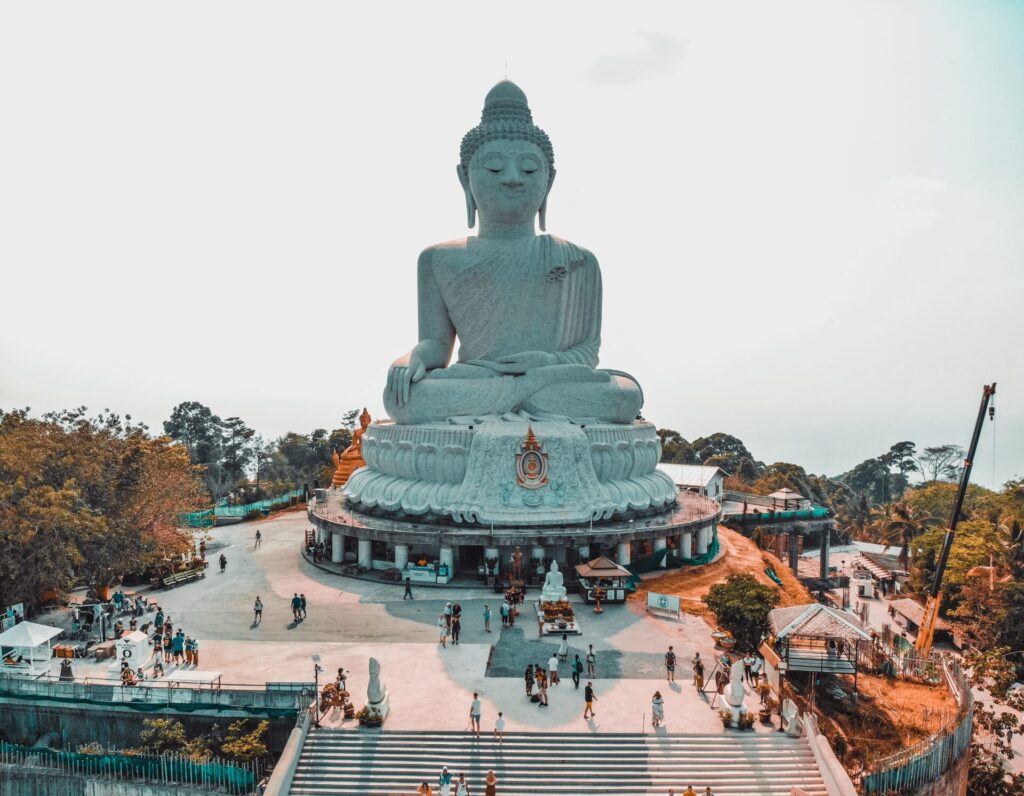
3 days in Phi Pho itinerary
Phi Phi is a small island located in the Andaman Sea, off the coast of Thailand. It is known for its stunning white sand beaches and crystal clear waters, which are popular for swimming, snorkeling, and diving. Phi Phi is also known for its beautiful rock formations, which can be seen from the water or explored by boat.
The island is home to several small villages and resorts, as well as many restaurants and bars. In addition to its natural beauty, Phi Phi is also known for its vibrant nightlife, with several lively bars and clubs located along the beach. The island is a popular destination for travelers looking for a relaxing beach vacation, as well as those who enjoy outdoor activities and nightlife.
Here’s a three-day itinerary to help you make the most of your time on the island:
Phi Pho, Thailand itinerary, Day 1:
- Start your day by renting a kayak and exploring the island’s many hidden coves and beaches. One of the most popular spots to visit is Monkey Beach , where you can see the island’s famous macaque monkeys up close.
- In the evening, head to the fire shows at Loh Dalum Beach . Here you’ll find a wide range of street performers and vendors and amazing fire shows that are sure to impress.
- After the fire shows, head to one of Phi Phi’s many beach clubs for a night of music and dancing. The island is known for its vibrant nightlife scene, and there are plenty of options to choose from, whether you’re into EDM, hip-hop, or live bands.
Phi Pho, Thailand itinerary, Day 2:
- Today, head out for a scuba dive to explore the underwater world of Phi Phi. The island is surrounded by beautiful coral reefs and a wide variety of marine life, and it’s a popular spot for scuba diving and snorkeling.
- After diving, head back to the beach for some relaxation and sunbathing. Phi Phi has some of the most beautiful beaches in Thailand, and there are plenty of options to choose from, whether you’re looking for a secluded spot or a lively party scene.
- In the evening, head to one of the many beach parties on the island. Phi Phi is known for its lively nightlife, and there are always plenty of parties and events to choose from, whether you’re into live music, DJ sets, or fire shows.
Phi Pho, Thailand itinerary, Day 3:
- On your final day in Phi Phi, Start your day with a visit to Maya Ba y, the iconic location featured in the movie The Beach (Staring Leonardo DiCaprio) . The bay is known for its crystal-clear waters and beautiful white sandy beaches, and it’s a popular spot for swimming and snorkeling.
- After your snorkeling adventure, head to the secret beach at pp Princess . This hidden gem is only accessible by boat and offers a secluded and peaceful atmosphere with beautiful white sand and crystal-clear waters.
- In the evening, head to the Phi Phi Viewpoint for sunset. The viewpoint offers stunning panoramic views of the island and the surrounding sea, and it’s a popular spot for photography and watching the sunset.
Overall, this three-day itinerary will help you make the most of your time in Phi Phi. From exploring the island’s stunning natural beauty to enjoying its vibrant nightlife, there’s no shortage of things to see and do in this amazing destination. So pack your bags and get ready to experience the beauty and diversity of Phi Phi.
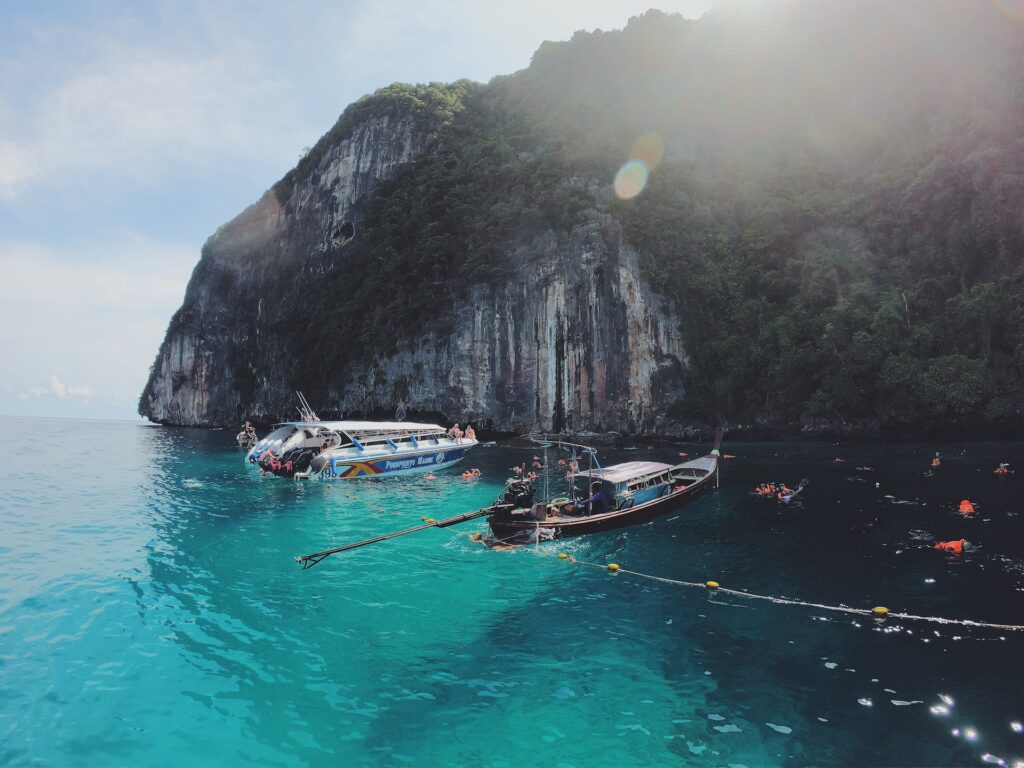
3 days in Koh Samui itinerary
Koh Samui is a popular island destination in Thailand known for its beautiful beaches, clear blue waters, and coconut groves. Located in the Gulf of Thailand, Koh Samui is the third largest island in Thailand and is known for its laid-back atmosphere and relaxed pace of life. The island is also home to several luxurious resorts, as well as a variety of water sports activities, including snorkeling, diving, and kiteboarding.
Here’s a three-day itinerary that will help you make the most of your time on the island:
Koh Samui, Thailand itinerary, Day 1:
- Start your day with a visit to Vikasa Yoga , a popular yoga studio that offers classes for all levels. The studio is located in a beautiful and peaceful setting, and it’s a great way to start your day with some mindfulness and relaxation.
- After your yoga class, head to the Lama Viewpoint , which offers stunning panoramic views of the island and the surrounding sea. The viewpoint is a popular spot for photography, and it’s a great place to enjoy the beauty of Koh Samui.
- In the afternoon, visit the Wat Phra Vai Temple , a beautiful and historic Buddhist temple located in the island’s capital city of Nathon . The temple is known for its beautiful architecture and intricate details, and it’s a great place to learn about Buddhist culture and history.
Koh Samui, Thailand itinerary, Day 2:
- Today, explore Bophut Fishing Village , a charming and picturesque village located on the island’s north coast. The village is known for its laid-back atmosphere and traditional way of life, and it’s a great place to experience local culture and history.
- After exploring the village, head to the Namuang Waterfall , one of the island’s most beautiful and popular natural attractions. The waterfall is located in the Namuang Safari Park , and it’s a great spot for swimming and enjoying the natural beauty of Koh Samui.
- In the evening, head to the Samui Elephant Sanctuary , a unique and ethical sanctuary for rescued elephants. The sanctuary offers a range of educational programs and activities, and it’s a great way to support conservation efforts and learn about these amazing animals.
Koh Samui, Thailand itinerary, Day 3:
- On your final day in Koh Samui, head to Sunset Lipa Noi Beach for some relaxation and sunbathing. The beach is known for its beautiful white sand and crystal-clear waters, and it’s a great spot for swimming and enjoying the sunset.
- In the afternoon, visit some of the island’s other popular attractions, such as the Big Buddha Temple, the Na Muang Safari Park , or the Secret Buddha Garden .
- In the evening, head to Chaweng Beach , the island’s busiest and most vibrant beach area. Here you’ll find a wide range of restaurants, bars, and clubs, as well as street performers and vendors.

2 days in Koh Tao itinerary
Koh Tao, known as “Turtle Island”, is a popular island for divers. It is home to several world-class diving sites that offer the opportunity to see a wide range of marine life, including manta rays, whale sharks, and a variety of colorful fish. In addition to diving, Koh Tao is also known for its beautiful beaches and water sports activities, including snorkeling, kayaking, and stand-up paddleboarding.
If you’re looking to escape the hustle and bustle of city life and immerse yourself in the beauty of Koh Tao, then this 2-day itinerary is for you.
Koh Tao, Thailand itinerary, Day 1:
- After arriving on Koh Tao, start your day with a scuba diving adventure. The island is known for its crystal-clear waters and diverse marine life, making it a top destination for divers of all skill levels. If you’re a beginner, consider taking a “Discover Scuba Diving”-course to learn the basics. If you’re more experienced, sign up for a guided dive to explore the underwater world.
- After diving, take a boat to Koh Nang Yuan , a small island just a short distance from Koh Tao. Here, you can hike to the top of the island for panoramic views of the surrounding area or lounge on the white sandy beaches.
- In the evening, go to Fishbowls Beach Bar for some live music and a laid-back atmosphere. This popular spot is known for its lively atmosphere and a great selection of drinks. Sit back, relax, and enjoy the music as you take in the beauty of Koh Tao.
Koh Tao, Thailand itinerary, Day 2:
- Start your second day on Koh Tao with a Thai cooking class. This is a great way to learn about the local cuisine and pick up some new cooking skills. You’ll learn how to prepare traditional dishes like pad Thai and green curry, and have the opportunity to sample your creations at the end of the class.
- After the cooking class, spend the afternoon exploring the island. Rent a motorbike or a bicycle and make your way around the island, stopping to take in the breathtaking views and visit the local shops and restaurants. You can also visit Mae Haad Pier , the island’s main hub, to see the local fishing boats and learn about the island’s history.
- In the evening, take a sunset cruise around the island. You’ll have the opportunity to see the beautiful sunset colors as you sail around Koh Tao. After the cruise, head back to your hotel and get a good night’s sleep, ready for your next adventure on this beautiful island.
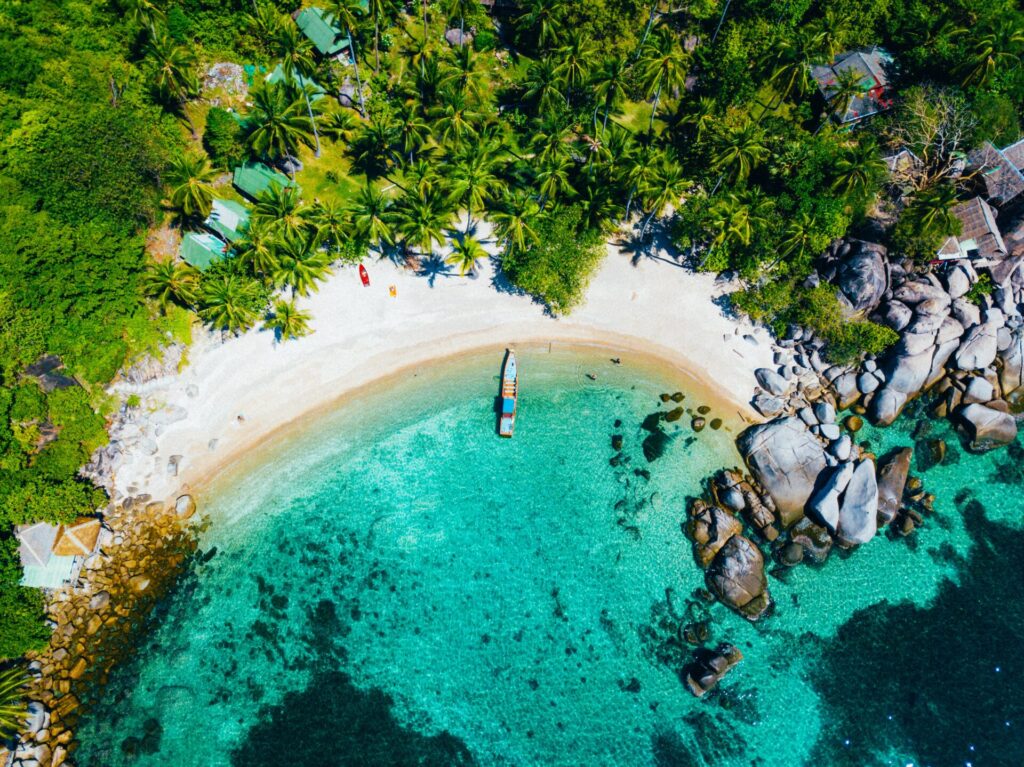
2 days in Koh Phangan itinerary
If you’re looking to escape the hustle and bustle of city life and immerse yourself in the beauty and culture of Koh Phangan, then this 2-day itinerary is for you.
Koh Phangan, Thailand itinerary, Day 1:
- After arriving at Koh Phangan, start your day by exploring the island’s natural beauty. Head to Apichada Viewpoint , located on the island’s north side, for panoramic views of the surrounding area. From here, you can see the lush forests, crystal-clear waters, and beautiful beaches that make Koh Phangan a top destination for nature lovers.
- Next, make your way to Paradise Waterfall , located in the island’s heart. Here, you can take a refreshing dip in the cool waters, surrounded by the beautiful jungle scenery.
- After exploring the waterfall, head to the night market to sample some of the local cuisines and browse the many stalls selling handicrafts, clothing, and other souvenirs.
Koh Phangan, Thailand itinerary, Day 2:
- Start your second day on Koh Phangan with a jungle safari. You’ll have the opportunity to explore the island’s lush forests and learn about the local flora and fauna. Your guide will take you to some of the island’s most beautiful spots, including Phasing Waterfall , where you can take a dip in the cool waters and enjoy the peaceful surroundings.
- After the jungle safari, spend the afternoon relaxing on the beautiful Koh Graham Beach . Located on the island’s east side, this secluded spot is known for its clear waters and laid-back atmosphere. You can lounge on the white sandy beaches, take a dip in the sea, or visit the Koh Graham Beach Bar for a refreshing drink.
- In the evening, make your way to the famous Full Moon Party , held on the beach in Haad Rin . This legendary event attracts thousands of people from around the world, and is known for its vibrant atmosphere and incredible music. Dance the night away and experience the unique culture of Koh Phangan.
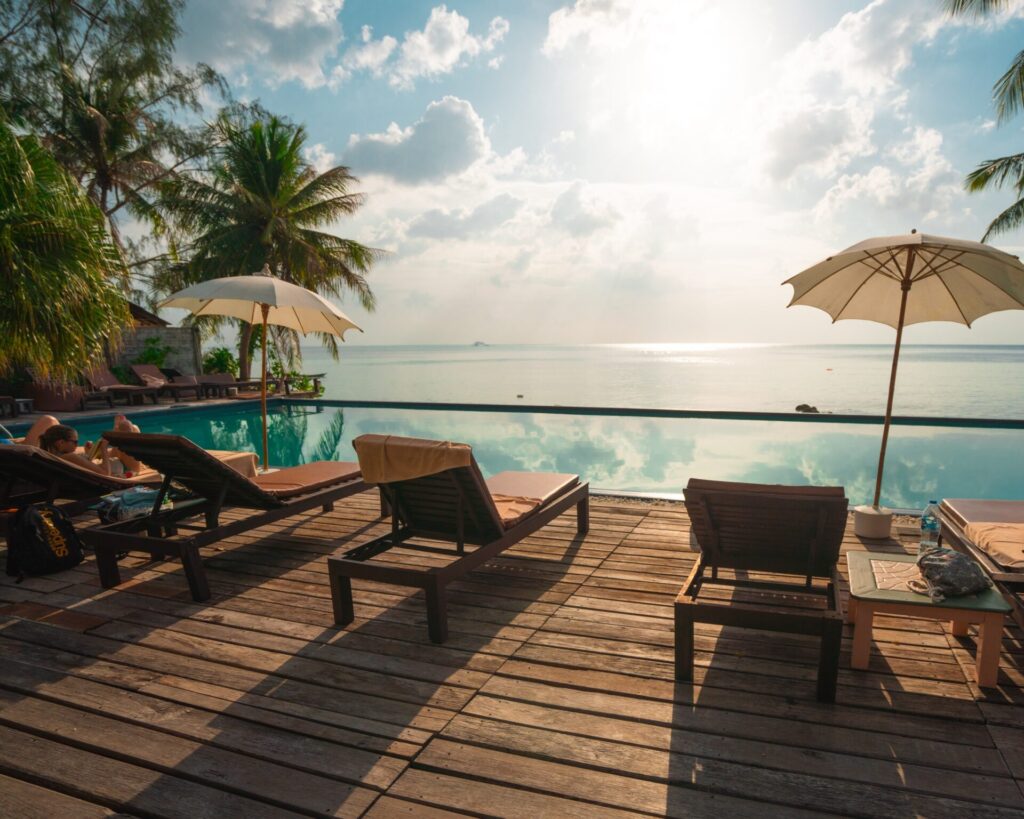
After two weeks in Thailand, you’ll have experienced the best this beautiful country offers. From the bustling streets of Phuket to the stunning beaches of Koh Phangan and Koh Tao, you’ll have had the opportunity to explore the vibrant culture, delicious cuisine, and breathtaking natural beauty of Thailand.
Whether you’re a seasoned traveler or a first-time visitor, Thailand is a destination that will leave a lasting impression. We hope that this itinerary has provided you with some inspiration and ideas for your own trip to Thailand. Safe travels!
Safe for Later …

Share this:
Hey there! I'm Elliot Clennam, a passionate photographer based in Brussels, Belgium. My love for capturing the essence of my surroundings has led me on countless adventures, from exciting road trips to bustling city escapes.
Similar Posts
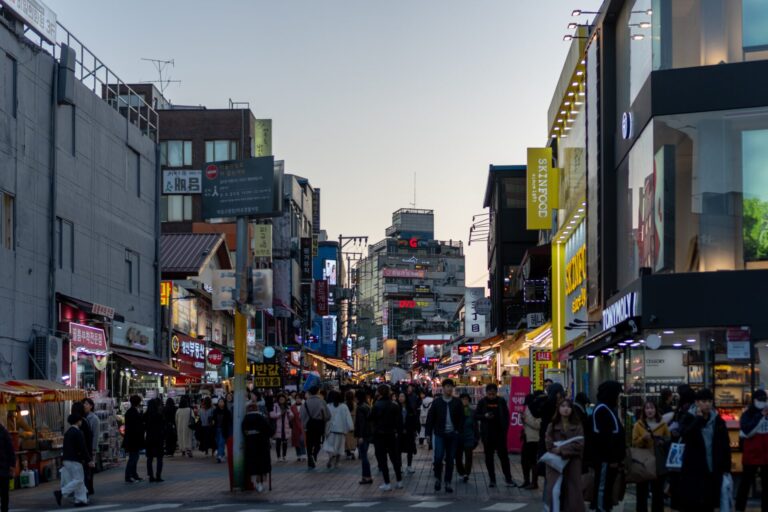
The Ultimate Guide to Hongdae, South Korea: Art, Food, Music, and Fashion
Exploring Hongdae is a must-do activity for any traveler visiting Seoul. This lively neighborhood, located in the Mapo district…
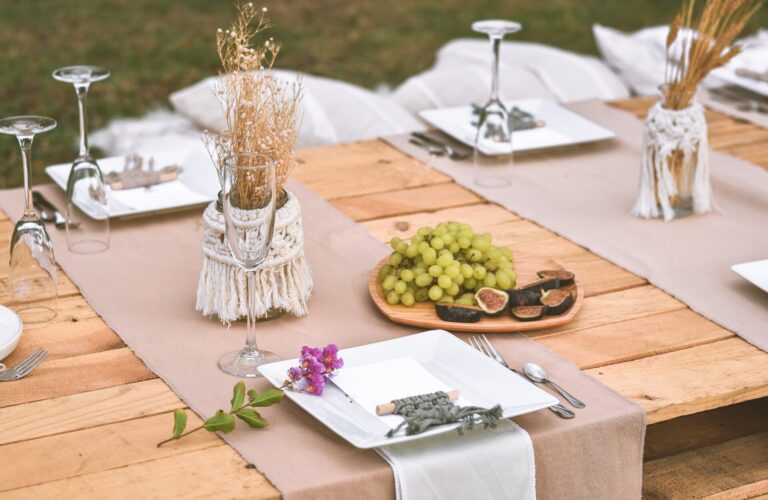
A Foodie’s Guide: The Best Places to eat in Istanbul, Turkey
Istanbul, located in Turkey, is a historic city that sits at the crossroads of Europe and Asia. As a…
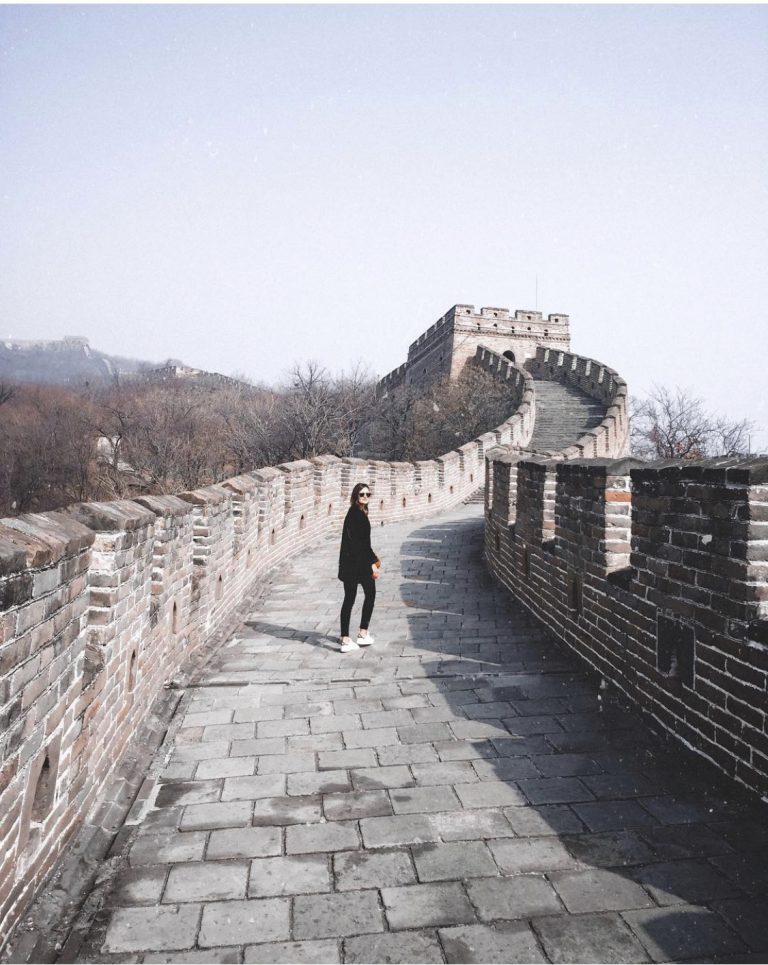
The Great Wall of China: an ancient defense architecture
The Great Wall of China is one of the greatest wonders in the world, with it’s interesting history and…
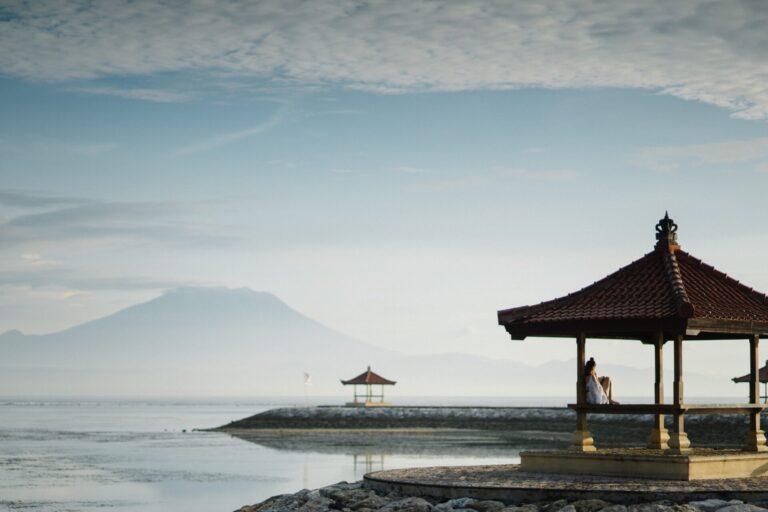
Uncovering the 11 Best Things to Do in Bali
Bali is a tropical paradise located in Indonesia, between Java and Lombok. In recent years, it emerged as a…
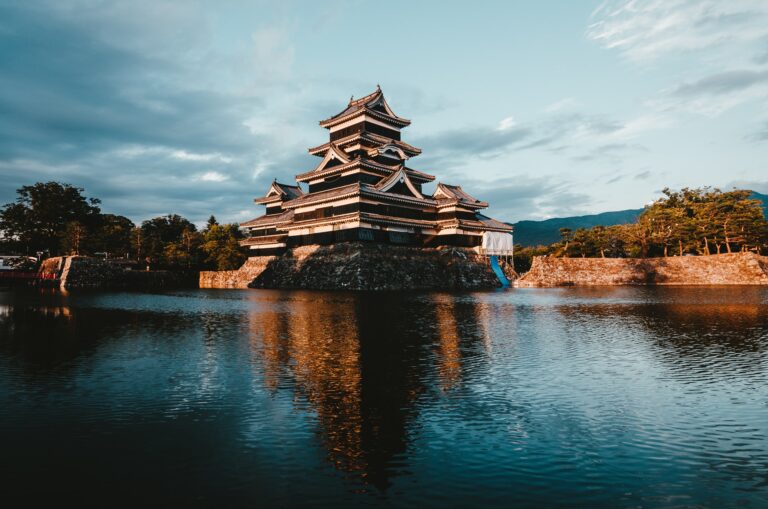
Matsumoto Castle, Japan’s oldest castle
Matsumoto Castle is the oldest Shiro in Japan and one of the most beautiful. Built in 1337, it was…
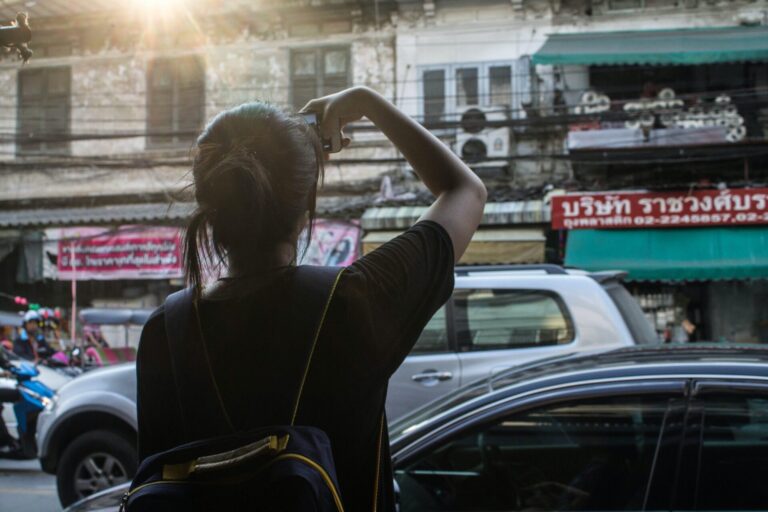
65 Thailand captions for Instagram (Puns, Quotes & Short Captions)
Discover the perfect Thailand captions for Instagram that will bring your travel photos to life with a touch of…
Automated page speed optimizations for fast site performance

Trip Planner

How to Plan the Perfect Thailand Itinerary
By: Author Taylor Lorenz
Posted on Last updated: 10/25/2023
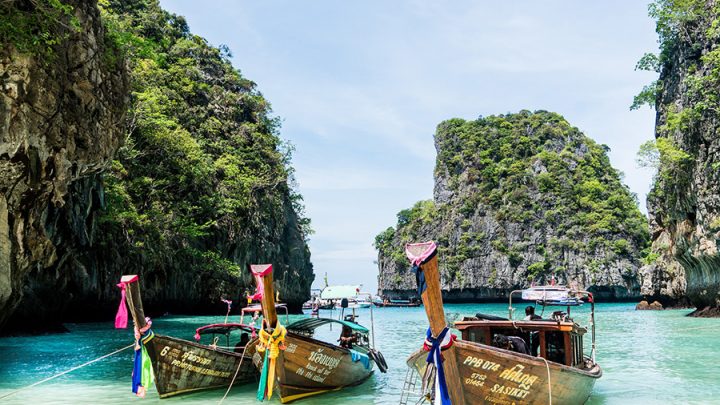
Let me tell you that Thailand is worth all of the type. I may be biased because Thailand is one of my favorite countries in the world.
Most people who visit will agree with me that it is an incredible country and planning a trip to Thailand is almost as fun as going on your Thailand trip (okay, maybe that’s just people who like to plan!).
The food is more than delicious, the people are as friendly as people say they are and the pictures you’ve seen online, well, they’re even better in person.
From the mountains in the north to the islands in the south and the mega-city of Bangkok in the middle, Thailand is a country full of diverse landscapes, every flavor of food and surprises around every corner. Plus there are so many things to do in Thailand .
Your dollar with stretch far, you will be continually entertained and you will gaze in amazement pretty much around every corner.
But enough of me talking about how great Thailand is, let me tell you how to plan a trip to Thailand and exactly what to do in Thailand.
Table of Contents
Thailand Fast Facts
Currency: Thai baht (฿) Languages: Thai Population: 69 million Religion: Buddhism (90% majority)
Thailand Itinerary
You really need to read through this whole article to pick your itinerary, I can’t make it for you because where you go in Thailand really depends on what you’re looking for. The islands are obviously more laid-back, some are quieter, some are known for their parties.
The north is totally different compared to central Thailand and then different spots in the north appeal to different travellers.
If there’s one place I think everyone should go to it’s Bangkok!
Recommended Thailand Tours
Skip planning your trip yourself with these top-rated tours around the country.
- Thailand Island Hopper in 14 days
- Backpacking Thailand in 15 days
- Northern Thailand Adventure in 14 days
Thailand Trip Itineraries by Length
These sample Thailand itineraries will give you a general idea of what you can cover in each time period that you have for travel to help you create the best Thailand vacation itinerary possible.
Bangkok is listed in all of them but if you’re solely doing islands it’s possible to fly direct to Phuket to jump off to the Andaman coast islands.
7 Day Itinerary
- 1-2 islands in the same region (ex. Phuket and Krabi)
10 Day Itinerary
- Chiang Mai or a second island
2 Week Itinerary
- Option 1: 3 islands (in the same region)
- Option 2: Chiang Mai, Pai, Chiang Rai
- Option 3: Chiang Mai and 2 islands (in the same region)
3 Week Itinerary
- 2-3 islands (in the same region)
Daily Breakdown of My Thailand Trip Itinerary
Bangkok: 2-3 days.
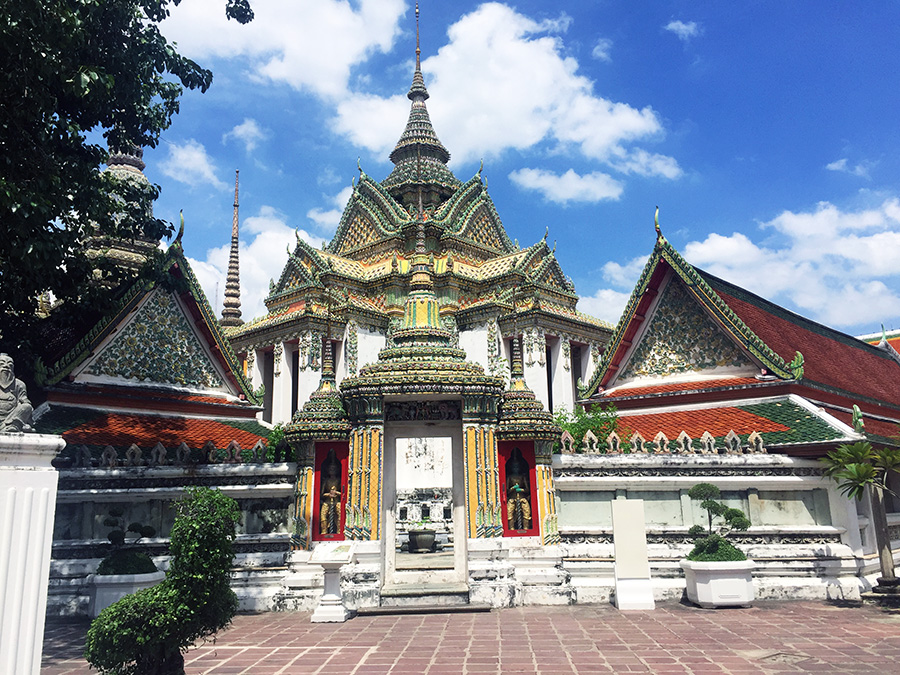
Without a doubt, you will fly into Bangkok and it’s a wonderful place to get yourself settled in Thailand. You’ll be thrown in head first, but not to worry, Bangkok is a world-class city and though many things will be different it is the perfect starting point.
DAY ONE: Many international flights land late at night so chances are you’ll get to your accommodation and pass out. Get a good rest and on your first day, you can tackle some of Bangkok’s best attractions.
Head over to the Grand Palace , the earlier the better as lines get long. From here you can tackle Wat Po which houses a giant reclining Buddha and Wat Arun. Spend the evening around Khao San Road, the famous party street where you can grab a bite to eat, get a message if you’re tired, shop or party the night away.
Pro Tip : Wat means temple in Thai, expect to see it a lot!
DAY TWO: Get ready to shop…if you’re in Bangkok on a weekend you can not miss Chatuchak Market where you can find just about everything from clothes, to souvenirs and food. If you’re in Bangkok on a weekday there are plenty of other markets to see and even more malls.
In the afternoon get yourself to a Muay Thai fight at one of the two stadiums in the city, Ratchadamnoen or Lumpini.
For the evening head up to one of many rooftop bars. The most famous are Sky Bar and Octave Rooftop Lounge & Bar.
DAY THREE: A trip to Thailand is not complete without seeing one of the floating markets. It’s a unique experience and lets you just chill out for the morning or afternoon!
All of the floating markets are outside the city so prepare for a day trip. My personal recommendation is the Damnoen Saduak Floating Market . It is the largest and one of the oldest in Bangkok. You’ll find food, animals and lots of other goodies!
- What to do in Bangkok
- 10 Best Hostels in Bangkok
- 10 Best Tours in Bangkok
Chiang Mai: 3-4 Days
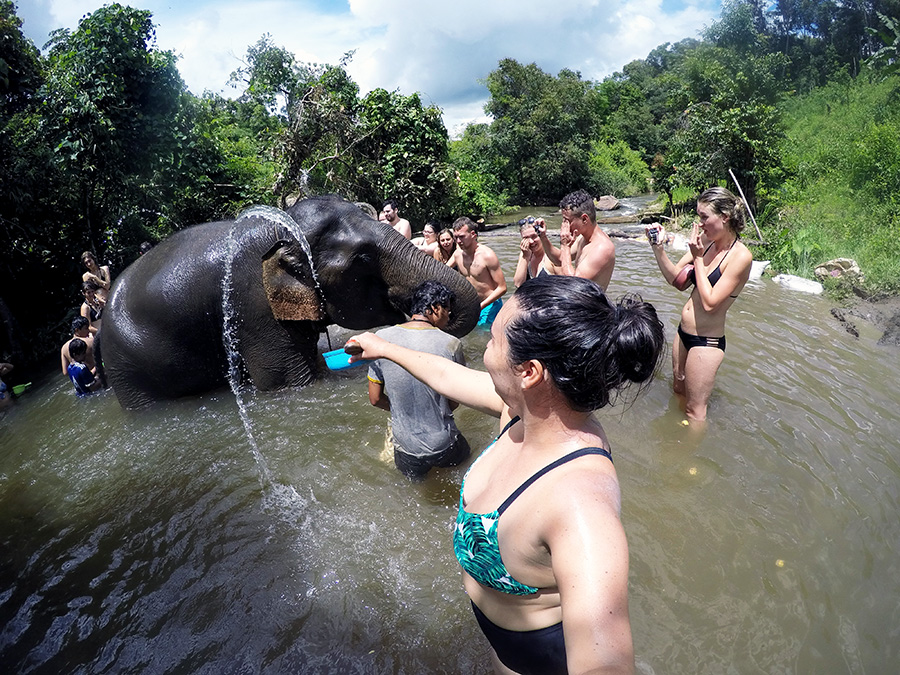
Chiang Mai is going to steal your heart. There’s a reason why so many expats live in this city. The Old City is filled with historic temples and trendy cafes. The markets are some of the best in Thailand, you’ll find some of the top Thai dishes here and nature is so close to the city.
DAY ONE: Get yourself aquainted with Chiang Mai. Rent a scooter and explore the Old City temple hopping . Head up to Wat Phra That Doi Suthep and get ready to climb the 300 stairs up. I promise it’s worth it.
Recover from your travels with a Thai massage or hangout at one of the local cafes. If you’re up for it make your way to Zoe in Yellow, one of the top clubs in Chiang Mai where you can find an abundance of other clubs and bars in the open air court yard.
DAY TWO: Recover from your hangover by cooking some of the tastiest Thai food you’ll ever try. One of the best things to do in Thailand is a cooking class in Chiang Mai .
Full and half day classes and market visits are available (I did the half day and didn’t think I’d be able to walk the rest of the day because there’s so much food!).
Spend your evening at Chiang Mai’s best market, the Night Bazaar where you can shop your heart out and eat local favourites from the abundance of street food stalls with live music.
DAY THREE: Get up close to elephants at Elephant Nature Park . Spend the day feeding, bathing and playing with these friendly giants.
For evening entertainment make sure you don’t miss one of Thailand’s best lady boy shows at the Chiang Mai Cabaret Show. It’s the exact show that was aired on Anthony Bourdain’s Parts Unknown episode from Chiang Mai!
Pro tip: Do not ride elephants! If a place supports riding elephants I would avoid going there. Elephant Nature Park is an ethical choice.
DAY FOUR: Time for a day trip! One option is to hire a scooter for the day and check out the Chiang Mai Grand Canyon where you can relax on floating bamboo rafts and jump from the cliff (don’t do it with your GoPro, I saw 5 people lose theirs!).
Another option is go zipling through the lush tropical forest. Or a third option is to Doi Inthanon National Park for some hiking.
READ MORE: 8 Bucket List Things to do in Chiang Mai and 10 Best Hostels in Chiang Mai
Pai: 2-3 Days
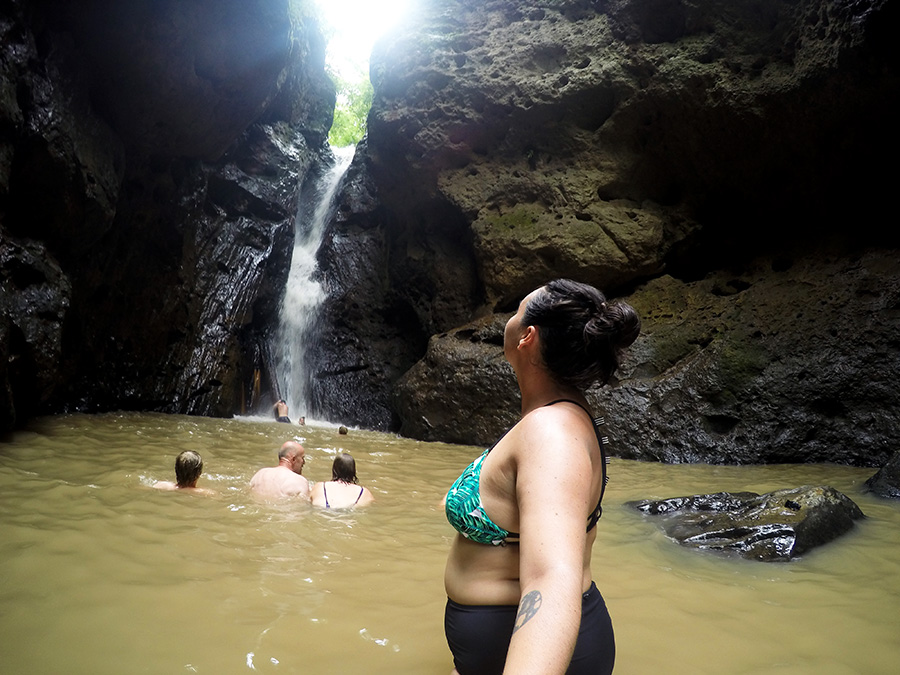
Pai is a little town in northern Thailand nestled in the mountains known for its hippie vibes. Think tie die clothing, handmade jewelry and small carts selling treats at the market. If you love nature and just want to hangout for a few days, Pai is the perfect place for you. But don’t worry there is still plenty to do.
DAY ONE: You’ll spend half of your day on a bus but don’t worry because you’ll be rewarded with plenty of awesome and hip little cafes where you can spend your afternoon relaxing.
Better yet, find a hammock! Or you can swing by the Pai Circus School. It’s a hostel so you can stay there . It has a pool and stunning views over the rolling green hills and yes you can actually learn some circus tricks!
DAY TWO: Get ready for a day packed with adventure! Rent yourself a scooter and head out to some of Pai’s best spots. Check out the top waterfalls, Pombok Waterfall and Mo Paeng Waterfalls.
Take a quick stop at the Land Crack where you can see the land literally split. Spend the afternoon hanging out at the Tha Pai Hot Springs and to cap off your perfect day watch sunset at Pai Canyon.
DAY THREE: Rent a scooter and take a day trip to Lod Cave. It’s 35km outside of Pai but it makes for a beautiful drive through up and down a mountain.
The cave itself has a river running through it and it’s incredible to see in person. Spend the night along Walking Street or in one of the laid-back bars that have cushions to relax on while you drink.
READ MORE: The Best Things to do in Pai
Chiang Rai: 1 Day
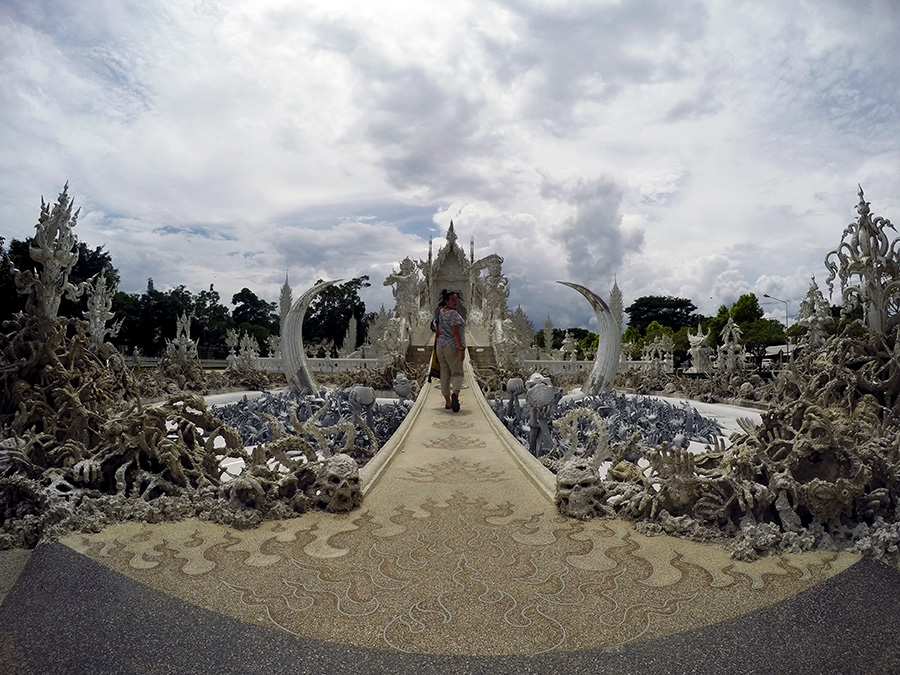
DAY ONE: This can be done as a day trip from Pai or Chiang Mai. Either way, it is a must-do. The famous White Temple is reason enough to go. It’s a bucket list item in Thailand and you won’t regret it even if it is one of the top tourist places in Thailand.
If you end up staying overnight head to the Chiang Rai night market for yummy food and a ton of shopping. This is also a great jumping off spot to get into Laos if you’re heading to more than just Thailand in Southeast Asia!
I recommend getting back to Bangkok and researching travel options to the islands from Bangkok as it will be cheapest.

Koh Tao: 3-4 Days
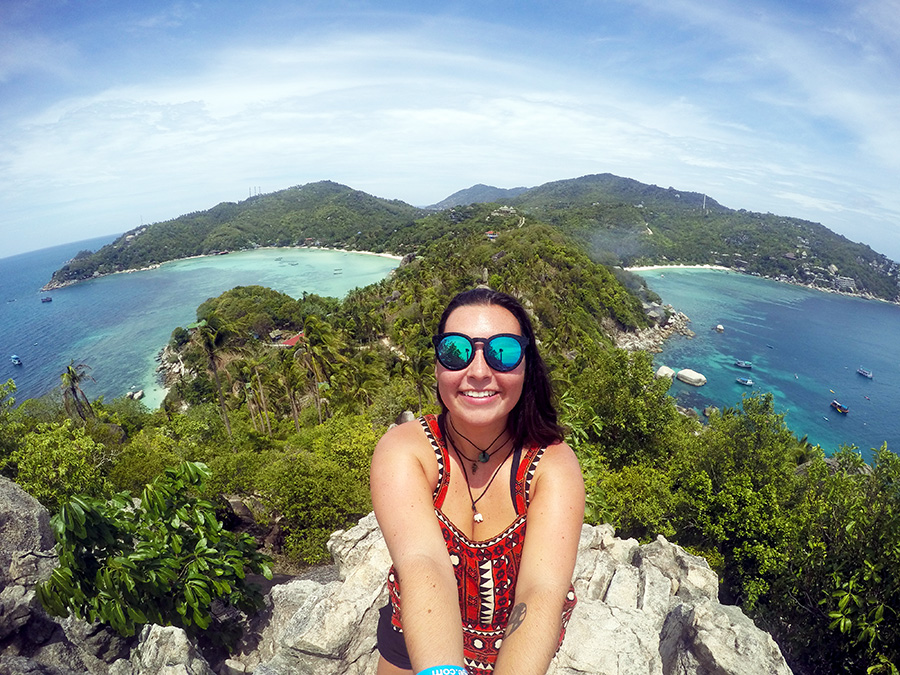
Welcome to paradise on Earth, Koh Tao is an incredibly stunning little island (and my personal favourite). Here is where you can find the cheapest diving in the world . It really has an island vibe where everyone is friendly, restaurants line the main beach and you can easily find a cove to yourself for the day.
DAY ONE: This will be a travel day. You will need to travel from Chiang Mai to the south, most likely with a layover in Bangkok. I recommend the splurge and taking a flight to Chumphon or Surat Thani where you will then need to get a bus and a ferry.
DAY TWO: You’re going to be tired from travel so get ready to kick back and relax on one of Koh Tao’s amazing beaches. Sairee Beach is the main beach where you can catch sunset, eat at one of the many restaurants and find all of the dive shops between souvenier shops.
For the afternoon jump on a boat taxi and head to Koh Nang Yuan, the only 3 islands in the world to be connected by sand. Only do this if it’s not included in a snorkelling tour!
DAY THREE: Spend a day diving or if you’re getting cerifited you’ll be diving for a few days! Or take a snorkelling day trip where you’ll get to see some of the beautiful coves around the island.
Some tours will even include visiting Koh Nang Yuan. This night you’ll need to get ready to party on one of Thailand’s best nights out. The Koh Tao Pub Crawl is famous and is a bucket list thing to do in Thailand!
DAY FOUR: Get exploring! Rent a scooter and head to my favourite spot in all of Thailand for an epic viewpoint. Freedom Beach viewpoint won’t disappoint and you’ll probably have the place to yourself as it isn’t yet one of those Thailand tourist places.
After taking in the views find your way to a little cove for an afternoon of chilling in the sun. Ask the locals for their favourite before you go, they know what’s best.
READ MORE: The Best Things to do in Koh Tao and 10 Best Koh Tao Hostels
Koh Phangan: 2-3 Days
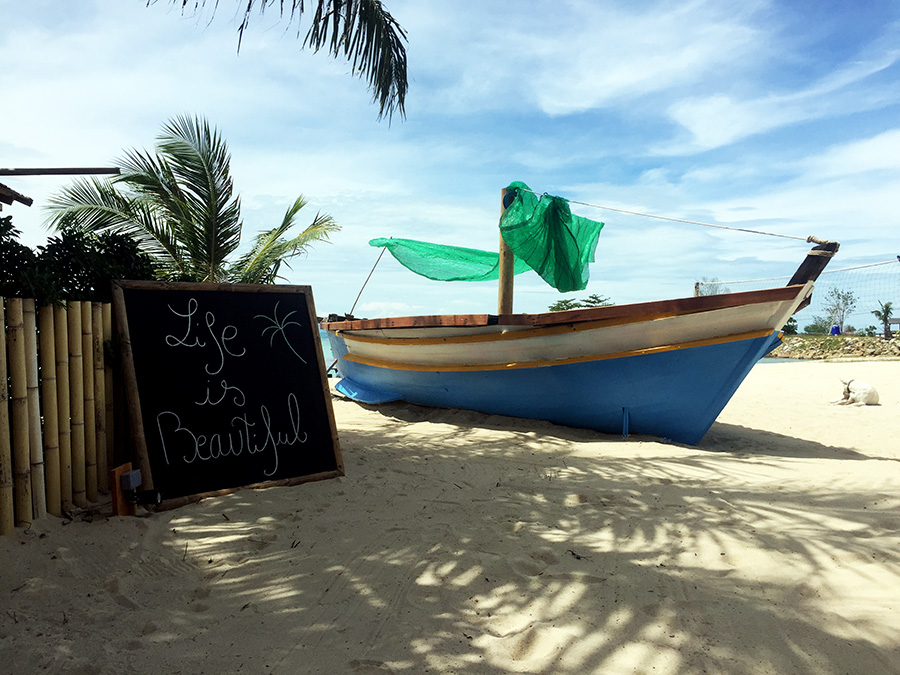
Koh Phangan is famous for its full moon party’s, it’s basically a right of passage in Thailand. But if you’re not there for the full moon don’t fret, there are still plenty of other parties going on and lots to do on the island!
DAY ONE: Go see some waterfalls! Rent a scooter and make your way around the island to some of the best waterfalls including Sramanora waterfalls, Phaeng, Thaan Prapaad, Thaan Sadet, Wangsai, Paradise and Thaan Prawes waterfalls.
Be forwarned that a lot of the waterfals dry up in the dry season. If that’s the case then head to the Infinity Beach Club Hostel and enjoy the luxurious side of island life without spending too much. Lastly, spend the evening partying at whatever party is on or at the Thong Sala night market.
DAY TWO: Spend the day beach hopping and see what Koh Phangan has to offer. Some of the best beaches are Bottle Beach, Haad Salad and Haad Yao (long beach). It is not recommended to try and find Bottle Beach by scooter and instead to go by boat. In the evening head to a party or check out the amazing sunset view from Amsterdam Bar.
DAY THREE: Your last day is up to you! Try some hiking, head to the Phangan Challenge , a waterpark obstacle course or go diving. Or just spend the day at the beach again if you’re hungover! This is a pretty chill day so if you’d rather get a head start on Koh Samui take the afternoon ferry over.
READ MORE: 11 Common Southeast Asia Travel Mistakes (And How to Avoid Them)
Koh Samui: 2-3 Days
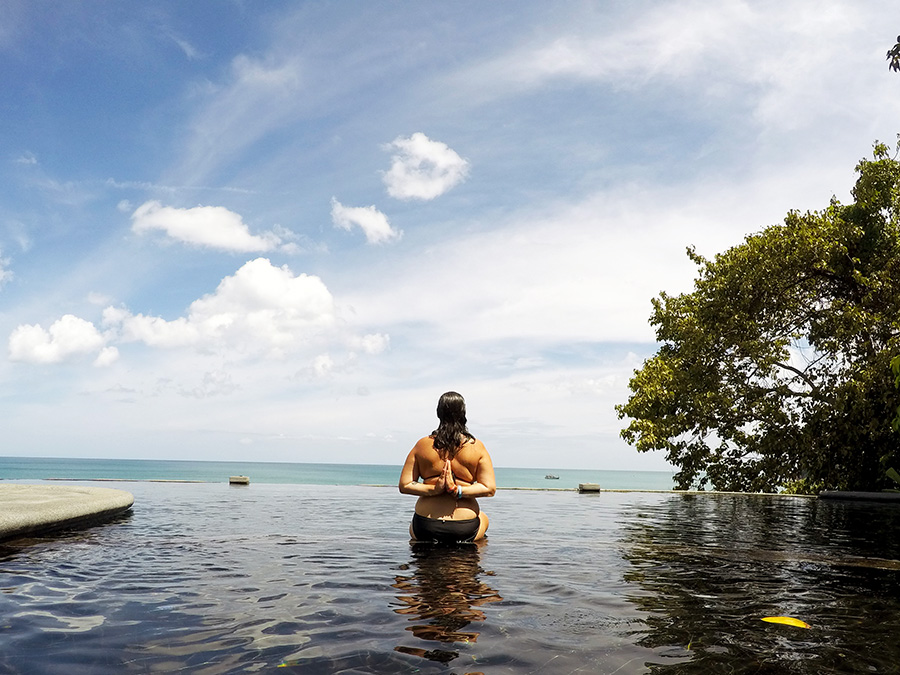
Koh Samui is the second largest island in Thailand and it can easily take 3-4 hours to get to some spots on the Thailand. It is popular for families and also has some interesting spots to see.
If yoga is your thing I highly recommend booking yourself into a yoga retreat. You can thank me later because I know it will be the best ending to your trip. My personal recommendation is Vikasa , it is like heaven.
READ MORE: The Ultimate Thailand Yoga Retreat (That’s Affordable)
DAY ONE: Get out and explore ! Koh Samui has so much to see. Some temples are Big Budda temple, Buddha footprints and Hin Lad Waterfall temple. I’d ask the staff at your accommodation for recommendations as to what is closest since the island is so large.
If you’re interested, stop by Hin Ta and Hin Yai Rocks. They’re special because they’re shaped like male and female genitalia. Don’t forget to try and fit in some beaches and waterfalls!
DAY TWO: Do a day tour to Ang Thong Marine Park where you’ll get to see a viewpoint over an emerald coloured lake and other islands. You’ll spend the day snorkelling and kayaking through caves.
Spend your last night at a Thai market where you can pick up some souveniers and binge on all the Thai foods. Some to checkout are Fisherman’s Village Walking Street, Chaweng Night Market and Lamai Night Plaza.
DAY THREE: Spend your morning lounging on the beach and the afternoon making your way to your next destination.
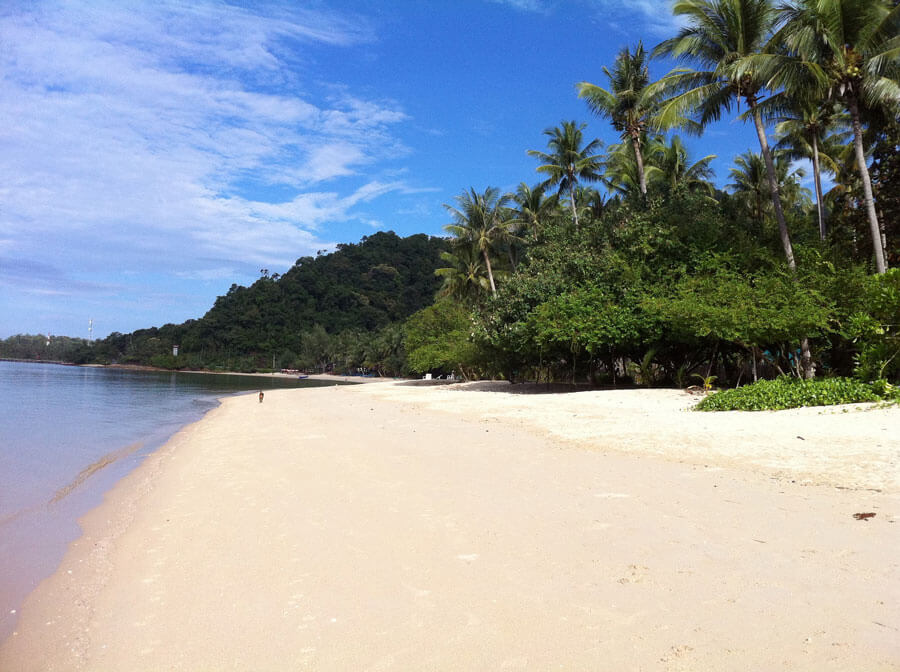
Koh Chang: 3-4 days
Koh Chang is an island that is more off the beaten path so a stay here is all about relaxation and nature, maybe a party or two and some hiking through the jungle.
DAY ONE: First things first you need to check out White Sand Beach (Haad Sai Khao) where all of the action is. In the afternoon make your way up Salak Phet, the highest mountain on the island for the best views and to spend some time in the jungle.
It is possible to get up by tuk-tuk if you’re not up for the difficult hike or you can hire a guide for the day to help you through the locals paths.
An easier hike that is free is to Kai Bae Waterfall that doesn’t require a guide.
DAY TWO: On day two it’s time to see the incredible marine life, colourful fish and coral reefs. Book yourself on a day tour. Most depart from Bang Bao. In the evening make your way to Lonely Beach for a night of partying on the beach, the main party area on the island.
DAY THREE: You deserve a relaxed day so spend the morning exploring the Bang Bao floating village and the afternoon relaxing in the area. You could also opt to head to the even more secluded Hat Sat Noi beach. Grab dinner at the White Sands Beach night market.
DAY FOUR: Day four you can make a combination of relaxing at one of the beaches mentioned above or doing another hike to a different waterfall. Or both!
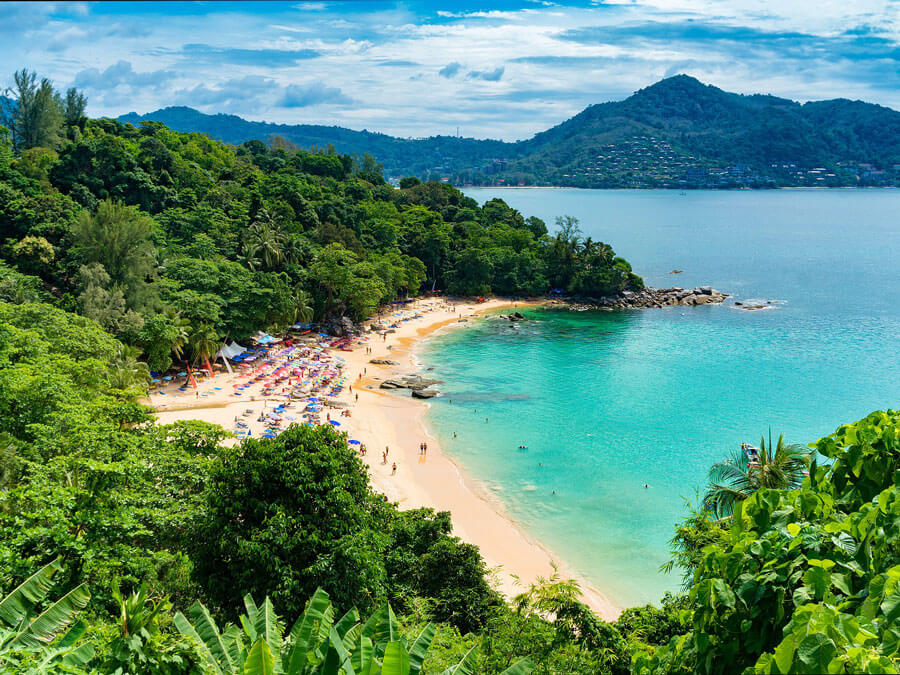
Phuket: 3-4 days
Phuket is ideal for any type of traveller as everything is offered here from epic parties to quiet beaches, shopping and lots of entertainment.
DAY ONE: Get around the island to see some of the top sites and culture. Visit the Big Buddha, see What Chalong, go inland to Phuket Town and see the night market.
DAY TWO: Time for a day trip! You have a few options: the Similan Islands which are known for their beauty, crystal clear waters and snorkelling, Phang Nha Bay (you’ll see James Bond Island here) which has limestone cliffs and tours usually have kayaking or take a tour of some of the Phi Phi Islands .
DAY THREE: Do a second of the day tours mentioned above or take time to relax on the beaches or at beach clubs. For the evening go to a show such as Phuket FantaSea or Simon Cabaret .
DAY FOUR: Take the morning to hike to a viewpoint before the heat becomes too much. Take the afternoon for more beach time or shopping.
READ MORE: The 10 Best Phuket Tours You Can’t Miss
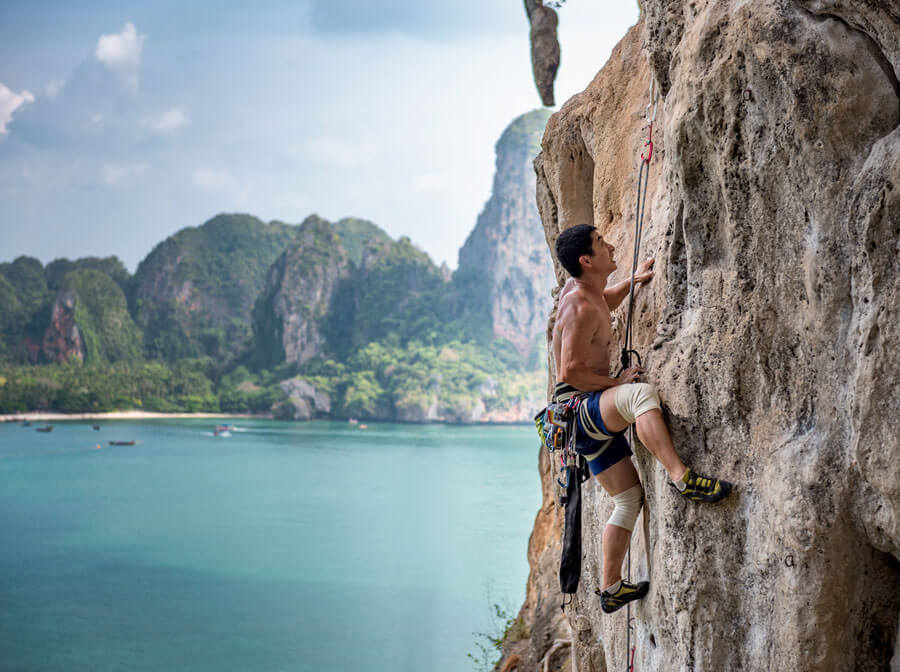
Krabi: 3-7 days
The more relaxed and less busy option to Phuket, Krabi has a ton of islands waiting for you to explore. You could easily spend a week in Krabi.
Since you can spend so long in Krabi I will just recommend a few places to visit such as Railay , Tonsai, Ao Thalane , Krabi Town/Ao Nang and many, many islands for island hopping!
READ MORE: 10 Gorgeous Things to do in Krabi
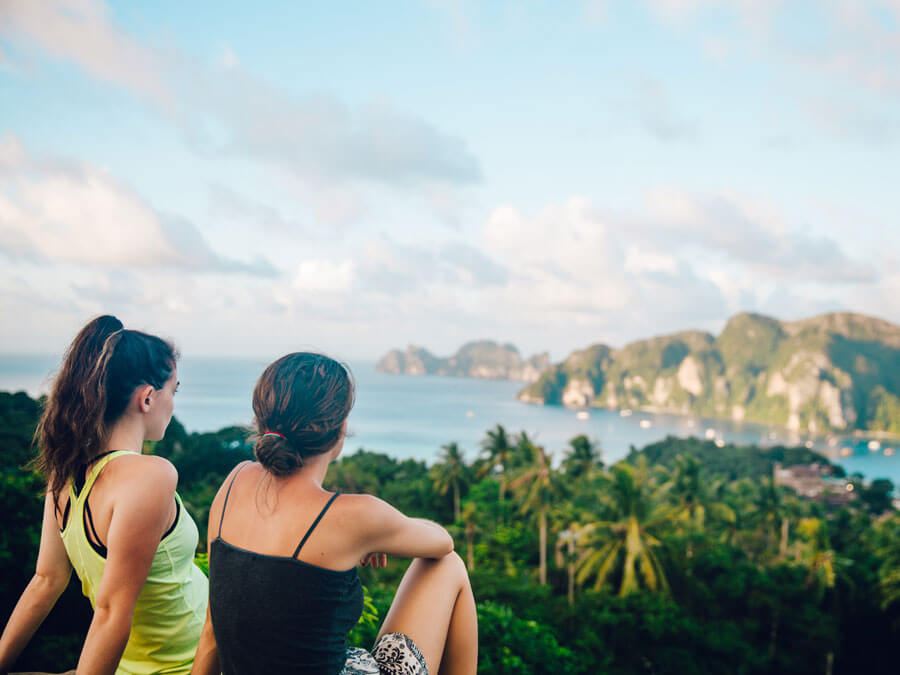
Koh Phi Phi: 1-3 days
Koh Phi Phi is very popular as a day trip from Krabi or Phuket but if you choose to spend longer on one of these quieter islands then here is what you can get up to.
DAY ONE: Visit Koh Phi Phi as a day trip from Krabi ( or Phuket ), an itinerary will be made for you by a tour company bringing you to lovely islands.
DAY TWO: Hike up to the Phi Phi viewpoint, take a cooking class and spend some time at Moo Dee Bay.
DAY THREE: Check out what’s underwater for a day of diving, go rock climbing, hop on shark spotting tour or visit Viking Cave.
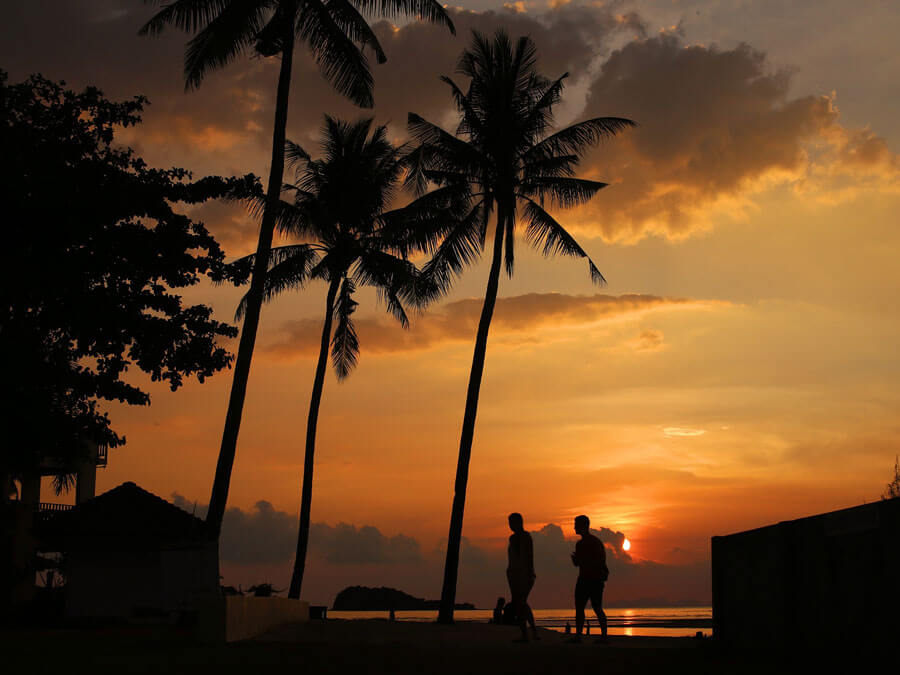
Koh Lanta: 3-5 days
Get ready to rent a scooter to explore this island and take trips to other islands to spot emerald green waters. Koh Lanta is more chilled but still packed with plenty to do.
DAY ONE: Go snorkelling at Koh Rok , often referred to as one of the best places to snorkel in Thailand.
DAY TWO: Spend the day exploring Lanta Old Town, take the time to walk some dogs (who wouldn’t want to do this?) and spend the evening at a chilled out bar.
DAY THREE: Explore the national park by motorbike. You’ll spend the day stopping by epic viewpoints. There are hiking trails and even a lighthouse to explore.
DAY FOUR: Time for another day tour, hop on the 4 islands tour to see even more beauty and amazing waters that you can jump into.
DAY FIVE: Check out the beaches, do some yoga, explore an area that you loved more or go diving.
Best Time to Visit Thailand
The good news is that Thailand can be visited year-round with favourable weather most of the year. The thing to keep in mind is that the weather varies depending on the region with three seasons: hot, cool and wet.
Generally, the best time of year to visit for weather is November-February but this is also when the country sees the most tourists so prices spike and accommodation needs to be booked further in advance.
Hot season in central Thailand (Bangkok) is February-June while Northern Thailand (Chiang Mai, Pai, Chiang Rai) experiences a shorter hot season from February-April. Central Thailand’s rainy season is June-October and Northern Thailand’s is May-September.
The islands have different weather at different times of the year depending on the coast with only two seasons: wet or dry. You will want to visit the islands in the Gulf of Thailand (Koh Tao, Koh Phangan, Koh Samui) in the dry season, January-August, and the islands on the Andaman Coast (Phuket, Krabi, Phi Phi) in their dry season, November to March.
So really the best time to visit is in November and February, the shoulder seasons to experience the best weather anywhere in Thailand and not have as many crowds.
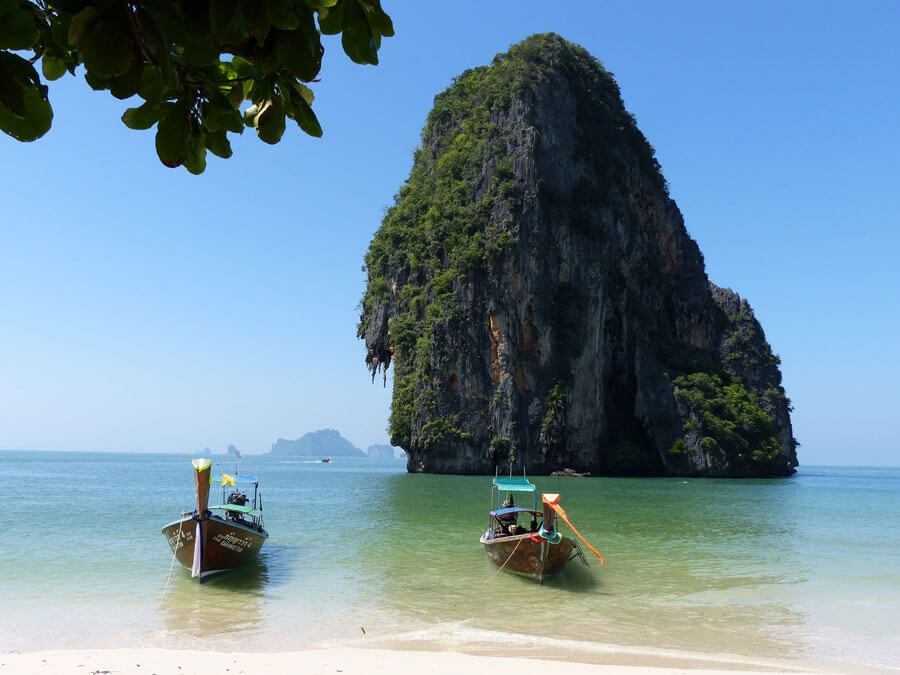
Thailand Trip Budget
Thailand is an excellent destination to visit for any budget. From budget to luxury accommodation, cheap day trips and tuk-tuk rides to high-end shuttles and resorts, you can easily adjust your budget to your lifestyle in Thailand.
Backpackers can get away with spending as low as $25USD (820 baht) including food, accommodation, alcohol and activities. Of course, this budget comes with some limitations.
On $25USD a day you can stay in hostels, eat street food, have nights out a couple of times a week and splurge on full-day tours every so often and take buses or budget trains as transport.
I recommend adding $10-15USD (330-500 baht) per day to your budget for each day you are spending on an island as the islands are the most pricey.
For a mid-range budget of $50USD (1,660 baht) a day will get you dorm rooms with A/C (sometimes even a private room!), will be able to eat out at restaurants, book more expensive activities and have the option to fly between Thailand destinations.
If you have a budget of $100USD (3,300 baht) a day or more than you’re living a life of luxury in Thailand. You can even find resorts for $1000USD a night in Thailand so it’s really up to you and how much you want to spoil yourself!
READ MORE: How to Create a Backpacking Southeast Asia Budget (Costs + Country Breakdowns)
How to Get to Thailand
Thailand is one of the easiest countries to get to in Southeast Asia and that’s mainly because Bangkok is a major hub for the region.
No matter if travelling from far or close you can find cheap flights to one of Thailand’s six international airports in Bangkok, Chiang Mai, Phuket, Koh Samui, Krabi and Hat Yai. I personally use Skyscanner to find the cheapest flight
If coming into Thailand by land you can look at bus options from Cambodia, Laos and Myanmar. If travelling into Thailand from Laos I recommend taking the 2 day boat journey down the Mekong from Luang Prabang.
READ MORE: Everything You Need to Know For the Laos Slow Boat
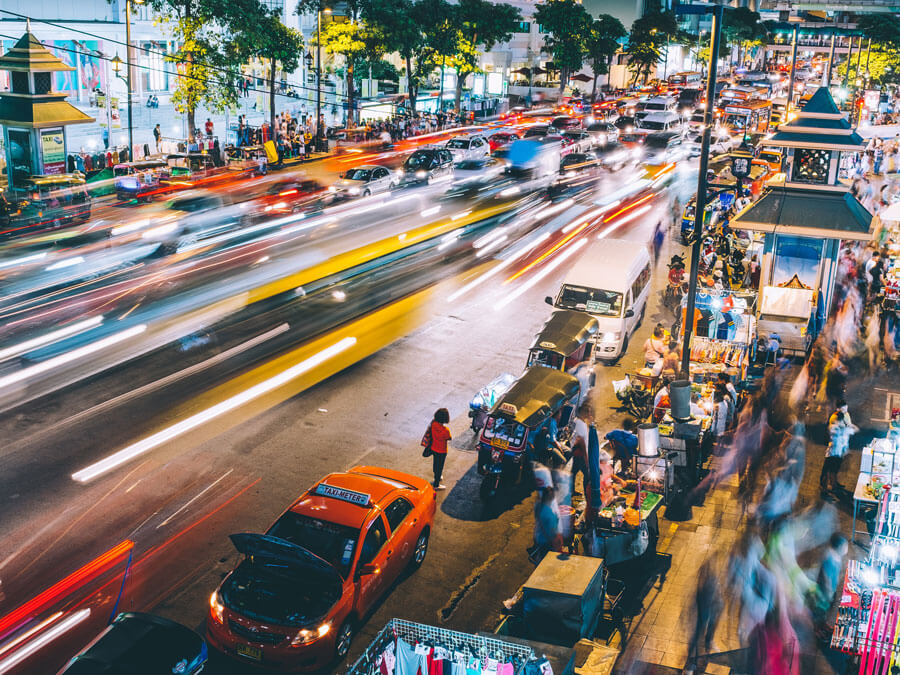
Getting Around Thailand
Thailand travel can not be explained in one easy answer because depending on where you’re travelling to and from will determine how you can get around Thailand.
Flights between major cities such as Bangkok, Chiang Mai and larger islands such as Phuket and Koh Samui are possible.
Otherwise most land travel in Thailand is via bus or trains. To get around the islands there is a good ferry schedule and even if you’re travelling to islands far apart you can book bus/train and ferries together to make it simple and easy for you to book.
Travel Insurance
READ MORE: 33 Tips for Backpacking Thailand That You Need to Know
Where to Go in Thailand
This is an overview of the places to visit in Thailand that you can add to your Thailand trip itinerary.
More detailed descriptions and the general vibe of each place is below which will help you pick out places for your Thailand travel plan.
Keep in mind that the best places to go to in Thailand are really determined on what you like as a traveller.
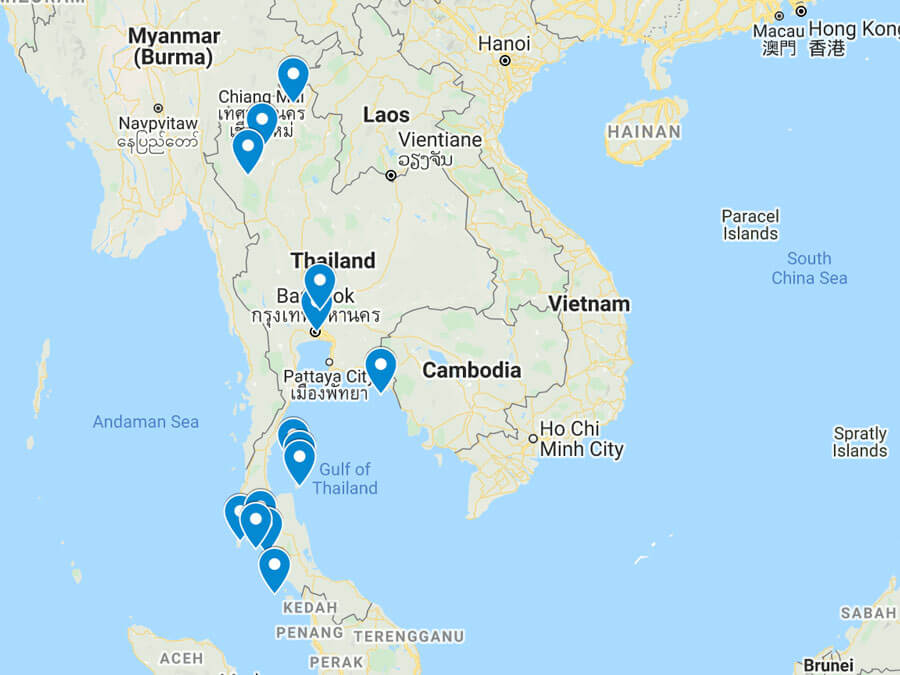
Central Thailand
Bangkok: Bangkok is the major hub of Thailand, the beating core of the country and it’s here that you will find the most hectic mix of markets, temples, busy streets and shopping malls. Bangkok is a very westernized city but not to the point that it doesn’t feel exotic.
Ayutthaya: Ayutthaya is just north of Bangkok but you could spend time here if history is your calling. Ayutthaya was once the capital of the Kingdom of Siam but today it is filled with ruins of the past after it was attacked by the Burmese.
Northern Thailand
Chiang Mai: Chiang Mai is another big city but nothing like Bangkok. While things are still hectic (it is Southeast Asia!), Chiang Mai is more relaxed. There is a large expat and digital nomad community here as its cheap, there are many night markets and delicious food.
Stop in Chiang Mai is you like being in the city but having nature right on your doorstep.
Pai: Pai is a bit of a hippie village in northern Thailand that was first visited by backpackers. Today, it’s still popular with backpackers but it’s definitely getting busier.
The hippie and relaxed vibes are still present though with bars playing chill music with cushions to sit on the ground, one main street with a market and quiet nature surrounding the town in the mountains.
Chiang Rai: Chiang Rai is most known for the famous white temple. There isn’t too much here other than a few museums but it’s great if you want a city that is quieter. It’s also a great jumping off point to Laos and Myanmar as it’s close to both borders.
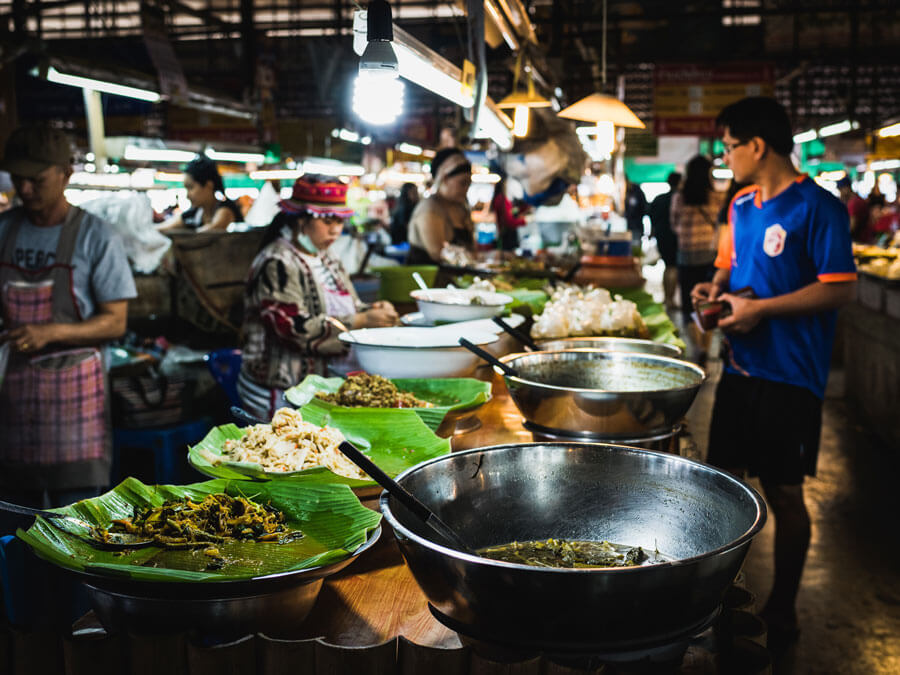
Gulf of Thailand Islands
Koh Tao: Koh Tao is a small island that is very relaxed. Here you’ll be able to party the night away and be close to all of the action or be in your own private cove in a bungalow. The joy of this island is that it appeals to many kinds of travellers.
It’s the perfect place to chill out and is famous for some of the cheapest diving courses in the world.
Koh Phangan: Koh Phangan is the island next to Koh Tao and is larger, known for Thailand’s famous full moon parties. Even if you’re not here for the full moon you will have another party to attend.
That being said, it is possible to get away from the party scene. Yoga retreats are available on the island.
Koh Samui: Koh Samui is next to Koh Phangan and is known as a family-friendly island. It’s Thailand second largest island so you will need transportation to get around. Large luxurious resorts, yoga retreats and beaches with palm trees dot around the island. A big draw to Koh Samui is that it has an airport so it’s easy to get to.
Koh Chang: Koh Chang is for those who want to get off the beaten path. It requires a 5-hour drive from Bangkok which many choose to make but not nearly as many visit Koh Chang as the other islands.
What people love about Koh Chang is the nature with lots of dense jungle, a national park and secluded Thailand beaches.
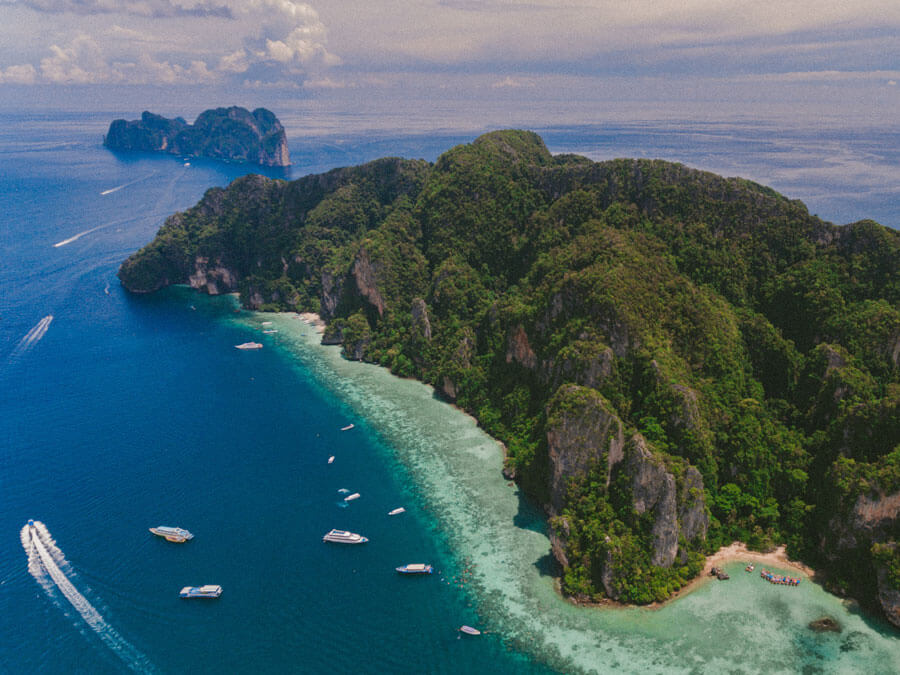
Andaman Coast Islands
Phuket: Phuket is Thailand’s largest and most commonly visited island. The biggest bonus on this island is that is has an airport and it has something for everyone. Backpackers, families and luxury travellers can find accommodation here. There’s plenty of space to find quiet beaches but you will have to travel further as it is a popular island to visit. Shopping, entertainment, culture and markets are here.
Krabi: Though not an island, many travellers opt to travel to Krabi instead of Phuket for fewer crowds in this province. The area is stunning with towering limestone cliffs, many islands off the coast, rainforests and the famous places such as Railay and Tonsai.
Phi Phi Islands: The Phi Phi Islands are among the most well-known islands in all of Thailand. They are part of Krabi Province, just south of Phuket and popular for day trips. Phi Phi Don is the most popular and it has no roads and a totally laid-back vibe.
Koh Lanta: Koh Lanta is too apart of the Krabi Province and is home to a group of 52 islands, Koh Lanta Lai being the most popular. It attracts visitors because it is less visited with pristine resorts and stunning natural scenery with jungle, coral reefs and crystal clear waters.
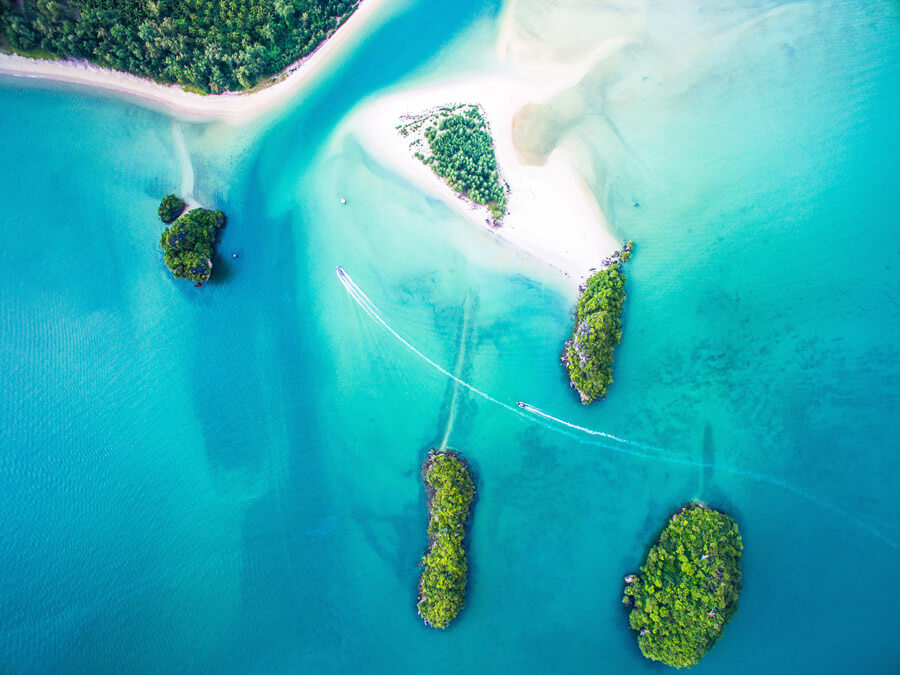
How Long to Spend in Thailand?
Generally, most people spend two weeks in Thailand which gives you the chance to see the central and northern Thailand along with one or two islands.
Travelling Thailand can be done in a week but I would recommend visiting only one or two islands, two cities or one city and one island.
Three weeks in Thailand would be ideal and you could for sure spend longer if you so desired (seriously I would stay that long for the food alone).
I hope you visit Thailand and enjoy it as much as I have and that this Thailand trip planner was helpful!
Must-Read Posts About Thailand Travel
- Thailand Trip Planning Resources
- Everything You Need to Know About Getting a Bamboo Tattoo
Disclaimer: This post may contain affiliate links which I earn a small commission from and are at no additional cost to you. See my disclosure policy for details. Thank you for supporting my small business!
Disclaimer: Taylor’s Tracks is a participant in the Amazon Services LLC Associates Program, an affiliate advertising program designed to provide a means for us to earn fees by linking to Amazon.Com and affiliated sites.

- Thailand Lantern Festival
- Indonesia(Bali)
- South Korea
- China (HK, Taiwan)
- Itinerary Ideas
- Asia Highlights Travel Reviews
- Thailand Travel Reviews
- Vietnam Travel Reviews
- Cambodia Travel Reviews
- Japan Travel Reviews
- Myanmar Travel Reviews
- China Travel Reviews

- How to Plan Your First Trip to Thailand — 7 Easy Steps
Thailand, the land of smiles, No. 1 for travel in Southeast Asia, is rich in culture and history, and filled with golden temples, radiant beaches, cuisine that is adored around the world, and friendly smiling people.
If you're looking for a way to rekindle your spark or to enjoy quality time with your kids, it's time to book a trip to the best vacation spots for couples or families in Thailand.
Don't know where to start? Read on for your handy guide to planning a trip to Thailand.
1. Choose Where to Go
2. decide how many days to stay.
- 3. Consider When to Travel
- 4. Consider Your Budget
- 5. Taking A Guided or Independent Tour?
- 6. Check Out Visa Policy
7. Getting to and Around Thailand
Thailand can be divided into three main regions for travelers:
- Northern Thailand for nature, elephants, and local villages;
- the Central Plains for Bangkok and city getaways, and
- Southern Thailand for great beaches.
With our knowledge of Thailand and feedback from our customers, we suggest you visit Bangkok, Chiang Mai, and one or two southern beaches for your first trip , extending it to Chiang Rai and/or a national park if you have the time.
1) Bangkok — A Blend of Modernity and Tradition
Bangkok is Thailand's capital and top gateway city. It is a city that offers a unique blend of modernity and tradition, making it a perfect destination for a family or couple's trip.
For those interested in learning more about Thailand's splendid architecture and temples , the Grand Palace, Wat Arun, and Wat Pho are must-see attractions.
Whether traveling as a family or a couple, a foodie tour to discover the sophisticated flavors of Bangkok's old district in Chinatown among other local cuisine will create a deliciously memorable experience.
Your trip would not be complete without a cruise along Bangkok's ancient canals and a visit to a floating market , which would give you an insight into a bygone way of life.
For a special experience and some private time, you could spend a night in a floating house at Kanchanaburi.
Get more ideas on planning a family trip to Thailand .
Discover real reviews of Highlights Travel Family 's best-rated service across trusted platforms.
2) Chiang Mai — Have a Close Encounter with Elephants
Chiang Mai, known as the 'Rose of the North', is a wonderful destination for a family or couple's trip, offering culture, history, relaxation, and excitement as well.
You could start your trip with a visit to the famous Wat Phra That Doi Suthep temple , which offers breathtaking views of the city and its surroundings. Then explore the Old City and its many street markets, such as the Night Bazaar.
Seeing elephants usually tops the list of things to do in Chiang Mai, whether with kids or your partner. Our half-day elephant tou r allows you to feed the elephants, walk with them, and play with them in the mud of a bathing pool.
If you visit in November, don't miss Chiang Mai's Yi Peng Lantern Festival , which is a romantic event that many couples dream of.
3) The Thai Islands: Phuket or Samui?
Your Thailand trip would not be complete without visiting at least one or two of its beautiful islands. The only question is which island should you choose from so many islands on both the west and east coasts of Thailand.
Phuket , along with Krabi and Koh Phi Phi, on the Andaman Sea (west coast) is loved by families for its various exciting activities and family-friendly hotel options .
While Ko Samui , along with Ko Pha-Ngan and Ko Tao, on the east coast is very popular with couples, due to their being home to luxury resorts and a quieter vibe .
If you are traveling in your summer vacation , Ko Samui is recommended for its sunny and dry weather, while Phuket is in its rainy season.
Can't make a decision yet? Suggested read: Phuket vs Koh Samui .
4) A National Park: Enjoy Jungle Hikes and Encounter Wildlife
To enrich your stay in Thailand, you should consider including a national park in your trip, such as Kao Yai or Khao Sok.
Located north of Phuket, Khao Sok National Park is home to some of the planet's oldest rainforests, with guided activities including jungle hikes and boat tours on scenic Cheow Lan Lake. Spending a night in a "tree house" (treetop lodge) could be an experience full of lifetime memories for your kids. For couples, there's the special and romantic experience of staying in a luxury tent surrounded by rainforest.
North of Bangkok, Khao Yai National Park makes an amazing day out.
If you're planning a trip to Southeast Asia, get some inspiration from our article: 2-Week Southeast Asia Itineraries for Couples, Families, and More .
We suggest you take at least a week for your first trip to see a spectrum of the highlights in the top three cities.
- 7–10 days: Bangkok (2–3 days), Chiang Mai (2–3 days), and a southern island like Phuket or Koh Samui (3–4 days). See the 9-day Thailand Family Tour for inspiration. Or get more sample itineraries: Top 5 Thailand Itineraries for 10 Days .
- 10-15 days: For a few more days, you can discover more of Thailand, like charming Chiang Rai and a national park, you will need a few more days. See our sample itineraries for inspiration: 12-Day Thailand Family Holiday , 12-Day Thailand Wonders Tour , and Best 3 Thailand Itineraries for 12 Days .
If you are lucky enough to have more time to tour Thailand, say 3, 4, or even 8 weeks then you have a lot more options! See our page the Ultimate Thailand Travel Itinerary Guide From 5 Days to 1 Month for more inspiration.
For 2–3 weeks , you can consider visiting Thailand with one or two other countries. Vietnam and Cambodia are 2 of the most popular choices. See the sample itineraries for inspiration:
- 11-Day Best of Thailand and Cambodia Tour
- 19-Day Highlights of Thailand, Cambodia, and Vietnam
- 21-Day Thailand and Vietnam Adventure Tour
Or you can check the sample itineraries of Thailand for 21 days >>>
You might want to contact a travel specialist to have your requirements, including the length of your holiday, designed into a fulfilling tour uniquely planned for you.
Extended reading: How Long to Spend in Southeast Asia (for First Timers)
3. Consider When to Travel to Thailand
In general, the best time to visit most of Thailand is during the dry season between November and March , when the temperatures are pleasant and there is very little rainfall.
According to our experience, if your travel dates are totally flexible, the ideal times are late October and early April , when the weather is still good and the crowds are fewer.
Christmas and New Year holidays are the busiest times . Hotels in popular cities/islands such as Bangkok and Phuket, and flights between popular destinations such as Chiang Mai - Phuket are likely to be sold out in advance. Be sure to plan ahead and make reservations at least 6 months in advance for better deals. Let us know your interests and requirements , and we'll take care of everything.
If you travel between August and September for the Phuket area or between October and December for the Koh Samui area, be prepared for showers. Fewer crowds and cheaper prices are its benefits. You can get more detailed tips on Best Times to Travel to Thailand .
Vietnam and Cambodia have similar climates to Thailand's . You may want to visit these three destinations in one trip. Check How to Plan a 3-Week Thailand, Cambodia, and Vietnam Tour
4. Consider Your Budget for a Thailand Trip
In general, Thailand is surprisingly affordable, and therefore it is particularly popular to visit. Airfares for your international flights are the largest upfront cost. On arrival in Thailand, your costs will vary greatly depending on the kind of traveler you want to be.
Thailand is a country that covers all budgets! From economy-class hotels to top-class resorts, street food to gourmet dinners for hundreds, and free beaches to expensive tours, Thailand has it all!
A private tour is an affordable luxury in Thailand! Private service is value for money there. Here are the prices for a private tour based on a group of 2 people during the peak season, for your reference:
- On a medium budget, touring Thailand typically costs around US$150–200 per day per person (including 4-star hotels, airfares within Thailand, attractions, guides, and transfers).
- For a higher budget of US$200–250 per day per person, more comfort can be enjoyed (including 5-star hotels, airfares within Thailand, attractions, guides, and transfers).
- For a family trip (2 adults plus 2–3 children) for 2 weeks in Thailand or in Southeast Asia, it normally costs US$10,000–15,000 per family excluding international flights from/to America or Europe.
Learn more about how much money you need when visiting Thailand. Check out some private Thailand tours and private Southeast tours to get a general idea of the cost.
5. Consider Traveling Independently or Taking a Guided Tour
While Thailand is easy enough to travel to independently for backpackers, it is at the same time very time-consuming (if not troublesome) to choose the most suitable hotels and arrange all the best activities for you, while seeking value for money and great service.
A private guided tour is a great way to maximize your time , eliminating any frustrating time spent on planning and traveling and ensuring a smoother, stress-free, and more enjoyable journey.
Work with our travel consultant to create an itinerary that fits your schedule and focuses on the places and experiences that matter most to you. Our consultants can not only help you sift through thousands of hotel and restaurant options to find the right one for you, whether it's for couples or families but also quickly provide alternative solutions in case of any changes .
Contact us to enjoy a quality service.
6. Check Out Thailand's Visa Policy
Nationals of many countries are exempt from needing a tourist visa to enter the Kingdom of Thailand, including the United States, Australia, Canada, and the United Kingdom. Most travelers can stay in Thailand without a visa for 30 days. We have more information on Thailand visas and visa requirements for other Asian countries .
Getting to Thailand
Flying from North America to Thailand usually involves a connecting flight. Popular transfer cities include Seoul (South Korea), Tokyo (Japan), Hong Kong, Taipei, and Dubai (United Arab Emirates).
Direct flights operate between Bangkok and the main cities in Europe and Oceania.
We are confident that our private tours are the most convenient option for your trip to Thailand. We can make an itinerary according to your flight times and arrange trouble-free private transport.
Connecting to Other SE Asian Countries
Bangkok is the top gateway city for travel to Southeast Asian countries. From there you will find frequent flights to other major cities in Vietnam, Cambodia, Myanmar, and Laos. This makes Thailand not only a popular destination stop but also a gateway to its neighboring SE Asian countries.
Booking a private tour with us, we will arrange your transportation within Southeast Asia. Our travel consultant will search the flight schedules, arrange the best connections, and book the air tickets.
You're in Good Hands with Asia Highlights
At Asia Highlights, we have created over 10,000+ big trips for insightful travelers, mostly for families and couples. We truly understand that every single big trip planned for our clients is not just for good holiday memories but also for joyful celebrations of life's milestones.
Read comments from our clients on TrustPilot , for example:
Daniel Ponce:
- "Everything went better that we'd expected! Our guides were local people who knew about the city, the people, and how to solve problems. They were really punctual and had the best attitude!
Rosangela Campos:
- "Traveling with Asia Highlights is a guaranteed wonderful experience in Asia! I highly recommend them!"
Get a wonderful Thailand vacation by sending us a message . Or check out our sample itineraries for inspiration:
- 12-Day Thailand Family Holiday
- 14-Day Classic Vietnam and Thailand Tour
- 14-day Thailand and Vietnam Family Tour
- 3-Week Best of Thailand, Cambodia, and Vietnam Tour for Couples
Further Reading
- 2 Weeks in Thailand – 3 Perfect Thailand Itineraries
- 2-Week Southeast Asia Itineraries for Couples, Families, and More
- How to Plan a 3-Week Southeast Asia Itinerary
Why Asia Highlights (10,000+ reviews & 98.8% 5-star rating)
- Save Your Time:
- Less research, more enjoyment!
- Real-time 1V1 expert planning
- Maximize Your Flexibility:
- Personal local guide and ride
- Explore at your own pace
- Celebrate Your Journeys:
- Specially-crafted family adventures
- Celebrate milestones with style!
- 12-Day Thailand Wonders Tour
- 9-Day Thailand Family Tour
- 15-Day Best of Thailand, Cambodia, and Vietnam Tour
- 3 Best Thailand Itineraries for 12 Days 2024
- How to Plan a Thailand and Vietnam Trip (2024/2025): 10 Days, 2, 3 Weeks Itineraries
- How to Visit Thailand, Cambodia, and Vietnam 2024: 10, 14 and 21-Day Itinerary Ideas
- Thailand Weather in January 2024: Travel Tips for First Visitors
- Thailand Weather in February 2024: Travel Tips for First Visitors
- Thailand Weather in March 2024: Temperature, Places to Visit
- Thailand Weather in April 2024: Travel Tips for First Visitors
- Thailand Weather in May 2024: Travel Tips for First Visitors
- What's the Weather Like in Thailand in June?
- Thailand Weather in July 2024: Travel Tips for First Visitors
- Thailand Weather in August 2024: Travel Tips for First Visitors
- Thailand Weather in September 2024: Travel Tips for First Visitors
- Thailand Weather in October 2024: Travel Tips for First Visitors
- Thailand Weather in November 2024: Travel Tips for First Visitors
- Thailand Weather in December 2024: Travel Tips for First Visitors
Get Inspired with Some Popular Itineraries
At Asia Highlights, we create your kind of journey — your dates, your destinations, at your pace. You can have any trip tailor made for your travel.
More Travel Ideas and Inspiration
Sign up to our newsletter.
Be the first to receive exciting updates, exclusive promotions, and valuable travel tips from our team of experts.
Why Asia Highlights
Where can we take you today.
- Middle East
- African Safari
- Travel Agents
- Loyalty Program
- Privacy Policy
Address: Building 6, Chuangyi Business Park, 70 Qilidian Road, Guilin, Guangxi, 541004, China
or with email
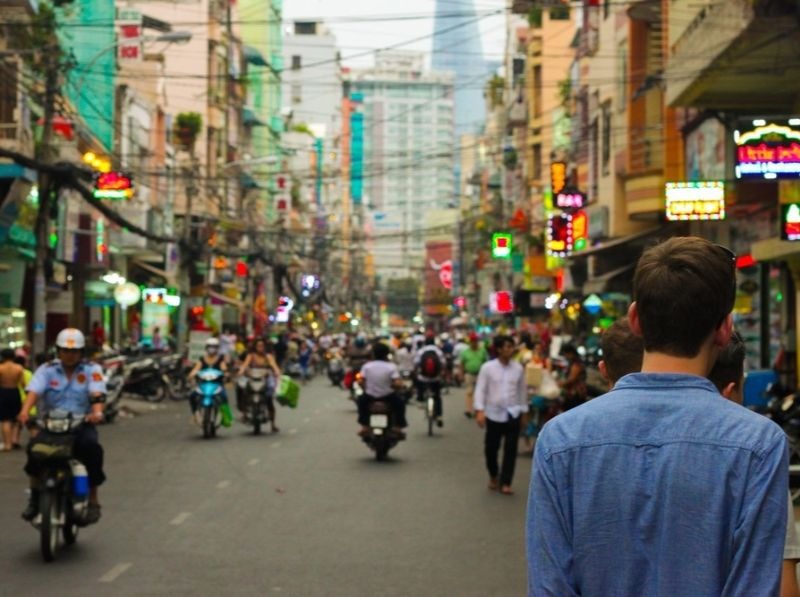
Thailand Travel FAQ
Updated September 19, 2023
Planning a trip to Thailand? Curious about what to pack and what to expect? We’re here to help. Here are the answers to the most frequently asked questions about Thailand travel, from the big concerns to the little curiosities.
If you really want to be informed on your trip, the best thing to do is to connect with a Thai local . They’ll plan you an authentic, immersive itinerary, answer any questions you have, and make sure you see the best of Thailand while you’re there.
Q: Is it safe to travel to Thailand?
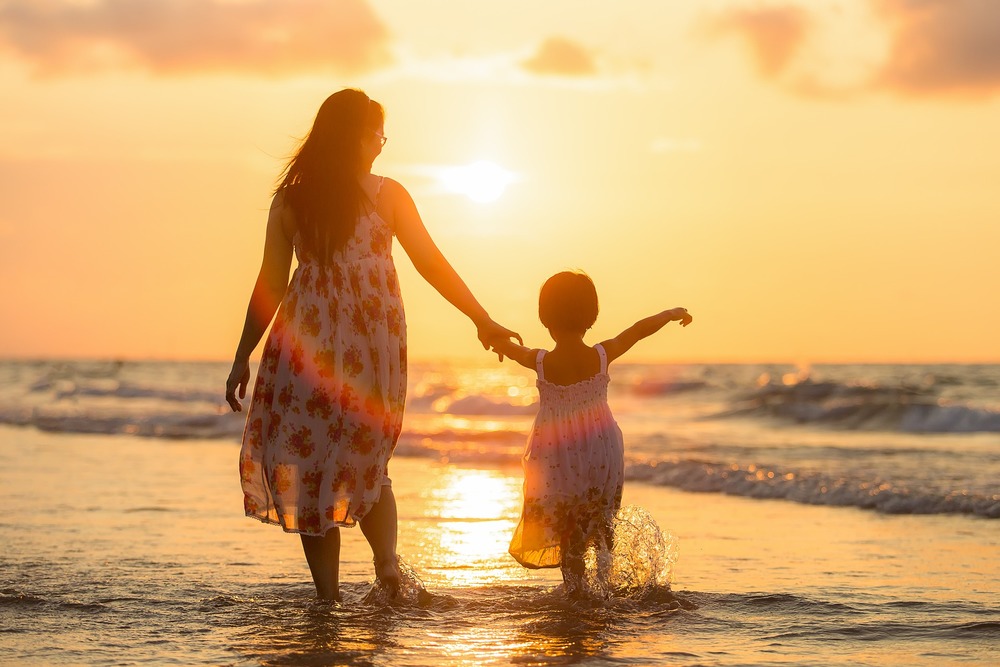
A: Yes! Tons of travelers visit Thailand every year, and all the popular destinations are perfectly safe. While there have been conflicts in the southern regions, they don’t have any effect on safety in the rest of the country.
If you’re visiting a major city, the biggest concerns are petty theft and public transportation scams— talk to a local to learn the best ways to keep your belongings and money secure.
Q: Do I need a visa to go to Thailand?
A: No—unless you plan on staying for a long time. According to the U.S. Embassy in Thailand , your passport will need to be valid for at least the next 6 months after you arrive, and you’ll need a blank page for an immigration stamp. That stamp is your visa to stay up to 30 days!
If you’re planning on staying more than 30 days in Thailand, you can apply for a tourist visa before you leave—you’ll need to do that in person at the Thai Embassy or Consulate in the U.S.
Q: Do I need any special vaccinations?
A: Yes. If you’re not already vaccinated for Hepatitis A and Typhoid , we recommend doing it before you leave—it’s just the safest way to make sure you don’t get seriously sick while you’re traveling.
If you’re traveling with babies or young kids, make sure they’ve had all their routine vaccinations before you go.
Q: Is it safe to drink the water in Thailand?
A: We don’t recommend drinking water straight out of the tap. It might carry bacteria that could give you some nasty food poisoning—no one wants to spend their whole trip in front of the toilet, right?
Boiled or purified drinking water is fine, or you can stick to bottled water just to be safe. In most restaurants the ice is made from purified water, but you can always ask just to be sure before you order a drink on the rocks.
Q: What about the food—how can I avoid getting sick?
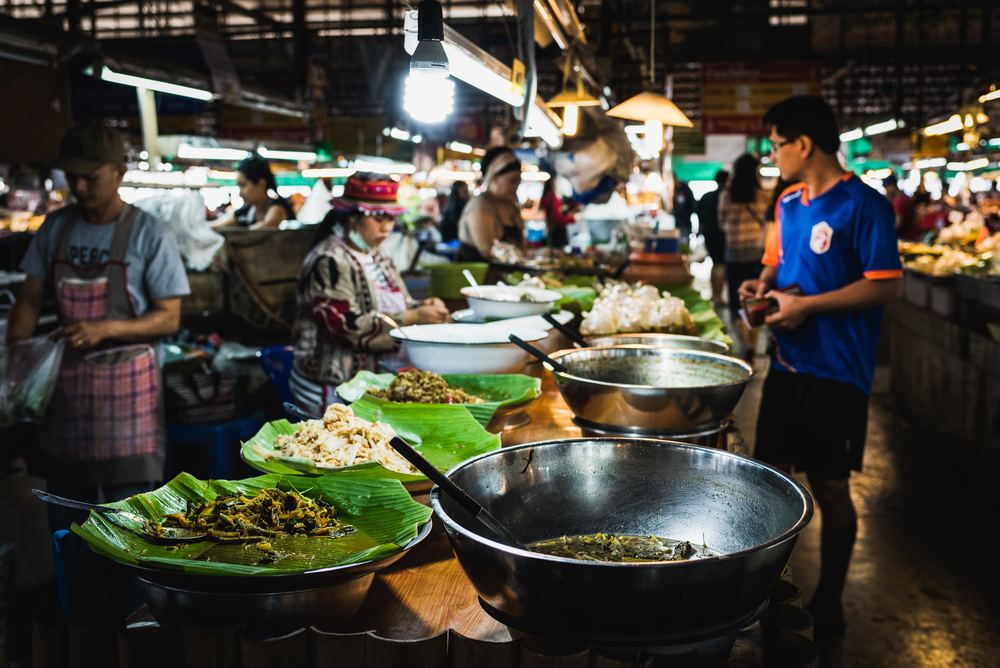
A: Any time you’re eating unfamiliar foods, there is a chance of getting food poisoning—that’s just a part of traveling. But there are some steps you can take to keep yourself healthy in Thailand, while still enjoying their amazing, diverse cuisine:
- If you’re eating street food, look for the busiest, most popular stalls.
- Never eat food that has been sitting out—it’s best if you can see it being made right in front of you.
- Avoid raw fish, fruits, and veggies unless you’re in an established restaurant with good reviews.
- Carry hand sanitizer and put it on before you eat—it might seem nerdy, but it really makes a difference.
If you’re worried about choosing the best places to eat, it can be really helpful to plan your trip with a local —they’ll know exactly where to go and what to avoid.
Q: Should I worry about mosquito bites?
A: Mosquitoes can be super annoying in Thailand, but fortunately, they aren’t very dangerous. There is a really low risk of malaria , and other mosquito-borne diseases like Dengue or Japanese Encephalitis are present, but not too common.
Still, you’ll definitely want to avoid getting bitten just to keep yourself safe. We recommend packing a heavy-duty bug spray (think lots of DEET) and wearing long sleeves and pants in the early morning and evening. There are more mosquitoes during the rainy season—June to October—so be prepared if you’re going to Thailand during those months.
Q: What’s the currency in Thailand?
A: Thailand uses the Thai baht. The equivalent of $1 USD is just over 30 baht.
You can pay with your credit or debit card in Thailand, but we’d recommend always having some cash on hand, especially if you’re going to buy food or souvenirs from a street vendor. You can exchange dollars for baht before you leave, or at the airport as soon as you arrive.
Q: What kind of adapter will I need for my electronics?
A: Thailand uses socket types A, C, F and O—those accommodate both American and European style plugs, plus one unique to Thailand. Because they use multiple types of sockets, we recommend getting a universal adapter for your phone or laptop charger. You’ll also need to buy a voltage converter —they use 220V electricity in Thailand (here in the US, we use 120V). You can get an adapter and voltage converter online or in most travel goods stores.
Q: Is there Uber in Thailand?
A: No. As of April 2018, there is no more Uber in Thailand . But there is a similar ridesharing app called Grab . It works pretty much the same way as Uber, and operates in Thailand’s main cities—it’s more expensive than taking a taxi, but it’s definitely safe and reliable.
Q: So, what’s the best way to get around?
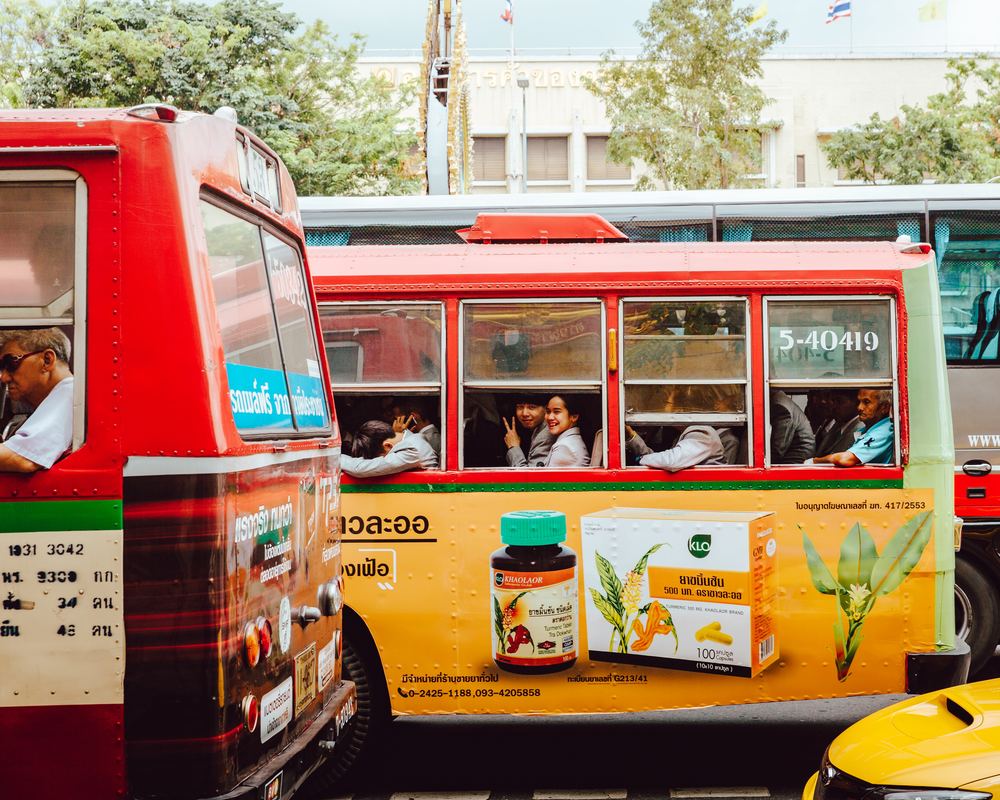
A: It depends on where you are and where you’re going! Thailand has tons of transportation options. If you’re traveling a long distance, like between cities or regions, we’d recommend booking a flight—there are plenty of cheap airlines , and it will save you travel time. You can also take a train, bus, or ferry (if you’re going from the mainland to an island, and vice versa).
For traveling within cities, you can always flag down a taxi or tuk tuk (a motorized three-wheeled cart), but you should be careful to make sure you’re not getting ripped off—the best way to do that is to track your route ahead of time and tell the driver which way you want to go, and to only get in taxis that use a meter. If you’re staying in Bangkok, we recommend traveling by the new skytrain to avoid the crazy traffic.
Pro tip : The best form of transportation will vary depending on where you are. Plan your trip with a local to be sure you’re making the best choice for your money and time.
Q: Speaking of taxis, what’s the tipping etiquette in Thailand?
A: Travelers in Thailand are expected to tip in most situations. Here’s a basic guide of tipping scenarios:
- Restaurants: at a sit-down restaurant, 10% of your bill is standard. You don’t need to tip a street vendor.
- Taxis: if you want to tip your taxi driver, just round up the fare to a convenient number.
- Grab: you should tip your Grab driver around 10 baht for a longer trip.
- Housekeeping: leaving 50 baht in the room after one night’s stay is standard. For a week-long stay, 100-150 baht.
- Tour Guide: some tour guides in Thailand work mainly for tips, so be generous. 150-300 baht is great.
Keep in mind that one Thai baht is only a tiny fraction of a dollar, so it really won’t hurt your wallet to tip over the standard. The better you tip, the better service you can expect in the future!
Q: Can I bargain while I’m shopping?
A: In some places, yes. Bargaining or haggling down the price of clothes, goods, and souvenirs is expected in many of Thailand’s street markets—especially markets that sell mainly to travelers.
But … haggling is actually not a part of Thai culture. When you’re at a restaurant, food stall, or local market, don’t try to argue over the price—that would be disrespectful. Haggling is only expected in touristy shopping areas.
Q: What should I pack?
A: Whatever you want—but keep it fairly modest. It can get really hot in Thailand, so you’ll definitely want to pack shorts and tees. Even tank tops and sundresses are fine, but avoid anything you wouldn’t wear into, say, a casual restaurant—that is, no bro-tanks or ripped shirts for the guys, and no low-cut tops or daisy dukes for the girls. Remember that you’re in another country, with another culture, and you don’t want to be offensive.
On that note, if you plan on visiting any of Thailand’s gorgeous temples , you definitely need to dress modestly—long sleeves, pants, or skirts past the knee.
Q: What can I do if there’s an emergency while I’m in Thailand?
A: If anything serious happens while you’re in Thailand (if you get really sick, lose your passport, experience a robbery, etc.), the best thing to do is to call the U.S. Embassy in Bangkok : 02-205-4000.
We hope this helped! Thailand is an amazing travel destination, and as long as you’re prepared, you’ll have a life-changing trip.
Have more questions about Thailand? Get in touch with a Thai local today—they’ll work with you to plan your whole trip, and be available 24/7 to answer your questions.
- Connect With a Local to Plan Your Trip
- Transportation in Thailand: A Guide
- Is Thailand Safe in 2024?
- The Best Places to Visit in Thailand
- Top Things to Do in Thailand in 2024
- Where to Stay in Thailand?
- Contact Us
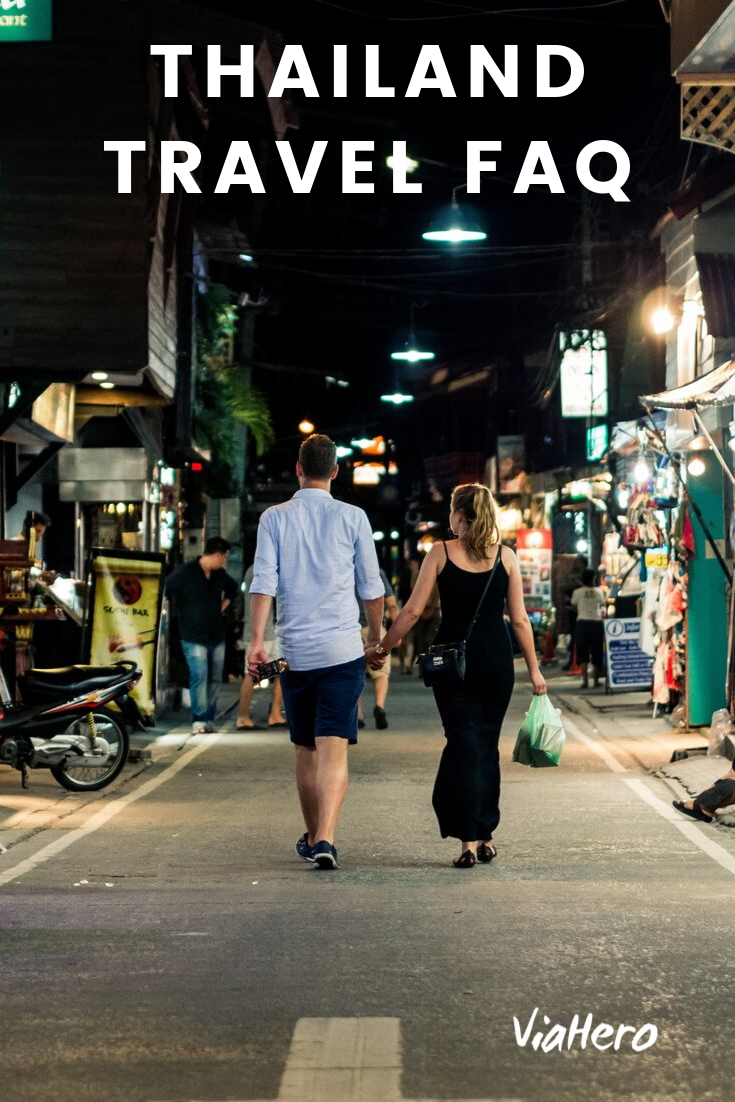
Leave a comment:

Select Account Type
Sign-up with
Almost there!
Find booking.
How should we contact you?
Thank you! We'll get back to you as soon as possible!
Click here to register and track your question!
If you would like to follow up with us:
+1 (855) 782-3006
Forgot your password?
Enter your email address below and we'll send you a reset link:

Southeast Asia Travel Guide
Last Updated: November 27, 2023

Backpackers have been traveling through Southeast Asia since the late 1960s and early 1970s, leaving a well-worn trail around the region.
Starting in beautiful Thailand, the trail makes its way to up-and-coming Laos, through Vietnam, and to the temples of Angkor Wat. It then winds back into Thailand, where people head south to party in the Thai islands before moving down to Malaysia and Singapore.
There are a few variations to the trail, but this is what it mostly covers.
I’ve been visiting this region since 2004 and spent years living in Thailand . I love backpacking Southeast Asia and have written extensively about it as I know it like the back of my hand.
It’s an especially great region for new travelers because it’s easy to travel around, it’s safe, and there are lots of other travelers you can meet. But it’s also perfect for veteran travelers too as there are tons of off-the-beaten-path destinations that the standard backpacker trail doesn’t cover.
In short, Southeast Asia has something for every traveler — and every budget.
This Southeast Asia travel guide will help you travel the region like a pro, ensuring you save money and make the most of your time in this fun, gorgeous, and lively corner of the world.
Table of Contents
- Things to See and Do
- Typical Costs
- Suggested Budget
- Money-Saving Tips
- Where to Stay
- How to Get Around
- How to Stay Safe
- Best Places to Book Your Trip
- Related Blogs on Southeast Asia
Click Here for Country Guides
Top 5 things to see and do in southeast asia.
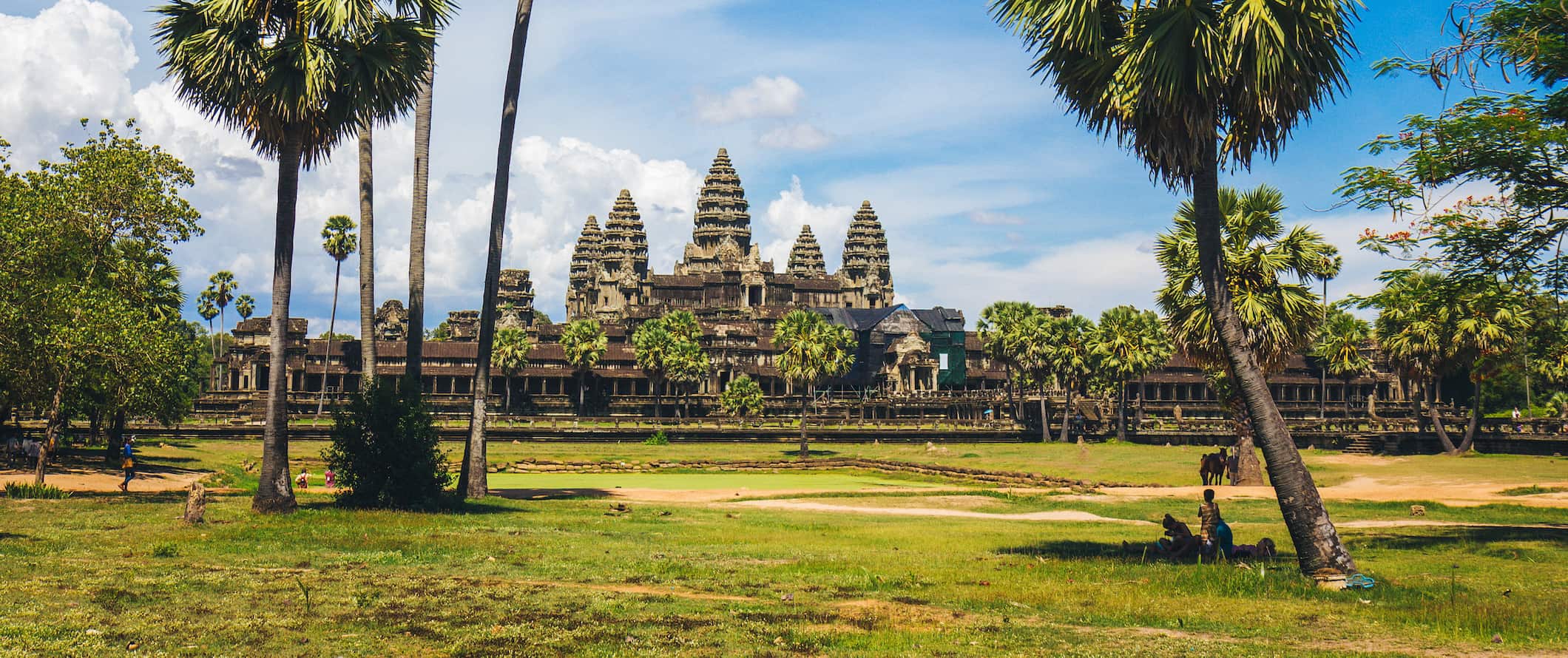
1. Admire Angkor Wat
One of the greatest human creations in history, the Angkor Wat temple complex is best explored over the course of a few days. The area is a UNESCO World Heritage Site created by the Khmer Empire and absolutely enormous. Temples to visit include Angkor Wat, Bayon Temple which has 216 gigantic stone face carvings, and Ta Prohm. I spent three days here and that simply wasn’t enough. A one-day pass is $37 USD, while a 1-week pass is $72 USD. If you’re here for multiple days, be sure to hire a driver and see some of the more out of the way ruins away from the main temple complex (and the crowds).
2. Explore Bangkok
Bangkok is the hub of travel activity in Southeast Asia. You can get anywhere you want from here. Though I hated it at first, the more I’ve spent time here the more I love it. Bangkok is like an onion whose many layers need to be peeled back. Some things not to miss include the spectacular Bangkok Grand Palace, Wat Pho, Chatuchak Market and Asiatique, and a canal trip on the Chao Phraya River. This is a city for foodies and wild nightlife.
3. Relax on some tropical islands
No visit to Southeast Asia would be complete without a visit to at least one of the thousands of tropical islands in the region. My top five include the Perhentian Islands (Malaysia), Rabbit Island (Cambodia), Ko Lanta (Thailand), and Boracay (Philippines). Lombok Island (Indonesia) has a chill vibe with unspoiled, perfect “desert island” beaches. There’s so many islands to visit. Be sure to add at least one to your trip. The country guides will have more information for you.
4. See Ha Long Bay
Sailing trips to this island-filled bay with stunning emerald waters, limestone formations, and marine life give you an appreciation for the natural beauty in Vietnam. Tours from Hanoi start at around $110 USD for two-day trips and increase from there. I love the colorful grottoes, hanging stalactites, and stalagmites of Surprise Cave (Sung Sot), Fairy Cave (Tien Ong), and Heaven Palace (Thien Cung). Make sure you go with a reputable company though as some of the cheaper boats are less than ideal. If you’d rather just visit for one day, day trips from Hanoi cost $55 USD.
5. Wander Kuala Lumpur
Other things to see and do in southeast asia, 1. go jungle trekking.
This region of the world is covered in amazing jungles with diverse wildlife, plentiful camping opportunities, and cool waterfalls. The best jungle treks are found in northern Thailand, Western Laos, and Malaysian Borneo (the latter are also the hardest and most intense). Some of my favorites include Danum Valley (Borneo) for its incredible wildlife; Ratanakiri (Cambodia) for its pristine wilderness and thousand-year-old trees; and Pu Luong Nature Reserve (Vietnam). Costs vary but jungle trekking generally costs $30-50 USD per day.
2. Attend the Full Moon Party
The biggest one-night party in the world welcomes up to 30,000 people with a party that stretches until dawn. Cover yourself in glow paint, grab a bucket of booze, and dance the night away with new friends on the island of Ko Phangan in Thailand. As the name would suggest, the party is on the night of the full moon. If you miss it, there’s always the half-moon party, quarter-moon party, and black-moon party. Really, every night is a party on Ko Phangan . Just avoid the flaming jump rope that occurs — I’ve seen people get burned badly!
3. Learn to dive
There are many great dive sites around the region for those interested in underwater exploration. You can learn to dive here at a fraction of what it would cost back home too. Some of the best places are Ko Tao (Thailand), Sipadan (Malaysia), as well as Gili Islands (Indonesia) and Coron, Palawan (The Philippines). A typical diving course is completed in three days. A PADI course typically runs $275 USD in Thailand, including three nights’ accommodation, though at smaller schools you can often negotiate down to $250 USD. Day trips for certified divers start at $165 USD. For information on Ko Tao, check out this blog post .
4. Eat street food in Singapore
Singapore is a foodie’s heaven. Try the hawker stalls of Singapore as well as Little India and Chinatown for some of the best and cheapest food in Asia. If you’re looking for a nice place to sit down and eat, eat at Singapore’s famed restaurants during lunch when restaurants offer discounts, making them a great deal. You’ll also find the most affordable Michelin-starred restaurants here (Tian Tian Hainanese Chicken Rice and Hawker Chan), offering world-class meals for just a couple of bucks!
5. Overload on temples
You can’t turn a corner without seeing a Buddhist temple in this part of the world. You’ll get temple overload at some point but visit as many as you can as each is unique to the country and region of the temple. There are so many places with high concentrations of ornate and beautiful temples. Check out Chiang Mai’s Wat Doi Suthep Temple and hike up the 300 steps to the golden Chedi that’s 600 years old!; Bagan’s Shwesandaw Pagoda from the 11th century with its stunning golden dome; Angkor Wat’s Ta Prohm is covered in iconic vines and enveloped in ancient jungle roots; Hue’s colorful Thien Mu Pagoda is perched atop a lush green embankment; Hoi An’s Quan Cong Temple with incredible Chinese architecture with hand-carved beauty and skill, and Luang Prabang’s Vat Xieng Thong with its golden, canopied roof. Most are free to enter, however, dress codes are enforced (you need to have your shoulders and legs covered).
6. Dive Sipadan
Located off Malaysian Borneo, Sipadan is one of the best dive sites in the world. If you have your dive certificate, make sure you venture out here. I absolutely love this area because it’s teeming with live turtles, diverse cave systems, sharks, dolphins, colorful coral, bright fish, and everything in between. Not a lot of people make it to this part of Malaysia, but it’s worth it to go the extra mile and make your way off the tourist trail a bit. Don’t miss Barracuda Point and The Drop-Off. Keep in mind that only 176 permits to dive at the island are issued each day, costing 140 MYR per person. The resorts on the neighboring islands each get a specific number of permits per day and require divers to stay with them for a few days. So you’ll need to stay at those resorts and dive into the surrounding areas before they can get you a Sipadan permit.
7. Fall in love with Bali
Bali is the most popular destination in Indonesia, and its famous Kuta beach is known for its wild parties and surfing ( though I think it’s overrated ). However, there is much more to Bali than just wild nights and sun-soaked days. If you’re a thrill seeker, hike up to the top of Mount Batur, an active volcano, for a breathtaking sunrise. Paragliding and white water rafting are also super popular here, as is surfing (it’s an affordable place to learn if you’ve never done it). There are also lots of hot springs to enjoy, the Ubud Monkey Forest (a popular temple and nature reserve home to hundreds of monkeys), and numerous places to scuba dive, including the Liberty wreck and Manta Point.
8. Take in Ho Chi Minh City
Frantic, chaotic, and crazy, Ho Chi Minh City in Vietnam is the embodiment of the controlled chaos that rules Southeast Asia. You can’t quite figure out how this teeming mass of people and cars work together, but it does. Highlights here include touring the tunnels used by the Viet Cong in the 1960s, taking in the view from the Saigon Skydeck, eating your way through the street food scene, and seeing the city’s numerous temples.
9. Admire the sunrise over an Indonesian Volcano
One of the most popular tourist attractions on Java is Mount Bromo and its National Park. Don’t miss out on getting a photo of the smoldering Bromo volcano as it lies surrounded by the almost lunar landscape of the Sea of Sand. Get up early to catch one of the most memorable sunrises of your life. If you’re there in mid-August, you’ll be just in time to see Upacara Kasada, the traditional Hindu ritual of the Tenggerese, a Javanese tribe of the region.
10. Hike in Khao Sok National Park
Located in southern Thailand, Khao Sok National Park is constantly rated as one of the best parks in Thailand, with incredible trekking, camping, limestone karsts, cooling rivers, and a glistening lake. Visit for semi-challenging hikes, tons of wildlife, walking paths, and breathtaking sunsets. Park entrance costs around $6 USD while full-day guided tours are $95 USD. I highly recommend spending at least one night here to get the full experience.
11. Visit Kampot
Most people come to Kampot to enjoy the scenic riverside views, as well as the rolling hills that surround the city. Since you can explore easily enough on foot or by bicycle, Kampot is a great place to slow down and relax. There’s not much to do here but have lazy days by the river, chill, and eat (don’t miss the famous Rusty Keyhole for BBQ!). Don’t miss the pepper farms, as this region of Cambodia is filled with pepper farms where you can learn about the history of the spice, see how it is grown, and pick up what is considered some of the finest pepper in the world. Tours are usually free.
12. Take a cooking class
Food from this region is as varied as the countries themselves and learning how to cook a few dishes is a great souvenir of your time here. Even if you don’t plan to cook back home, you can still spend a day making and eating scrumptious food. Most big cities have cooking schools offering classes of 2-6 hours, often including a trip to the local market beforehand to select ingredients. I absolutely love cooking classes and urge you to take one at least once. They are a fun experience!
13. Take a food tour
If you’d rather eat instead of cook, taking a food tour is a fun way to gain insight into the region’s amazing noodle dishes, fresh seafood, sweets, and street food while learning about the history and culture behind the cuisine. Most major cities in Southeast Asia offer food tours. These include tours around local markets, street stalls, and tours to locally-owned restaurants and cafes where you can sample the local cuisine and connect with a local chef. If you’re nervous about street food, this is a great way to try some in a controlled setting. Tours usually last 2-4 hours and include multiple stops and several different dishes, with prices costing $40-75 USD per person.
14. Visit an elephant sanctuary
While riding an elephant is on many a Southeast Asia bucket list, once you know how much the animals suffer from abuse in order to provide these rides, you might think twice about taking one. An even better way to interact with elephants is to volunteer at or visit the Elephant Nature Park near Chiang Mai in Thailand. It’s a phenomenal place, allowing you to give back to the community and these magnificent animals all at once. After coming here, you will understand why you should NEVER ride an elephant. A one-day visit costs $70 USD.
15. See The Killing Fields
A visit to Choeung Ek, also known as the Killing Fields, may not be the most cheerful way to spend an afternoon, but it makes for an educational and memorable experience. Over 3 million people were killed by Pol Pot’s regime, including countless women and children. I recommend getting a guide so you can really understand what you’re seeing as you explore the area. Also, this horrific tragedy took place less than 50 years ago and is still very present so please be respectful as a visitor. The site is located 10 miles from Phnom Penh. Half-day guided tours start at $66 USD.
16. Swim with Whale Sharks in Donsol
If you’re in the Philippines, check out the Donsol Whale Shark Interactive Ecosystem Project because there are not many experiences quite as adrenaline-inducing as swimming with a whale shark for the first time in crystal waters. These incredible creatures are around 45 feet (14 meters) long and yet incredibly gentle and curious. I loved floating at the surface being able to look below and see them slowly swim below me. Get some people together and rent a boat for a half day, explore the area, and go ‘shark-seeing’ for a good cause.
For a ton more information, visit my country specific travel guides for more detailed information on each place:
- Cambodia Travel Guide
- Indonesia Travel Guide
- Laos Travel Guide
- Malaysia Travel Guide
- Singapore Travel Guide
- Thailand Travel Guide
- Vietnam Travel Guide
Southeast Asia Travel Costs
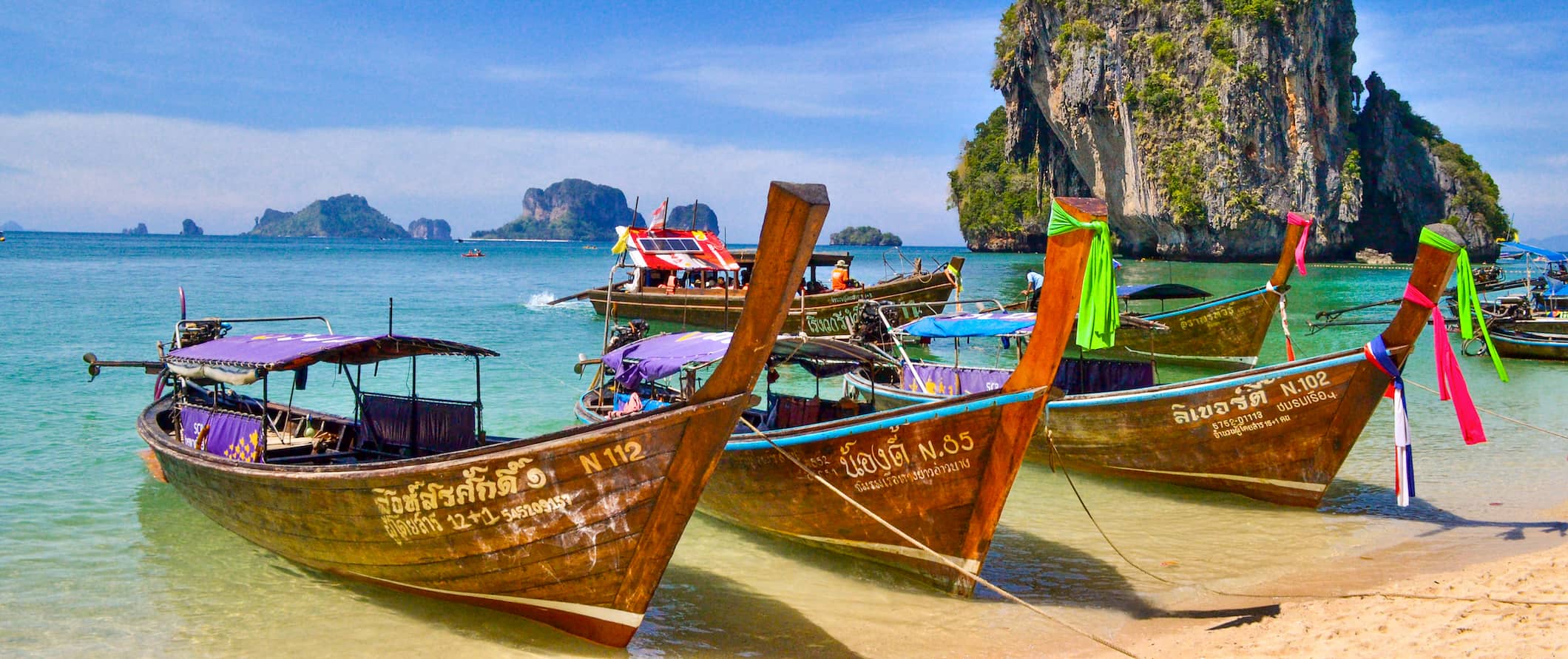
Accommodation – Accommodation in Southeast Asia is really cheap, making it the perfect place to travel if you are on a budget. Hostels are plentiful, as are budget guesthouses and hotels. It’s also very cheap to splash out here if you’re in need of some luxury.
Generally, you can find hostel dorm rooms for as little as $6-8 USD in Cambodia and $3-6 USD in Laos. In Thailand, 4-6-bed dorm rooms are $8-12 USD, while in Vietnam you can expect to pay $5-7 USD. In Indonesia, prices range between $5-10 USD for a 4-6-bed dorm room. Expect to pay at least $15-20 per night for a private room with air conditioning. Free Wi-Fi is standard in most hostels, free breakfast is common, and many hostels even have pools. In more remote areas, hot water isn’t common so make sure to check in advance if that’s an issue for you.
Simple guesthouses or bungalows throughout Southeast Asia generally cost $12-20 USD per night for a basic room with a fan (sometimes air conditioning) and hot water. If you want something nicer that includes a more comfortable bed and a TV, expect to pay $25-35 USD per night.
For backpackers, budgeting around $10 USD per night for accommodation is pretty safe no matter where you go in Southeast Asia. If you’re looking for a higher-end hotel room with more amenities, expect to pay $20-50 USD per night for a room. Anything over that is luxury territory.
Camping is available in certain areas, usually for just a few dollars per night for a basic tent plot without electricity. However, this is about the same price as hostels so it’s not really any cheaper.
Food – While each country’s cuisine varies, overall, Southeast Asian food is aromatic, spicy, and flavorful. Typical spices and herbs include garlic, basil, galangal, cilantro, lemongrass, kaffir lime leaves, chilies, and fish sauce. No matter what region you’re in, you can expect to find a variety of curries, salads, soups, noodle dishes, and stir-fries.
Rice and noodles are central to Southeast Asian food, while the meat is usually pork, chicken, fish, or seafood, which is everywhere on the islands and coastal areas.
While traveling Southeast Asia, street food is the most popular food and cheapest option. On average, these meals cost $1-5 USD. You find these stalls throughout this region lining most streets and every market. They are ubiquitous in the region. In Singapore, street food (from “hawker stands” as they’re known there) costs around $4-5 USD for a meal. Even if you go into small local restaurants, the price doesn’t increase that much.
Food that costs $2 USD at a street stall generally only costs $4-6 USD at a local restaurant. If you went into a restaurant in Thailand, you’d pay around $3-4 USD for a pad Thai that would have cost $1-2 USD on the street.
In Cambodia, street food is around $1-2 USD, while restaurants charge around $3-5 USD for a dish like amok (a coconut milk dish) or luc lac (pepper gravy beef).
Western meals, including burgers, pizza, and sandwiches usually cost around $7-10 USD. But these generally aren’t that great. If you want something that actually tastes as it does back home, expect to spend at least $10-12 USD for your meal.
While cheap, alcohol can take a bite out of your budget if you’re not careful. Those $1-2 USD beers add up! Wine and cocktails are more expensive, generally around $3-5 USD. A cappuccino is typically around $2 USD. Bottled water is plentiful and costs less than $1 USD.
There’s a growing cutting-edge foodie scene in the region and, if you want to splurge, you can do so on some really good meals. Big cities like Bangkok, KL, and Singapore, all have world-class Michelin star restaurants as well some incredible fusion restaurants.
Since dining out is so cheap in the region, there’s no point in grocery shopping unless you’re looking to get some pre-made salads or fruits. Additionally, a general lack of kitchens in most hostels and hotels makes it difficult to cook even if you wanted to. If you do purchase your own groceries, expect to spend around $25 USD per week for basic groceries like local produce, rice, and some meat (while avoiding expensive imported items like cheese and wine).
Backpacking Southeast Asia Suggested Budgets
On a backpacker budget of $45 USD per day, you can stay in hostel dorms, eat out at local markets and street stalls, limit your drinking, do mostly free activities, minimize paid activities, and use public transportation to get around. You’re not going to be able to splash out but you’ll be able to live the typical backpacker experience without really stressing over expenses.
On a mid-range budget of $85 USD per day, you can stay in budget hotels or private hostel rooms, eat more restaurant meals, do more paid activities like cooking classes, take some taxis, and enjoy a few more drinks. You won’t live large, but you won’t be missing out either.
On an upscale budget of $150 USD or more per day, you can stay in nicer hotels with more amenities, eat out as much as you want, do more paid tours including private tours, hire a driver, fly between destinations, and basically do whatever you want. The sky is the limit with this kind of budget!
You can use the chart below to get some idea of how much you need to budget daily, depending on your travel style. Keep in mind these are daily averages — some days you’ll spend more, some days you’ll spend less (you might spend less every day). We just want to give you a general idea of how to make your budget. Prices are in USD.
Southeast Asia Travel Guide: Money-Saving Tips
Backpacking Southeast Asia is cheap. There’s little opportunity to spend a lot of money since everything is already so inexpensive unless you intentionally are trying to splash out on fancy meals and high end hotels. The two reasons why most travelers end up overspending is that they eat a lot of Western food and drink way too much. If you want to save money while traveling in this part of the world, cut down on your drinking and skip the Western food. While country guides have more specific ways to save money, here are some general ways to save money in Southeast Asia:
- Stay with a local – Accommodation is cheap in Southeast Asia but nothing’s cheaper than free! Use Couchsurfing to stay with locals who have extra beds and couches for free. You’ll also meet great people who can show you around and share their insider tips and advice.
- Book tours and day trips as a group – You have more negotiation power when you’re with a group of people buying multiple spots or tickets. Traveling alone? Meet a friend at a hostel and see if they want to join the same tour as you. I’ve met some great friends over the years doing this and highly recommend it.
- Don’t book in advance – Don’t book any tours or activities before you get to your destination. They’ll be much cheaper when you arrive as you’ll be able to negotiate a lower price as you’ll find companies are often offering the same tour and competing. Anything you see online is more expensive than you need to pay!
- Eat on the street – The street food is the best food. The food is the best and cheapest you’ll find. It’s a great way to try new foods and get to chat with locals as well. This is where locals eat so if you want insight into local culture, good food, and savings, eat the street food. Look for where locals are eating to ensure that it’s safe to eat.
- Bargain hard – Nothing is ever at face value here. Bargain with sellers as most of the time, the price they’ve quoted is way higher. There’s a haggling culture in the region so play the game and save some money. It’s important not to convert it in your head to your own currency because it will usually sound cheap even though you might still be getting ripped off. You’ll never get the local price, but you might come close!
- Minimize your drinking – Drinks really add up. Even with cheap drinks, if you’re not aware, you’ll end up spending more money on beer than on food and accommodation. If you want to drink, head to the supermarkets, drink at the hostel, or check out the local happy hours.
- Pack a water bottle – A water bottle with a purifier comes particularly in handy in Southeast Asia since you can’t usually drink the tap water. Save money and thousands of plastic bottles and get a bottle that can purify the tap water for you. My preferred bottle is LifeStraw as it has a built-in filter that ensures your water is always safe and clean.
Where to Stay in Southeast Asia
I’ve been traveling Southeast Asia since 2005 and have stayed in hundreds of places. Here are some of my favorite places to stay in Southeast Asia:
- The Siem Reap Pub Hostel (Siem Reap)
- Onederz Siem Reap (Siem Reap)
- Mad Monkey Siem Reap (Siem Reap)
- Onederz Sihanoukville (Sihanoukville)
- Monkey Republic (Sihanoukville)
- Onederz Phnom Penh (Phnom Penh)
- Sla Boutique Hostel (Phnom Penh)
- The Magic Sponge (Kampot)
- Indigo House Hotel (Luang Prabang)
- Sa Sa Lao (Luang Prabang)
- Sanga Hostel (Pakse)
- Nana Backpackers Hostel (Vang Vieng)
- Dream Home Hostel (Vientiane)
- Traveller Bunker Hostel (Cameron Highlands)
- De’Native Guest House (Cameron Highlands)
- Kitez Hotel & Bunks (Kuala Lumpur)
- Sunshine Bedz Kuala Lumpur (Kuala Lumpur)
- Ryokan Muntri Boutique Hostel (Penang)
- Mad Monkey Hostel (Bangkok)
- D&D Inn (Bangkok)
- Kodchasri B&B (Chiang Mai)
- The Royal Guest House (Chiang Mai)
- Green Leaf (Khao Yai)
- Lonely Beach Resort (Ko Chang)
- The Sanctuary (Koh Phangan)
- Na-Tub Hostel (Koh Phangan)
- Pineapple Guesthouse (Phuket)
- Dream Lodge
- The Pod Capsule Hostel
- The Scarlet
- Under the Coconut Tree Guesthouse (Hoi An)
- Fuse Beachside (Hoi An)
- Pretty Backpackers House (Da Lat)
- Hanoi Old Quarter Hostel (Hanoi)
- Luxury Backpackers Hostel (Hanoi)
- The Hideout (HCMC)
- City Backpackers Hostel (HCMC)
How to Get Around Southeast Asia
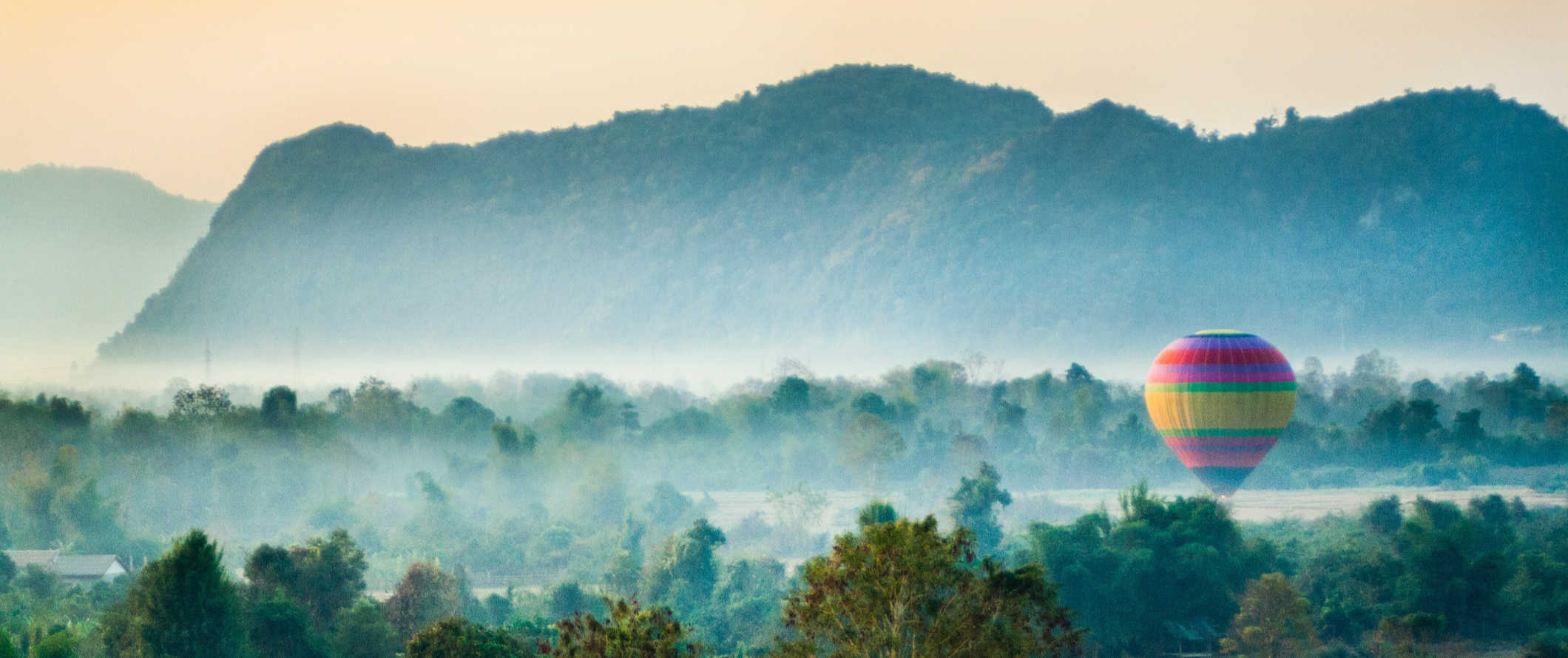
Public transportation – Public transportation costs from a few pennies to a few dollars, with Singapore and Malaysia offering the most comprehensive public transportation systems. In Thailand, local buses cost around $0.25 USD per trip, while the Metro and Skytrain in Bangkok cost $0.50-1.50 USD per trip. In Cambodia, a bus ticket in Phnom Penh costs just $0.40 USD per ride.
Major cities generally have subway systems but mostly you’ll be using the bus or shared taxis to get around.
Tuk-tuks (small, shared taxis with no meter) are available around much of the region and require a bit of haggling. They usually have 3-6 seats and generally cost more than public transportation but are faster. To find a reputable driver, ask your accommodation as they usually know someone. Tuk-tuk drivers can often be hired for the day for a discounted rate (this is what a lot of people do to visit the Killing Fields and Angkor Wat in Cambodia, for example).
Taxi – Taxis in the region are generally safe, though it’s not uncommon to have to haggle. Scams to rip you off aren’t uncommon either, so always ask your accommodation to call you a taxi whenever possible so you know you’ll get a reputable company.
In Singapore and Indonesia, taxi drivers do put on the meter. In Bangkok, you can get taxi drivers to use the meter, but if you’re hailing one in a tourist area, he might try to avoid using it. In Vietnam, the meter is sometimes rigged, but if you can get a reputable company like Mai Linh, you won’t have any problems.
Ridesharing – Grab, DiDi, and Gojek are Asia’s answer to Uber. They work the same way: you hire a driver to take you somewhere via the app, and you can pay via the app or in cash. It’s often more affordable than a regular taxi, though drivers are a bit unreliable as the practice is not as widespread here as in other parts of the world.
Just keep in mind that some drivers are driving motorcycles so be sure to double check what kind of vehicle is picking you up if you don’t want to ride on the back of one.
Bus – The easiest and cheapest way to travel around Southeast Asia is by bus. The backpacker trail is so worn that there is a very well-established tourist bus system to take you anywhere. Buses costs vary between $5-25 USD for a 5-6 hour journey. Overnight buses cost $20-35 USD depending on distance (they often have reclining seats so you can get a decent sleep).
You can check ticket prices and book tickets for all the different bus companies across Southeast Asia at 12go.asia.
Train – Train service is limited in the region and not something to really consider when you travel Southeast Asia. You can take a train up and down the coast of Vietnam and there’s some limited scenic rails in Malaysia. Thailand is the only country that has an extensive train system that lets you travel all its regions (and onward to Singapore) from Bangkok.
The train prices in Southeast Asia are determined by distance and class. Night trains with sleeper cars are more expensive than day trains. The night train to Chiang Mai from Bangkok takes twelve hours and costs $27 USD for a sleeper seat. However, that same train during the day is $8-9 USD. In Vietnam, trains run up and down the coast and cost $60 USD from Hanoi to Ho Chi Minh City.
Flying – The cost of flying around Southeast Asia has come down in recent years due to the rise of low-cost airlines. Scoot, Jetstar, and AirAsia are the biggest. Nok Air has a lot of flights within Thailand , and VietJet Air is popular in Vietnam . Lion Air serves Indonesia , but its safety record is really spotty and I personally would not fly them. If you book early, you can save on fares, as most of the airlines offer deeply discounted fare sales all the time, especially Air Asia.
Just make sure that the airport these budget airlines fly into isn’t too far out of your way (transportation from the secondary airport sometimes negates the savings from using the budget airline itself).
Also, keep in mind that you usually must pay to check your baggage on these cheap flights. If you wait to pay for your luggage at the gate, you end up paying almost double. Travel carry-on only to avoid this added cost.
All in all, I only recommend flying if you are pressed for time or find a super cheap deal. Otherwise, stick to the bus.
Hitchhiking – Hitchhiking in Southeast Asia is safe, though popularity of the practice varies by country (it’s more common in Malaysia, but not so much in Cambodia). Dress respectably, smile while making eye contact with drivers, and use a cardboard sign to tell people where you’re headed. Be prepared for long bouts of no pick-ups, especially if you’re traveling through more rural areas. Pack plenty of water and food. Also, make sure the people picking you up understand you’re hitchhiking and not flagging down a taxi.
Hitchwiki is a great resource for hitchhiking tips.
Car rental I don’t recommend renting a car in Southeast Asia. Rental cars are expensive ($40 USD per day or more) and the roads here are in poor shape. I would never drive around the region.
When to Go to Southeast Asia
The best time of year to visit Southeast Asia is from November to April when temperatures are milder (though temperatures vary drastically by region). It may be mild in Thailand in January and hot in Malaysia but in Northern Vietnam, it’s cold! Also, one of the biggest mistakes people make is not taking into account the rainy season. In some cases it won’t make a big difference but definitely does if it’s a beach trip.
In Indonesia, the best time to visit is April to October. Temperatures average 24-30ºC (75-86ºF), and the weather is mostly dry. July to September is the peak holiday season and when you can expect to pay the highest rates. December to February is the rainy season.
In Malaysia, January-March and June-September are the best time to visit, as these months have the lowest average rainfall. It is still hot and humid during this time though. The rainy season is from October to December. Singapore’s climate/weather is much like Malaysia’s.
In Vietnam, the weather varies by region. In Central Vietnam (including Hoi An and Nha Trang), January-May is the best time to visit because it is dry and the temperatures average 21-30°C (70-86°F). June to August is also a decent time to visit. If you want to stick around Hanoi, March to April is great, or October to December (for mildest temperatures). The rainy season is May-September.
Thailand has three seasons: hot, hotter, and hottest. It’s always warm, though the weather is nicest between November and February (which is also peak tourist season). Bangkok is “coolest” and driest during this time (but still averaging a hot 29°C/85°F each day). April and May are the hottest months, and the rainy season is June-October. The gulf islands get pretty rainy from August to December.
The dry season in Cambodia is from November-May and the cool season is from November-February (and when most people visit). Temperatures during this time are still high, but humidity is lower. Laos has the same cool season as Cambodia, with the dry season running from November-April.
In the Philippines, it’s mostly warm all year long with an average daily high of 26°C (80°F). There are rainy and dry seasons and temperatures are hot and dry from March-May and cooler December-February. The best time to visit is between January-April when it’s less humid. Monsoon Season is July-October.
For more information on when to go to places, visit the specific country guides.
How to Stay Safe in Southeast Asia
Southeast Asia is an incredibly safe place to backpack and travel — even if you’re traveling solo and even as a solo female traveler. Violent crime is super, duper rare. Petty theft (including bag snatching) is the most common type of crime in Southeast Asia, especially around popular tourist landmarks. Always keep your valuables out of reach on public transportation and in crowds just to be safe. Never leave your valuables unattended while at the beach and always keep a hold of your purse/bag when out and about as bag snatching is common.
That said, outside touristy areas, theft is really rare. Heck, it’s pretty rare in touristy areas too! But a little vigilance goes a long way and it’s better to be safe than sorry.
There are some common scams around that you’ll want to be aware of, such as the motorbike scam. This involves a bike rental company trying to charge you for damage to the bike that you didn’t cause. To avoid this, always take photos of your rental before you leave so you can protect yourself from baseless claims.
Another common scam involves a tuk-tuk driver taking you somewhere you didn’t want to go in hopes you’ll buy something from the shop/restaurant he dropped you off at (he gets a commission if you do). Simply refuse to buy anything and demand to go back to where you were — or find another driver.
For other common travel scams, read this post about major travel scams to avoid in the region .
Solo female travelers should feel safe here, though it’s generally a good idea to avoid walking around alone at night just to be safe. It’s always a good idea to carry some extra cash to get home in a taxi if you need to. Additionally, always keep an eye on your drink at the bar and never accept drinks from strangers. Be sensible when it comes to dating while traveling and meeting people in public places. As I’m not a woman, please check out some solo female travel blogs to get the best insight.
Overall, the people who get in trouble here tend to be involved with drugs or sex tourism. Avoid those two things and you should be fine. Keep in mind that it’s not always obvious how old someone is or if they’re a sex worker so be mindful when getting involved in romantic interactions. Also, penalties for drug use in this region are stiff so even if you’re here to party, skip the drugs.
Always trust your gut instinct. Make copies of your personal documents, including your passport and ID. Forward your itinerary along to loved ones so they’ll know where you are.
For more in-depth coverage of how to stay safe in Southeast Asia, check out this post that answers some frequently asked questions and concerns.
The most important piece of advice I can offer is to purchase good travel insurance. Travel insurance will protect you against illness, injury, theft, and cancellations. It’s comprehensive protection in case anything goes wrong. I never go on a trip without it as I’ve had to use it many times in the past. You can use the widget below to find the policy right for you:
Southeast Asia Travel Guide: The Best Booking Resources
These are my favorite companies to use when I travel. They consistently have the best deals, offer world-class customer service and great value, and overall, are better than their competitors. They are the companies I use the most and are always the starting point in my search for travel deals.
- Skyscanner – Skyscanner is my favorite flight search engine. They search small websites and budget airlines that larger search sites tend to miss. They are hands down the number one place to start.
- Hostelworld – This is the best hostel accommodation site out there with the largest inventory, best search interface, and widest availability.
- Agoda – Other than Hostelworld, Agoda is the best hotel accommodation site for Asia.
- Booking.com – The best all around booking site that constantly provides the cheapest and lowest rates. They have the widest selection of budget accommodation. In all my tests, they’ve always had the cheapest rates out of all the booking websites.
- Get Your Guide – Get Your Guide is a huge online marketplace for tours and excursions. They have tons of tour options available in cities all around the world, including everything from cooking classes, walking tours, street art lessons, and more!
- SafetyWing – Safety Wing offers convenient and affordable plans tailored to digital nomads and long-term travelers. They have cheap monthly plans, great customer service, and an easy-to-use claims process that makes it perfect for those on the road.
- LifeStraw – My go-to company for reusable water bottles with built-in filters so you can ensure your drinking water is always clean and safe.
- Unbound Merino – They make lightweight, durable, easy-to-clean travel clothing.
Get the In-Depth Budget Guide to Thailand!

My detailed 350+ page guidebook is made for budget travelers like you! It cuts out the fluff found in other guidebooks and gets straight to the practical information you need to travel around Thailand. You’ll find suggested itineraries, budgets, ways to save money, on and off-the-beaten-path things to see and do, non-touristy restaurants, markets, bars, safety tips, and much more! Click here to learn more and get your copy today.
Southeast Asia Travel Guide: Related Articles
Want more info? Check out all the articles I’ve written on Southeast Asia travel and continue planning your trip:

The 4 Best Hostels in Singapore
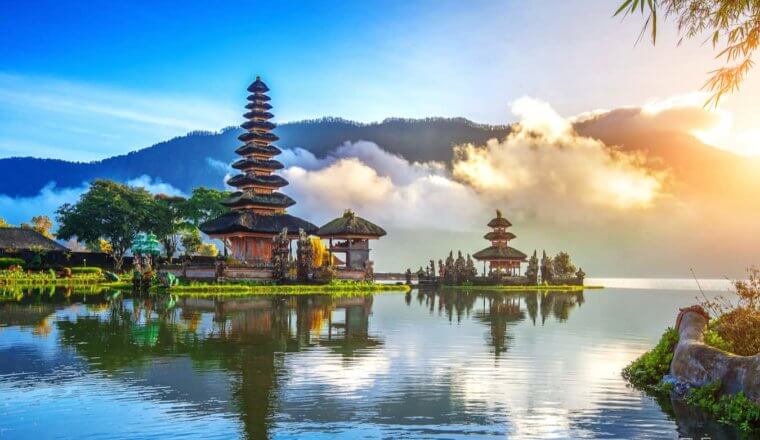
The 6 Best Hostels in Bali
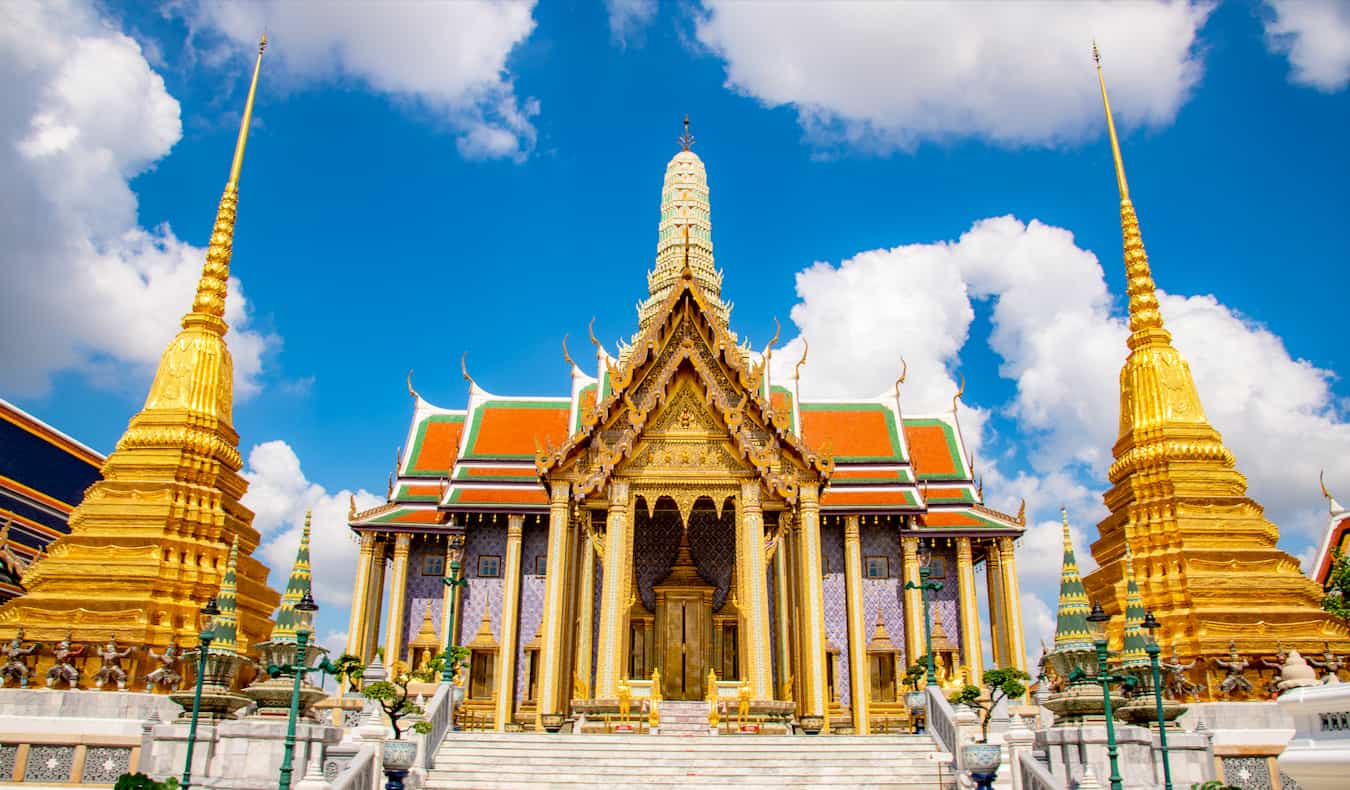
The 22 Best Things to Do in Bangkok
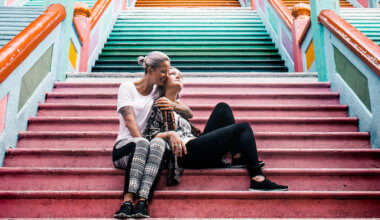
5 LGBTQ Travel Tips for Asia

Is Southeast Asia Safe for Travelers?
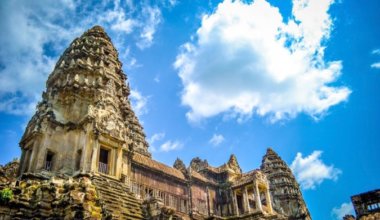
Backpacking Cambodia: 3 Suggested Itineraries for Your Trip
Get your free travel starter kit.
Enter your email and get planning cheatsheets including a step by step checklist, packing list, tips cheat sheet, and more so you can plan like a pro!

- Where To Stay
- Transportation
- Booking Resources
- Related Blogs

IMAGES
VIDEO
COMMENTS
To Associated With Us Call or WhatsApp - 8368957051Modicare Thailand Trip कैसे Qualify करे || Road Map To Thailand || ऐसे करे प्लान अपना ...
#modicare_samir_modi_global_plan #modicarebusinesstips #modicareoffer #modicaresuccessstory #modicarenyeplansekaisekaamkre #modicarebusinessplanbenefits2022 ...
4. Mosquito Spray. You can find mosquito spray in Thailand at pretty much every convenience store, and is likely to be cheaper than in your home country. However, if you have sensitive skin, you may want to look for a higher quality brand in your home country before you leave. Your mosquito spray should contain DEET.
Your next stop on this 2 week tour of Thailand is the town of Kanchanaburi. This is around 100 miles west of Bangkok, and you have a few options for getting here. First, you can take public transport. A train runs from Bangkok's Thonburi station, and takes around 3 hours to Kanchanaburi.
If you have 3 weeks, then follow the sections on Bangkok and northern Thailand, but then pick either the Andaman or the Gulf Coast for your last week on the beaches and islands. If you have 2 weeks, then do Bangkok, Sukhothai and Chiang Mai in week one. From there, fly down to one of the southern coasts for a week of nature and beaches.
1 Day in Koh Phi Phi. For the last day in your 7 day Thailand itinerary, soak in the picturesque views at Koh Phi Phi. Koh Phi Phi is actually a chain of three tiny islands, though only one of them, Phi Phi Don, is inhabited. On Phi Phi Don you can find lots of cheap backpacker hostels, bars, clubs, clothing stores, and souvenir shops.
With Wanderlog's mobile travel planner on Android and iOS, access and edit your trips wherever you go — even while offline. 4.9 on App Store, 4.7 on Google Play. Keep your places to visit, flight/hotel reservations, and day-by-day itineraries for your trip to Thailand in our web and mobile app vacation planner.
Learn how to achieve Thailand trip by TBD Mr. Munish Chopra@Official Modicare India @Official Modicare India - SPBM @Munish Pooja Chopra @Surekha Bharg...
If you're planning a two-week trip to Thailand, you may wonder whether it's worth bringing a travel camera.While smartphones like the Huawei P30 Pro have come a long way in terms of camera quality, a dedicated camera like the Sony A7IV camera or a Fujifilm x100f can still offer a number of advantages.. 4 days in Phuket itinerary. Phuket is a beautiful island destination in Thailand that is ...
The official site of Tourism Authority of Thailand. Amazing Thailand, Travel information, Travel guide, maps, hotels, accommodation, attractions, events & festivals, food, culture, shopping information to help you plan your Thailand vacations.
Koh Lanta: 3-5 days. Get ready to rent a scooter to explore this island and take trips to other islands to spot emerald green waters. Koh Lanta is more chilled but still packed with plenty to do. DAY ONE: Go snorkelling at Koh Rok, often referred to as one of the best places to snorkel in Thailand.
2. Decide How Many Days to Stay. a classic Thailand itinerary. We suggest you take at least a week for your first trip to see a spectrum of the highlights in the top three cities. 7-10 days: Bangkok (2-3 days), Chiang Mai (2-3 days), and a southern island like Phuket or Koh Samui (3-4 days).
tip: You can add a specific destination by right-click on the map. tip: Please be advised that not all places and routes are accurate. tip: Rush itinerary could causes less enjoyable trip. ThaiRoadTrip.com helps you explore Thailand's tourist attractions, hotels and restaurants, simplify your trip planning and get the most out of your vacation.
Samir Modi Azadi Plan 2.O offers you 12 areas of income The path to building your Modicare business and to Azadi is simple - talk to people about Modicare, use Modicare products, sell Modicare products and build teams of users and sellers. Self Use: Confidence comes by doing things yourself. Hence, it's important that you first become a
Modicare Thailand forein Trip Qualification Criteria by Modicare on Leap platform: https://youtu.be/ov6K4ms0h4c You can start a month's Additional...
From packing to local etiquette when you're there, these top tips can help visitors plan the perfect trip to Thailand. Read article. Transportation. From commuter to long-haul, third-class seats to luxury cabins, wooden benches to sleepers, the following are some of the best train trips in Thailand.
According to the U.S. Embassy in Thailand, your passport will need to be valid for at least the next 6 months after you arrive, and you'll need a blank page for an immigration stamp. That stamp is your visa to stay up to 30 days! If you're planning on staying more than 30 days in Thailand, you can apply for a tourist visa before you leave ...
Modicare Thailand Trip Experience 2023 || Modicare Thailand Trip (Part - 5)🙏*Thank you for watching*🙏👉👉 - Subscribe, Like, Comment And Share - https://ww...
U.S. citizens don't need a visa for many countries in Southeast Asia, and where a visa is required, it's usually pretty easy to get. Assuming the purpose of your trip is tourism only, here are the latest visa requirements: Thailand: U.S. citizens can enter Thailand visa-free for up to 30 days. Vietnam: U.S. citizens need a visa to enter ...
The Ultimate 10 Day Thailand Itinerary. Posted on Last updated: March 7, 2024. Categories Asia , Guides , Thailand , Travel Guides. Creating a 10 day Thailand itinerary is not an
Notice: Are you asking for travel advice about Thailand? Read what redditors had to say in the weekly destination thread for Thailand. You may also enjoy our topic: Thailand off the tourist trail. I am a bot, and this action was performed automatically. Please contact the moderators of this subreddit if you have any questions or concerns.
A one-day pass is $37 USD, while a 1-week pass is $72 USD. If you're here for multiple days, be sure to hire a driver and see some of the more out of the way ruins away from the main temple complex (and the crowds). 2. Explore Bangkok. Bangkok is the hub of travel activity in Southeast Asia.
Thailand is perfect for families and kids of all ages. Beaches and watersports abound, of course, as the country is blessed with 3148km (1956 miles) of coastline. But Thailand also boasts 156 national parks, 120 protected forest areas and 58 wildlife sanctuaries covering more than 30% of the country, providing ample opportunity for tramping and animal spotting.